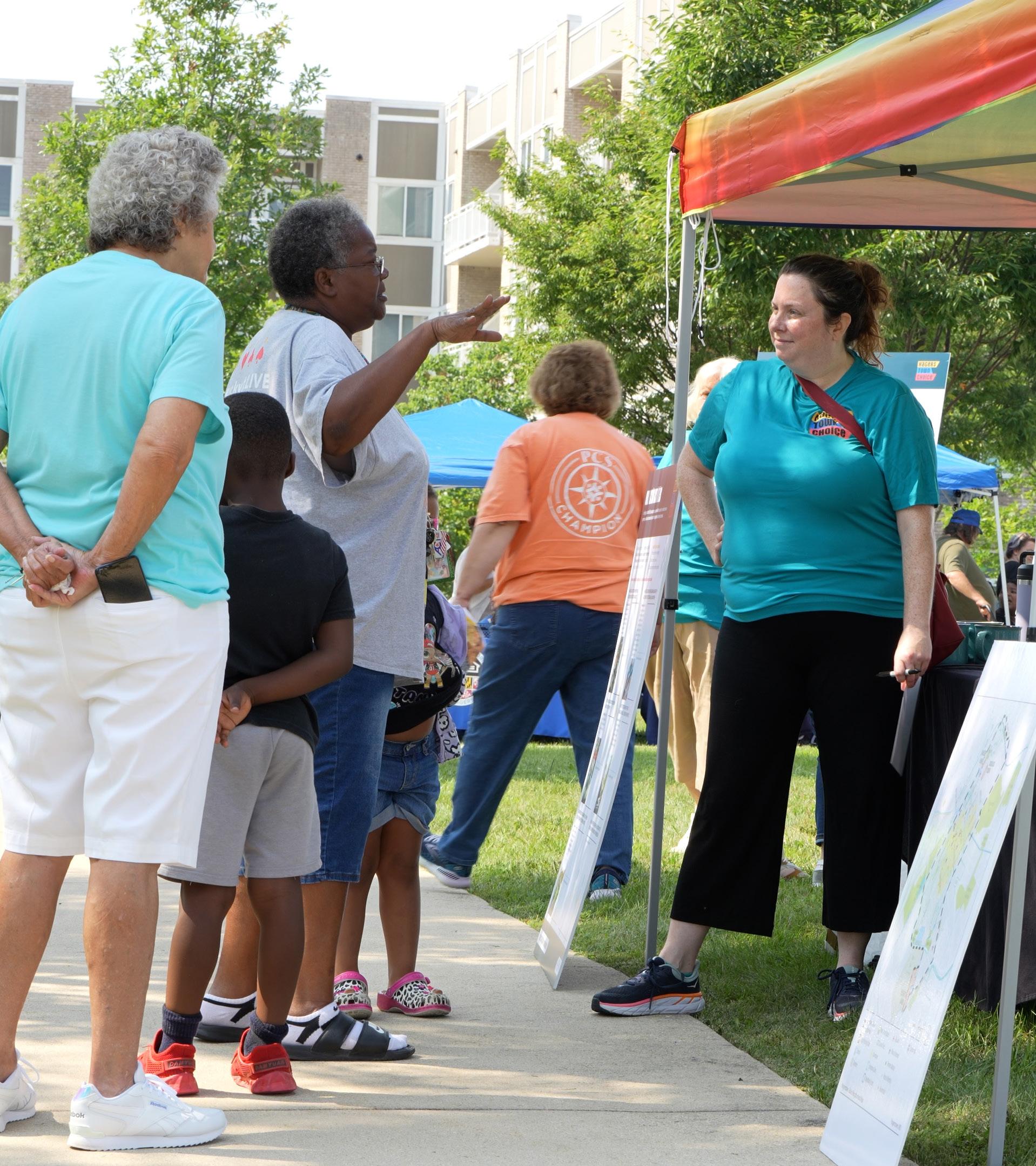hagerstown choice
OUTLINE WITH CONTENT




EXECUTIVE SUMMARY
PG 12
UNDERSTANDING THE PAST
PG 26 grow intro
THE PLANNING PROCESS
PG 44





EXECUTIVE SUMMARY
PG 12
UNDERSTANDING THE PAST
PG 26 grow intro
THE PLANNING PROCESS
PG 44
BUILDING ON... THE HOUSING LANDSCAPE
PG 58
BUILDING ON... ECONOMIC DEVELOPMENT
PG 88
BUILDING ON... SAFETY, HEALTH, AND WELLNESS
PG 104
BUILDING ON... CHILDREN AND YOUTH
PG 124
PEOPLE PLAN
NEIGHBORHOOD PLAN
PG 144
PG 140 HOUSING PLAN
PG 148
Housing Authority of Hagerstown
City of Hagerstown
WRT
Alyssa (Youth Ambassador)
Jennifer Colvin
Lisa Knight
Monique Broadus
Pam Hutchinson
Co-Chair: Housing Authority of Hagerstown
Co-Chair: City of Hagerstown
Co-Chair: Community Action Council
CASA
Chamber of Commerce of Washington County
Greater Hagerstown
Habitat for Humanity
Hagerstown Home Store
REACH of Washington County
The Hope Center Rescue Mission
Co-Chair: Hagerstown Housing Authority
Co-Chair: City of Hagerstown
Subcommittee Chair, Transportation: Community Action Council
Subcommittee Chair, Employment: Western Maryland Consortium
Subcommittee Chair, Public Safety: Hagerstown Police Department, Hagerstown Housing Authority
Subcommittee Chair, Health: Washington County Health Department, Community Free Clinic
Subcommittee Chair, Youth Services: Boys and Girls Club of Washington County
Subcommittee Chair, Early Education/K-12: Washington
County Head Start, Washington County Board of Education
Subcommittee Chair, Downtown and Economic Development: City of Hagerstown
Bester Community of Hope
Big Brother’s Big Sister’s Mentoring
Board of Education of Washington County
Brooke’s House
Brothers United Who Dare to Care
Calvalry Temple Apostolic Church
Cameo House
CASA
Chamber of Commerce
Chamber of Commerce - Spanish 4 All
Chamber of Commerce - Tele Plus
Children In NeedChrist’s Reformed Church
Crystal’s Closet Outreach Ministries
Dad’s Connection
Division of Rehabilitation Services (DORS)
Easterseals
Ebenezer AME Church
Greater Hagerstown
Hagerstown Community College
Horizon Goodwill
Innovative Therapeutic Services
John Wesley Preschool
Judy Center
Kings Apostle Holy Church
Lifehouse Church
Meditation First
Meritus Health
Office of Consumer Advocacy - Soul Haven
Potomac Case Management
Robert W Johnson Community Center
Second Christian Church
South Hagerstown High School
The HUB at USMH
The Judy Center
Tribe Cold Press
United Way of Washington County
University of Maryland Extension
Valor Excel
Washington County Library
Washington County One Stop Job Center
Washington County DSS
Washington County Department of Business and Economic Development
Washington County Department of Commerce
Washington County Public Schools
Zion Baptist Church
Accessible/Accessibility – Easy to approach, reach, and/or use a site, facility, service, and/or program.
Area Median Income (AMI) – Area Median Income is the midpoint of a region’s income distribution – half of households earn more than the median and half earn less than the median. The median income for the City of Hagerstown was $48,481 in 2022 (US Census).
Choice Neighborhoods – Sponsored by the US Department of Housing and Urban Development (HUD), Choice Neighborhoods Planning Grants support the development of comprehensive neighborhood revitalization plans that focus on three core goals: Housing, People, and Neighborhoods. To achieve these goals, communities must develop a comprehensive neighborhood revitalization strategy or “Transformation Plan.”
CNI – Choice Neighborhoods Initiative.
Early Action Activity (EAA) – Up to $100,000 of Choice Neighborhoods Planning Grant funds to be used for limited physical neighborhood improvements during the two-year planning process.
Food Insecurity – The condition of not having access to sufficient food, or food of an adequate quality, to meet one’s basic needs.
Free or low-cost food resources –Programs that provide food resources to meet one’s basic needs for little to no-cost. Examples include programs such as SNAP and WIC, services such as food banks and feedback centers, and free or reduced meal programs.
HHA – Hagerstown Housing Authority
Housing, affordable – Housing is considered affordable if a family pays no more than 30% of its household income on housingrelated costs.
Housing availability – Quantity of available, unoccupied residential property in the market that meets the needs of the person and/or family looking to rent or purchase the property.
Housing, cost burden - Paying more than 30% of gross household income on mortgage or rent.
Housing, insecure – Characterized by a number of challenges such as having trouble paying one’s rent or mortgage, overcrowding, moving frequently, and/or spending the bulk of household income on housing.
Housing, moderately priced – Rental or homeownership housing that is affordable to households earning between 50 and 80 percent of area median income (note: Median Household Income in the City of Hagerstown is $48,481, and within the Hagerstown Choice Neighborhoods boundary the Median Household Income is $24,983).
Housing, market rate – Housing generated by the real estate market without direct subsidy.
Housing, public - The term “public housing” refers to housing that receives funding under an Annual Contributions Contract (ACC) and in accordance with section 9 of the US Housing Act of 1937. A public housing project is a group of such housing units that has a single Project Number assigned by the Director of Public Housing of a HUD Field Office and has, or had (in the case of previously demolished units), housing units under an ACC and in accordance with section 9 of the US Housing Act of 1937. Applicants must be clear throughout their application as to the project they are targeting.
Housing rehabilitation – The repair, preservation and/or improvement of a building or structure.
Housing redevelopment – Process to rebuild or restore housing in measurable state of decline, disinvestment, or abandonment. It prioritizes that residents of a community are empowered to improve their quality of life and environment as a result of sound planning practices.
Housing, replacement – This refers to housing units (public housing and project based voucher (PBV) housing) that will replace any Parkside Homes, Douglass Court, or Frederick Manor units that are redeveloped through the implementation of the Choice Neighborhoods Transformation Plan.
Housing, supportive – A special combination of housing and supportive services designated to respond to the individual needs of its residents to live more stable, productive lives.
HUD – U.S. Department of Housing and Urban Development.
LIHTC - The Low-Income Housing Tax Credit provides a tax incentive to construct or rehabilitate affordable rental housing for low-income families. LIHTC subsidizes the acquisition, construction, and rehabilitation of affordable rental housing for low and moderate-income tenants.
Master Developer – For-profit or non-profit partners carrying out physical revitalization of a mixed-finance project site, bearing financial risk and has primary responsibility with the Public Housing Authority (PHA) for development of housing units and/or nonresidential structures.
MD DHCD – Maryland Department of Housing and Community Development. The Department implements housing policy that promotes and preserves homeownership and creating innovative community development initiatives to meet the challenges of a growing Maryland.
MCHP – Maryland Children’s Health Program provides free coverage to eligible uninsured children whose family earns too much money to get Medicaid, but not enough to afford private health insurance.
Mixed-Income Community – Intentionality of accommodating residents with a range of income levels in the housing located within a specified geographic area.
QAP – Qualified Allocation Plan (QAP). A document that outlines the criteria and priorities for distributing federal Low Income Housing Tax Credits (LIHTCs).
SNAP – Supplemental Assistance Nutrition Program. SNAP provides food benefits to low-income families to supplement their grocery budget so they can afford nutritious food essential to health and wellbeing.
SSI – Supplemental Security Income. SSI provides monthly payments to people with disabilities and older adults who have little or no income resources.
TANF – Temporary Assistance for Needy Families. TANF is a state-run program that provides families with financial assistance and related support services.
Transformation Plan – Communities that receive a Choice Neighborhoods Planning Grant from HUD must develop and implement a comprehensive neighborhood revitalization strategy that addresses the three core goals of the Choice Neighborhoods Initiative (Housing, People, Neighborhood). The Transformation Plan becomes the guiding document for the revitalization of the public and/or assisted housing units while at the same time, directing transformation of the neighborhood and creating positive outcomes for families.
WIC – Special supplemental nutrition program for Women, Infants, and Children (WIC). It provides federal grants to states for supplemental foods, health care referrals, and nutrition education for low-income pregnant, breastfeeding, and nonbreastfeeding postpartum women, and to infants and children up to age 5 who are found to be at nutritional risk.
This Outline with Content serves as a framework to continue the planning efforts to revitalize the Hagerstown Choice Neighborhoods area while placing residents at the forefront of this planning process. This document serves multiple key purposes as we continue to build momentum over the next year:
Understanding Hagerstown’s context and history, and past planning efforts
This Outline with Content provides a thorough overview of Hagerstown’s history and highlights how previous Plans and policy documents have shaped the city’s development and the Choice Neighborhoods footprint.
Through an extensive existing conditions analysis and feedback from HHA housing sites and neighborhood residents, as well as business owners, this document uncovers the most pressing community needs. These insights highlight topics that range from housing and employment to safety and wellbeing, laying the groundwork for the future. Throughout these sections, the Needs Assessment surveys data serves as a vital tool to ensure that future strategies are designed to meet the needs of the community.
Documenting community engagement and capacity building efforts
A major focus of the Hagerstown Choice Neighborhoods process is robust community engagement activities and capacity-building initiatives. These ensure that residents not only contribute to the Plan but are also empowered to take on leadership roles and are agents of change within their community. The involvement of Community Ambassadors and Task Forces highlights a residentand community-led approach to the planning process, making sure that the Plan reflects community aspirations and vision for the future.
The Hagerstown Choice Neighborhoods process will introduce a transformative vision for the area, grounded on the input and feedback gathered from residents.
This Outline with Content paints a picture of the community’s current conditions but also sets the stage for a collective vision for the future, driven by a thriving and passionate Hagerstown community. Moving forward, the Outline with Content will become a living document that incorporates ongoing feedback and will eventually evolve into goals and strategies that ensure the success of the Hagerstown Choice Neighborhoods community.
Hagerstown, also known as the ‘Hub City’, is a regional center for jobs, housing, services, arts, and entertainment. The community has a strong sense of pride in its history and there is excitement for the future. The Hagerstown Choice Neighborhoods is an opportunity to GROW community capacity, BUILD on successful partnerships, and allow everyone a future where they can THRIVE.
Hagerstown got its nickname the “Hub City” in the late 19th century with the expansion of the railroads into western Maryland, connecting the city to commerce and industry and bringing a population boom.
Today, Hagerstown continues to be a center of employment and economic growth in the Western Maryland panhandle. The Hub City and surrounding areas have seen a new wave of jobs and development due to its strategic location at the intersection of I-81 and I-70, resulting in industries like warehousing, logistics, manufacturing, and medical/health boosting employment. Hagerstown is a hub for arts and entertainment, the Atlantic League of Professional Baseball (ALPB) (Go Boxcars!), local government offices, community services, and a vibrant and diverse community. And with its relative affordability compared to metros such
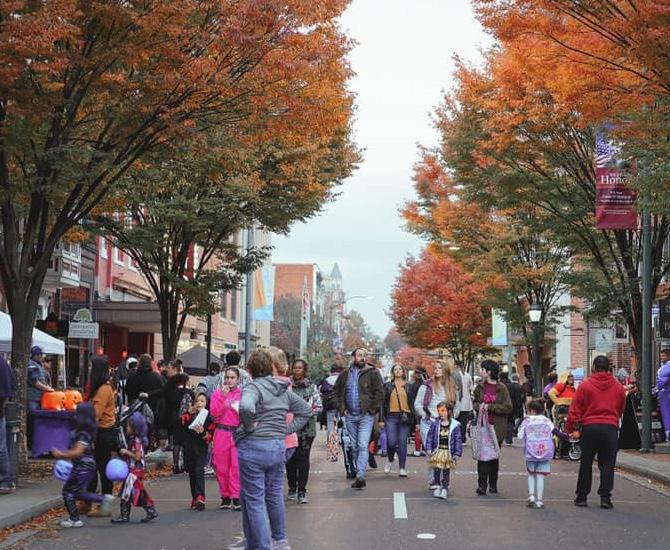
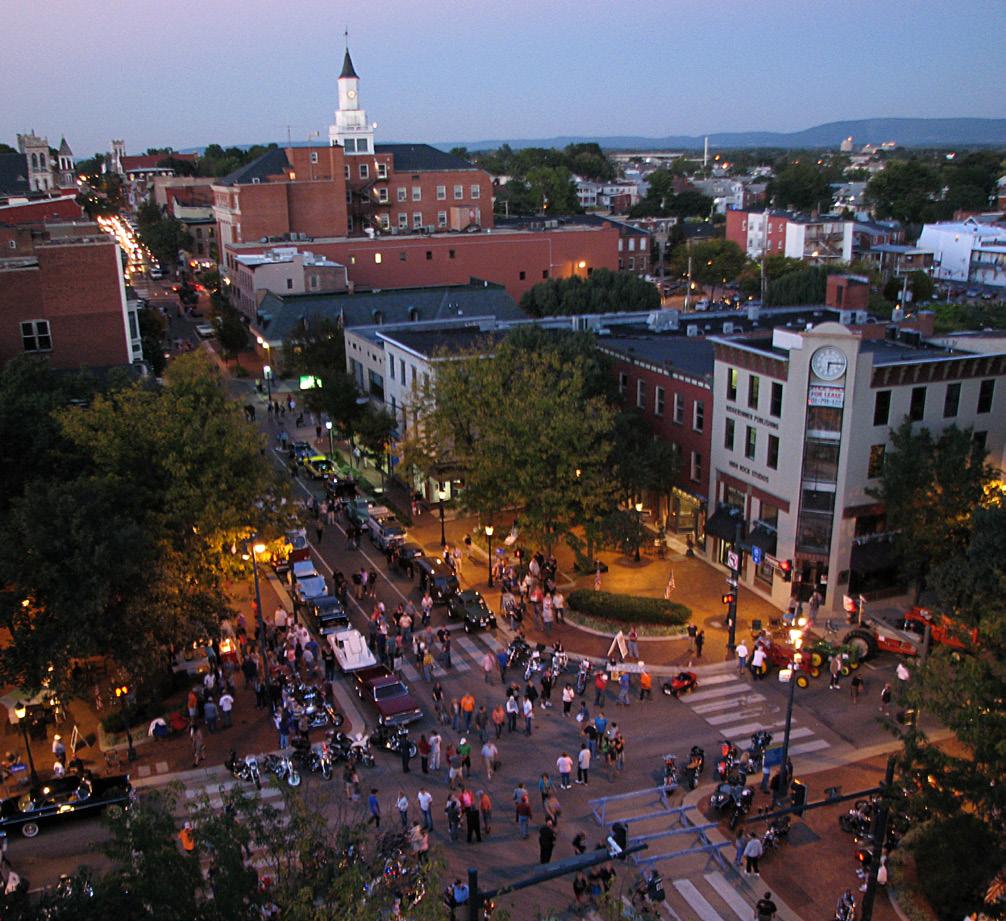
as Baltimore and Washington DC, people are relocating to the area for a lower cost of living while still being in commuting distance of the Baltimore-DC metro area.
Moving forward, there is an opportunity to think about what’s next for the Hub City and those who call it home. While the city has experienced great growth and success, it has also experienced significant challenges, particularly for its most vulnerable communities. The city has a persistently higher poverty rate when compared with Washington County and the state of Maryland. Like many communities across the US, Hagerstown is facing challenges related to the ongoing opioid epidemic which is causing a strain on community health and public safety resources. Housing affordability is also a growing concern, with more and more people spending 30% or more of their income on housing costs.

Source: WRT
Hagerstown is located in Maryland’s Western Panhandle, within commuting distance to the Washington DC and Balitmore metro areas, and close to both the Pennsylvania and Maryland borders.

As the recipient of one of the US Department of Housing and Urban Development’s Choice Neighborhoods Planning Grants, the Hagerstown Housing Authority and the City of Hagerstown kicked off the Hagerstown Choice Neighborhoods Planning Initiative in November 2023. The initiative brings together the Housing Authority, City, community partners, and – most importantly – Hagerstown Housing Authority residents and the larger community to envision what a neighborhood of choice
looks like in Hagerstown. The planning process will be centered around three of the Housing Authority’s sites in and adjacent to downtown Hagerstown – Parkside Homes, Douglass Court, and Frederick Manor.
The Hagerstown Choice Neighborhoods Plan is organized around the GROW, BUILD, THRIVE framework and the subsequent sections of the Outline with Content will provide a comprehensive overview of community engagement, existing conditions analysis, results of the Resident Needs Assessment, Neighborhood Survey, and Business Owner Survey, and a high-level vision for the People, Neighborhood, and Housing Plans.

FIGURE 2 | HAGERSTOWN CHOICE NEIGHBORHOODS
Source: WRT
The Hagerstown Choice Neighborhoods includes downtown Hagerstown and is in close proximity to many city parks and assets/services generally located in downtown Hagerstown.
The Choice Neighborhoods Initiative focuses on three core areas:
• Housing: improving distressed public and assisted housing with high-quality mixedincome housing that is well-managed and responsive to the needs of the surrounding neighborhood.
• People: enhancing the quality of life for residents with regards to employment and income, health, and children’s education.
• Neighborhood: improving conditions through public and private reinvestment regarding safety, economic development and commercial activity, connectivity and mobility, and parks and open space.
The Hagerstown Choice Neighborhoods represents an opportunity to continue the energy and momentum around the revitalization of downtown Hagerstown by providing a strong foundation for the community and its neighborhoods to GROW community capacity and leadership, BUILD on existing partnerships and programs, and prepare to THRIVE through the implementation of the Choice Neighborhoods Transformation Plan that will create a vibrant, equitable, and welcoming neighborhood for all.
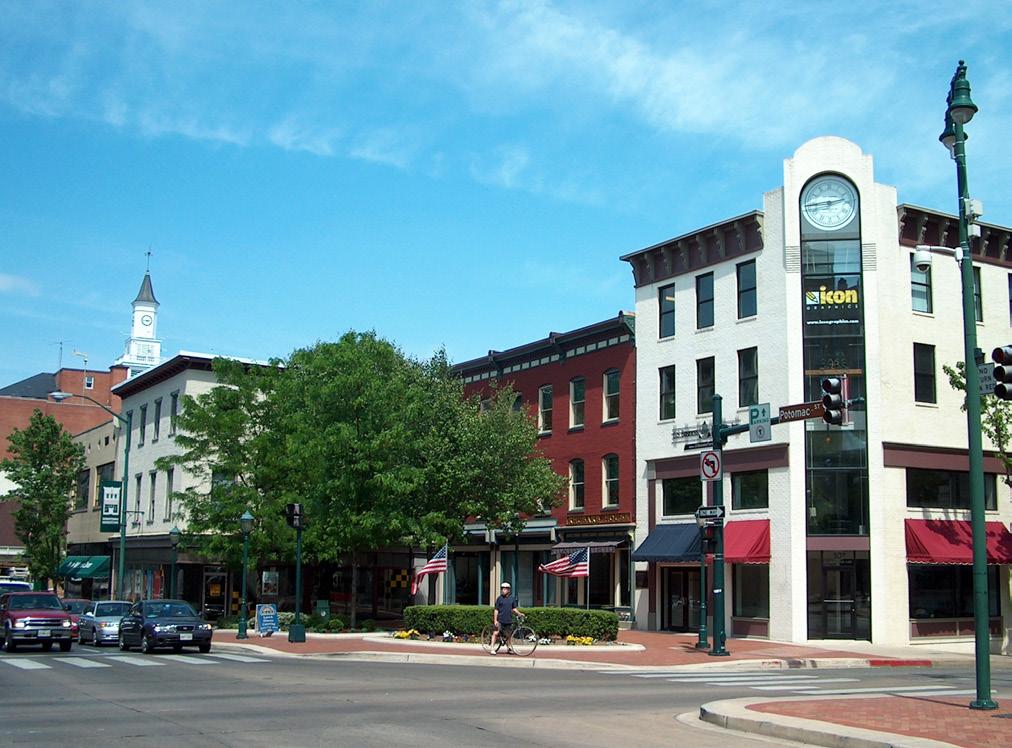
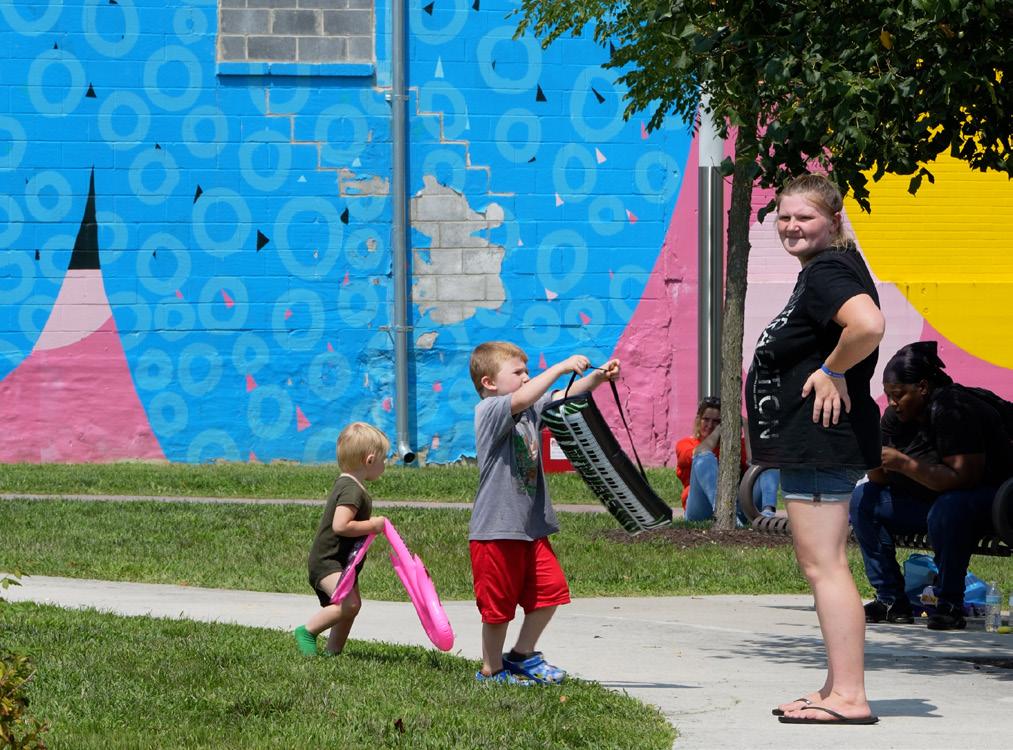
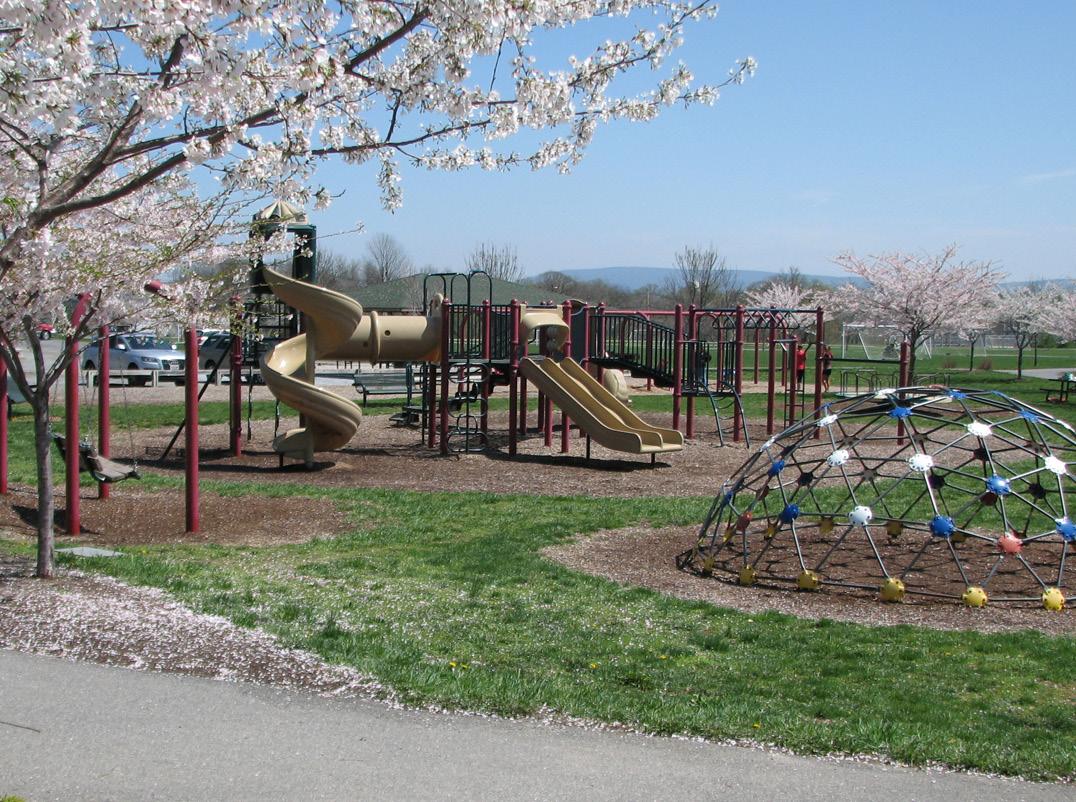

The Hagerstown Choice Neighborhoods is guided by the voices of the community including Hagerstown Housing Authority residents, neighborhood residents, and community organizations and partners.
Led by the Hagerstown Housing Authority and the City of Hagerstown, the Housing Task Force and People + Neighborhood Task Force meet on a regular basis to help guide the planning process and provide valuable insights and feedback. The members of these Task Forces will be key partners and collaborators in the development and implementation of the Hagerstown Choice Neighborhoods Plan.
The Hagerstown Choice Neighborhoods will only be successful if the community has the tools, programs, and support they need to
fully engage in the Plan’s implementation. The Hagerstown Choice Neighborhoods Community Ambassador Program is engaging a group of committed Housing Authority residents from Parkside Homes, Douglass Court, and Frederick Manor to be stewards of the planning process and ensure their neighbors have access to information and can fully engage in events and meetings. Additionally, a Leadership Series is being planned for late fall 2024 to provide community members with the tools and resources to be implementation partners for the Plan.
Hagerstown Choice Neighborhoods has been able to engage over 450 community members since its launch in fall 2023. From resident workshops to community fairs to surveying efforts, Hagerstown Choice Neighborhoods is listening to and learning from the community.

A key component of building out the Hagerstown Choice Neighborhoods Plan is understanding community assets, needs, priorities, and opportunities.
Through extensive data analysis, mapping, and surveying efforts, four key focus areas have emerged that help to tell the story of the Hagerstown Choice Neighborhoods today:
• Housing Landscape: 88% of Hagerstown Housing Authority residents at Parkside Homes, Douglass Court, and Frederick Manor would like to return to these properties following the redevelopment through the implementation of the Choice Neighborhoods Plan. This finding speaks to the strong sense of place and community belonging residents feel, but also indicates that the stability and affordability provided by these housing sites is highly needed in the community. Housing affordability is a key issue in the Hagerstown Choice Neighborhoods and larger region, with a limited supply of quality, affordable housing and a mismatch between wages and housing costs.

• Economic Development and Opportunity: Downtown Hagerstown has seen an exciting resurgence in the last 10 years. Significant investment in infrastructure, educational institutions, businesses, entertainment, and the arts has established Hagerstown as a regional destination. Additionally, growth in warehousing and logistics, manufacturing, and healthcare/medical facilities across the city and larger region has and continues to add millions of square feet of new development and hundreds of new jobs. A key question for Hagerstown Choice Neighborhoods is how the residents at Parkside Homes, Douglass Court, and Frederick Manor as well as across the larger Choice Neighborhoods area can benefit from and partake in these opportunities to enhance economic mobility.




3 | COMMUNITY ASSETS
Source: Hagerstown Housing Authority; City of Hagerstown; WRT
• Health, Safety, and Wellness: The Hagerstown Choice Neighborhoods is a hub for social services, government agencies, and community organizations, mainly due to the inclusion of downtown Hagerstown in the Choice Neighborhoods boundary. These services and resources provide a strong foundation and support system for many within and outside of the Choice Neighborhoods area; however, there are still significant challenges when it comes to food access, mental and behavioral health, convenient transportation options to access resources, and perceptions of public safety.
• Children, Youth, and Education: Compared to both the city and the county, the Hagerstown Choice Neighborhoods has a higher percentage of community members 18 and younger. There are many great resources and partners that support the young people in the Choice Neighborhoods including afterschool programs such as the Boys and Girls Club, community centers such as the Robert W. Johnson Center, HeadStart programs, and multiple youth-focused organizations such as ENVY (Ending Needless Violence with our Youth Partnership), Girls Inc., and the Sumans Ave Homework Club. There are strong educational resources through Washington County Public Schools and parents are committed to supporting their children’s education. However, Hagerstown Choice Neighborhoods also faces challenges related to insufficient childcare facilities, a lack of evening programming/engagement activities for youth, and concerns around pedestrian safety that can limit accessibility to parks and other recreational resources.
Starting in fall 2024, the Hagerstown Choice Neighborhoods initiative will begin to develop the goals and strategies that will be the foundation for the implementation of the Plan and support a vibrant and equitable future for Hagerstown Housing Authority residents and the larger Choice Neighborhoods community.
The Hagerstown Choice Neighborhoods Plan will develop a Housing Plan, Neighborhood Plan, and People Plan that will provide tangible recommendations and a redevelopment program for the Choice Neighborhoods that will support a mixed-income community full of economic opportunities and supportive services that will allow everyone to thrive.

at a glance
There are several gaps that exist when comparing the City of Hagerstown and the Hagerstown Choice Neighborhoods with Washington County. Washington County presents a relatively stable picture; however, the City of Hagerstown, which comprises a significant portion of the county’s households (over 30%), faces considerably more challenges. Here, the household poverty rate rises to 25.5%, and the uninsured rate doubles to 6%. Within the Hagerstown Choice Neighborhoods, the situation is more severe, with nearly 50% of households living in poverty and over 51% relying on STAMP/SNAP benefits. These disparities underscore the need for targeted quality of life support and comprehensive neighborhood investment.
The Hagerstown Choice Neighborhoods process opens pathways to address these disparities and close some of the most pressing gaps within the Hagerstown/Washington County region. A great place to start is honing in on the areas of opportunity identified through the Needs Assessment and surveys. These areas include improving access to quality, affordable childcare, offering fresh food options for residents, local jobs paying livable wages, and increasing transportation options to healthcare facilities.
HAGERSTOWN CHOICE NEIGHBORHOODS HOUSEHOLDS
4,038
4,709
HOUSING UNITS
HOUSEHOLDS WITH POPULATION UNDER 18 25.3%
HOUSEHOLD POVERTY RATE 48.5%
POPULATION WITH NO HEALTH INSURANCE 6.6%
HOUSEHOLDS RECEIVING STAMP/SNAP 51.3%
CITY OF HAGERSTOWN
There is a rich history of innovation and collaboration in Hagerstown. Like many small cities across the US, the community has experienced both exciting growth and challenging times. The city has a track record of responding to obstacles with realistic and actionable plans that enhance quality of life and provide future opportunities for its residents.
Pre-colonial settlement
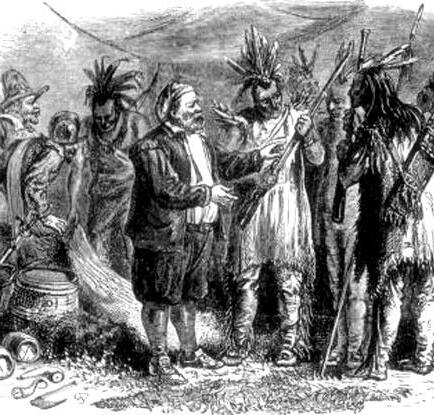
Elizabethtowne is established.
Jonathan Hager establishes a home at what is present day Hagerstown City Park.
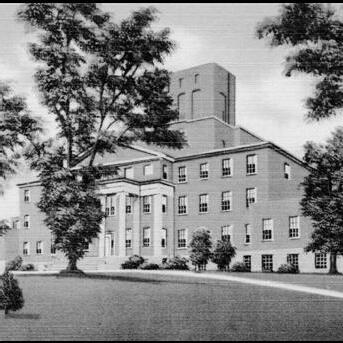
Washington County Hospital opens in Hagerstown.
Hagerstown High School, the first education facility in Hagerstown, opens.
City Farmers Market is established
The Maryland Theatre is built.
Industry and transportation industries continue growing in Hagerstown, bringing businesses to the area.
The town is incorporated to Washington County.
The town continues to grow rapidly.

The First National Road, which will pass by Hagerstown, begins construction.
Hagerstown population declines due to the manufacturing industry and slows economic development.
Hagerstown Junior College, later Hagerstown Community College, Maryland’s first community college, is established.
Parkside Homes is built.
Hagerstown Housing Authority is created.
Fairchild Aircraft establishes in Hagerstown and becomes the major employer in the area.
+ The Washington County Museum of Fine Arts opens in Hagerstown.
Hagerstown industrial boom continues.
The Doleman Museum is established by Marguerite Doleman.
Douglass Court and Frederick Manor are built.


Hagerstown becomes a railroad hub and center of trade and industry.
Battle of Hagerstown during the Civil War.
The Western Maryland Railroad completes the Hagerstown-Baltimore line.
Elizabethtowne is renamed to Hagerstown in honor of Jonathan Hager.
First railroad arrives to MD, bypassing Hagerstown. Other railroads also converge there, giving it the name of Hub City.
Hagerstown becomes a railroad hub and center of trade and industry.
+ HHA receives a Hope VI Grant Gateway Crossing.
Hagerstown is ransomed by the Confederate Army. The Washington County Free Library, the second oldest countywide library, is established in Hagerstown.
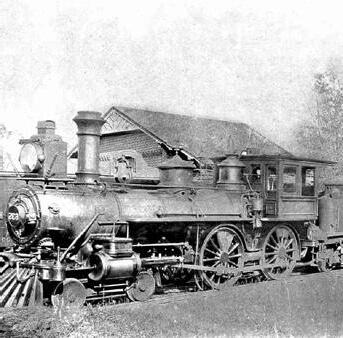
Hagerstown Community’s City Center Plan catalyzes investment and revitalization in the urban core.
The Great Recession caused increased unemployment, decreased home values, and stopped planned development in Hagerstown.
Barbara Ingram School for the Arts opens.
The University System of Maryland at Hagerstown is established.
Hagerstown gains population due to affordability and its location within major throughfares.
CW Brooks, a 60-unit affordable senior mid-rise building is built.
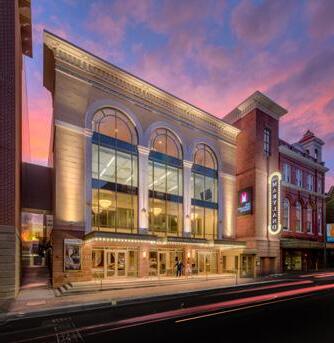
The Maryland Theatre is expanded into a full performing arts complex.
Meritus Park multipurpose stadium is opened.
+ The Robert W Johnson Community Center reopens after revitalization.
Hagerstown’s Cultural Trail opens.
Emerging from the Recession, Hagerstown continued to experience decreased investment in the urban core and high unemployment rates.
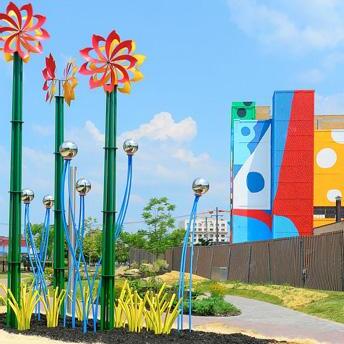
The area of Hagerstown was originally settled by various East Coast Native American tribes, including the Susquehannock, Piscataway, Catawba, and Lenni Lenape.
In 1739, Jonathan Hager purchases what he will later name “Hager’s Fancy” from Daniel Dulany, Maryland Loyalist politician. Jonathan Hager establishes a home and trading post at what is present day Hagerstown City Park. In 1762, Jonathan Hager establishes Elizabethtowne, named after his wife.
From the 1770s to early 1800s, the area continues to grow rapidly, due in large part to its location at the crossroads of the “Warrior Trading Path” and the First National Road. In 1814, Elizabethtowne is renamed to Hagerstown in honor of Jonathan Hager.
The United States’ first railroad, the Baltimore & Ohio, arrives in Western Maryland. While the B&O bypasses Hagerstown, other railroads converge there giving Hagerstown the name “Hub City.” By the 1850s, Hagerstown has become a railroad hub, a transportation and service center, and a key center for trade and industry.




In 1863 during the Confederate Army’s retreat from the Battle of Gettysburg, Union soldiers entered Hagerstown to prevent the Confederate forces from crossing the Potomac River. The Battle of Hagerstown ensued – it lasted seven hours, involved 2,000 soldiers, and resulted in nearly 200 casualties. In 1864, Hagerstown was one of three Maryland cities to be ransomed by the Confederate Army.
By the 1880s, the Hub City became a principal stop for four converging railroads, increasing industry and transportation, and bringing businesses like M.P. Moller Pipe Organ Co., Maryland Ribbon Co., Hagerstown Bookpinding & Printing Co., Beachley Furniture Co., and Steffey & Findlay Inc. It also grew as a cultural and civic hub for the region with the Washington County Free Library being established in 1898 – making it the second oldest countywide library system in the United States.
The industrial boom continues with Fairchild Aviation seeing a rise in its production during World War II and Mack Trucks arriving in 1959.
PUBLIC SQUARE AND W WASHINGTON STREET CIRCA 1905 |




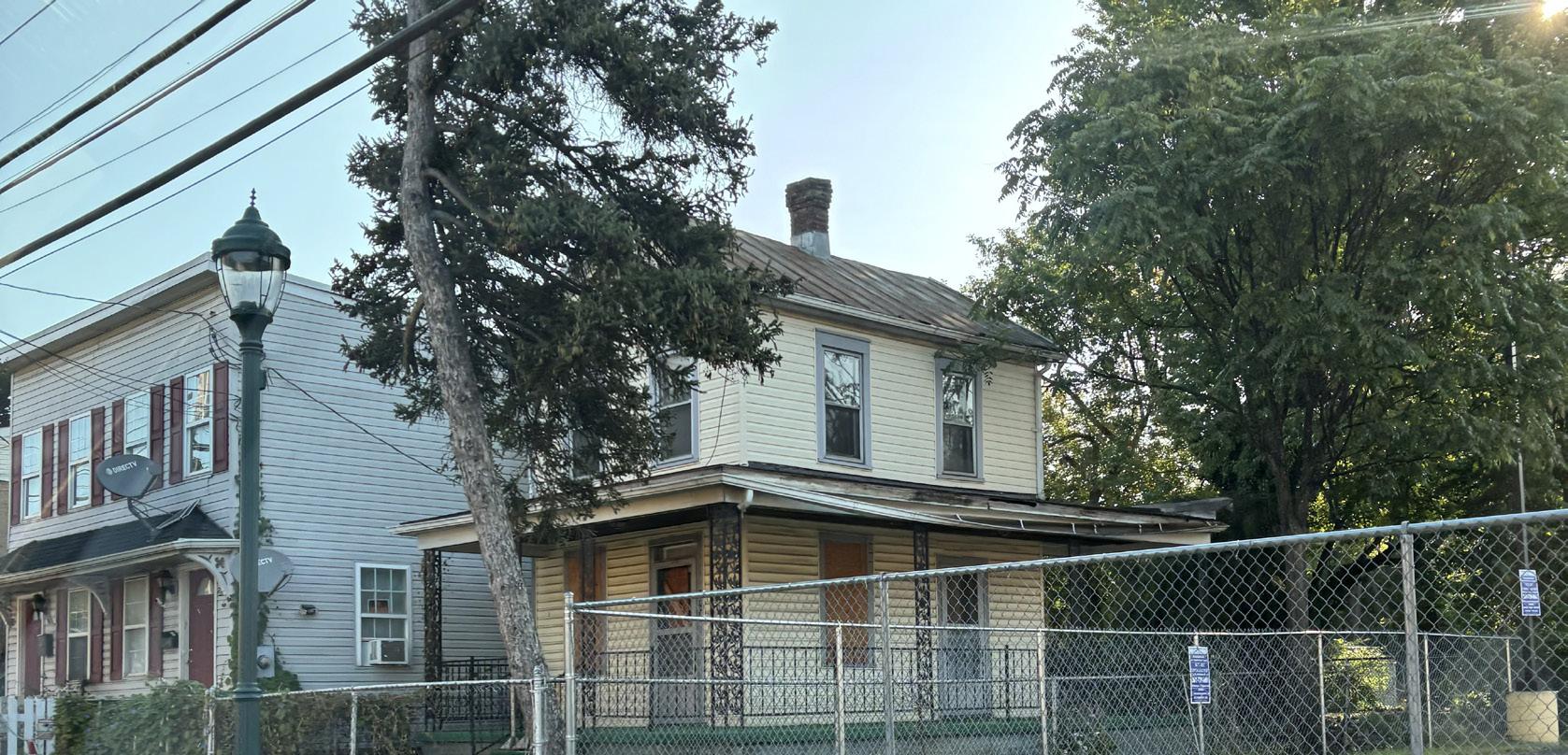
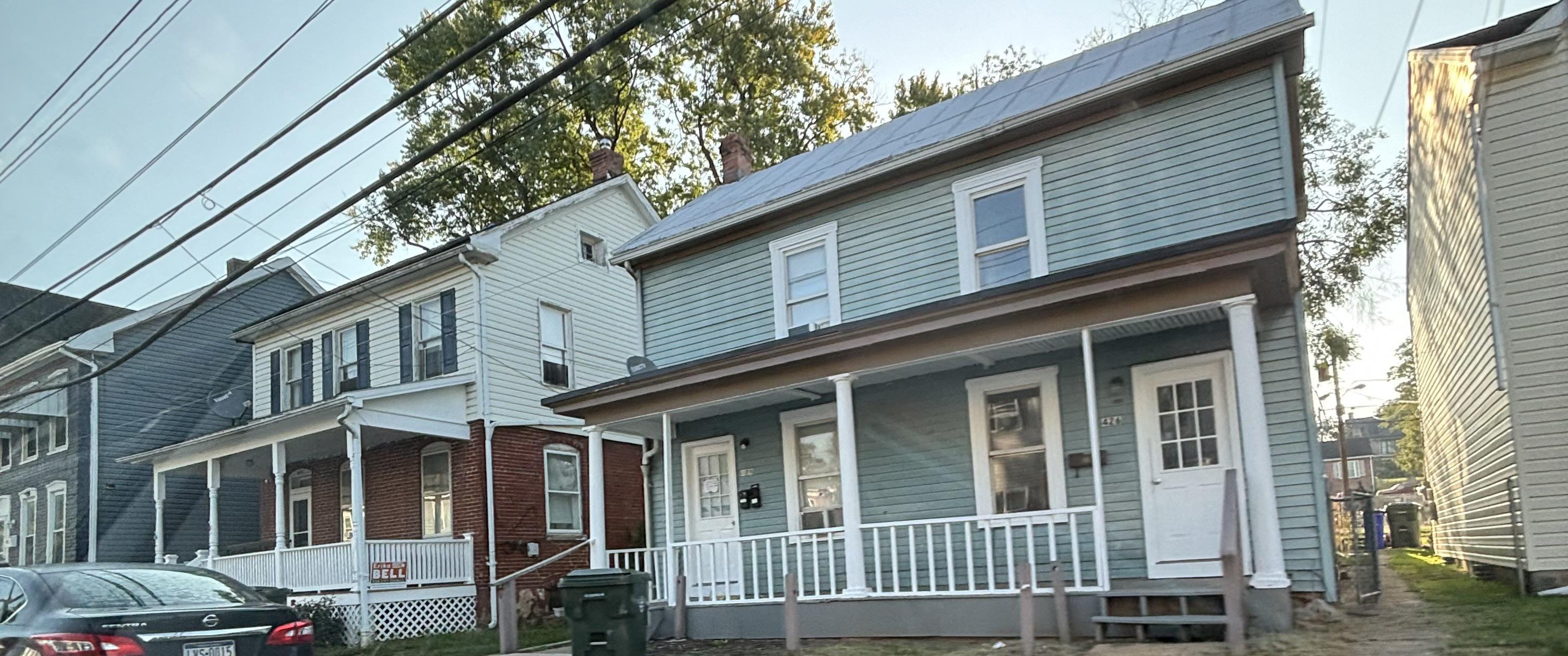
The Jonathan Street neighborhood is the heart of the African-American community in Hagerstown and has played a very important role in shaping the city since the early 19th century. Two of the Hagerstown Housing Authority sites that are the focus of the Hagerstown Choice Neighborhoods Initiative, Parkside Homes and Douglass Court, are located within the historic Jonathan Street neighborhood.
Jonathan Street was home to one of the first separate African-American congregations at the Asbury Methodist Church which was established in 1818. In 1838, the Ebenezer African Methodist Church was founded.
An 1849 Census of African Americans in Hagerstown identified 389 freemen and 211 enslaved persons within the Hagerstown city limits. Hagerstown’s location between Viriginia and Pennsylvania led to the presence of escape routes for the Underground Railroad.
While Jonathan Street existed prior to 1865, the Jonathan Street neighborhood was established after the Civil War. Segregation, discriminatory practices, and redlining limited movement and opportunity for Blacks in Hagerstown. The Jonathan Street neighborhood became an economic center for the community with many
Black-owned businesses including the historic Harmon Hotel, barbershops, dance halls, and general stores along Jonathan Street.
There are many historic sites in the Jonathan Street neighborhood including the home site of Jacob Wheaton the first Black man to vote in the state of Maryland and whom Wheaton Park is named after. The rich history and importance of the historic Jonathan Street neighborhood is recognized across Hagerstown and the region. Hagesrtown’s Doleman Black Heritage Museum that honors, highlights, and preserves the rich history of culture and the Black experience throughout Hagerstown, Washington County, Maryland, and the entire nation will be relocating to the corner of Jonathan Street and Charles Street within the next few years.
DOWNTOWN EVENTS | Thanks to revitalization efforts, downtown is a vibrant community hub
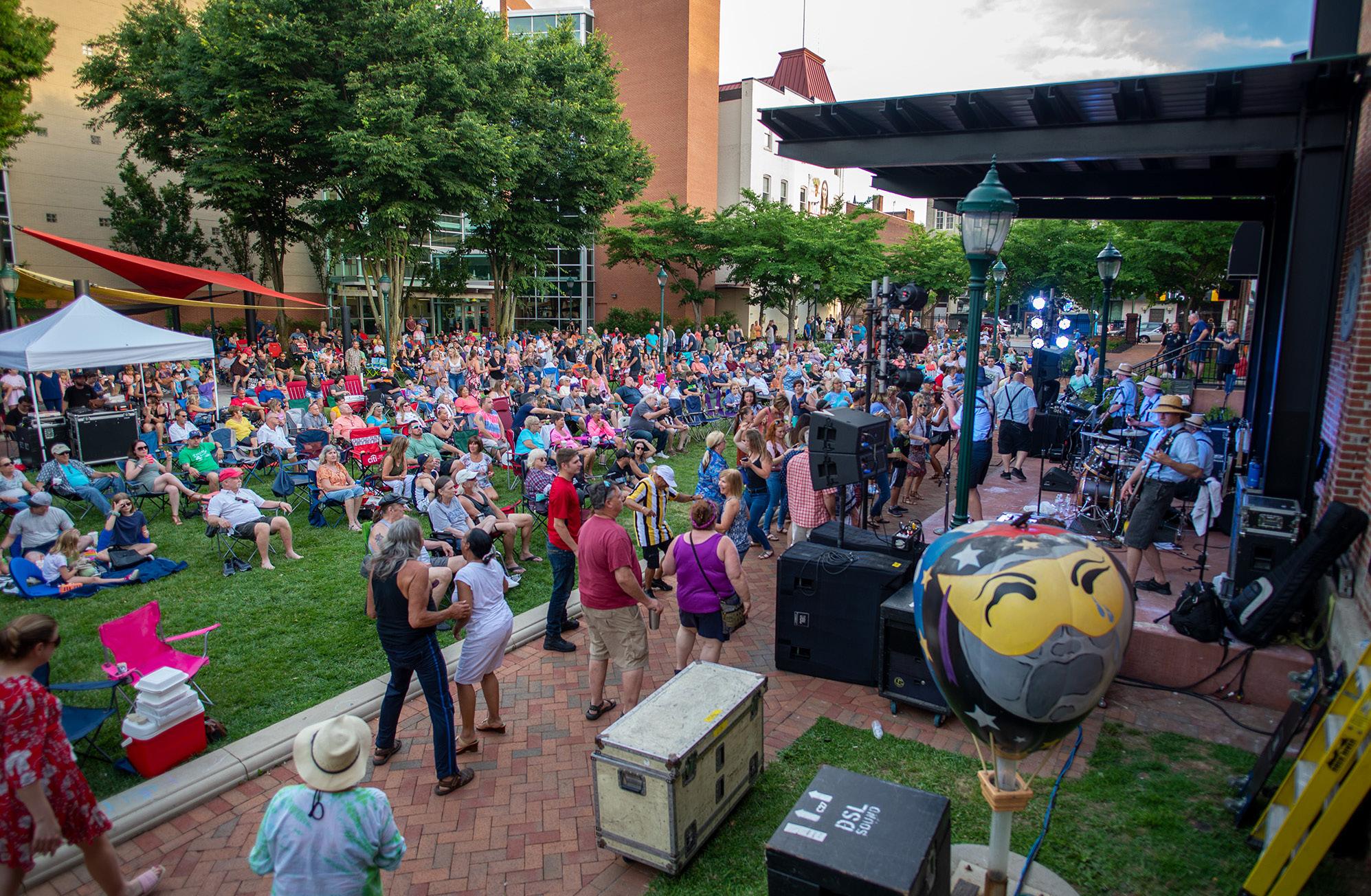
The Hagerstown Choice Neighborhoods includes downtown Hagerstown as well as historic districts, the historic Jonathan Street neighborhood, key commercial corridors, and sites of recent economic investment and growth such as Main Street, Meritus Park, and the Arts & Entertainment District.
Over the past 10 years, there have been several planning efforts focused on Downtown Hagerstown as well as strategic citywide
planning initiatives include the Vision2035 Hagerstown Comprehensive Plan, the Community’s Center Plan, and the Mayor and Council’s Strategic Plan. By collaborating with the entities who developed and implemented these plans, the Hagerstown Choice Neighborhoods planning process has identified synergies and areas of collaboration to further advance and enhance a vibrant, thriving, and inclusive community.
The Sustainable Communities Program (SCP) is a place-based designation offering a comprehensive package of resources that support holistic strategies for community development, revitalization, and sustainability. The goals of the program are to develop healthy local economies, protect and appreciate historical and cultural resources, mix land uses, create and maintain affordable and sustainable housing and employment options, protect and conserve the environment, and encourage walkability and recreational opportunities.
The Hagerstown Sustainable Community Plan was updated in 2017 and 2022. The core goals of the 2012 Plan carried through with updated projects, including:
• Improve water quality and air quality.
• Strengthen the City’s role as a regional tourist destination.
• Enhance the city’s economic competitiveness.
• Implementation of Downtown Parking Master Plan recommendations.
• Enhanced transportation efficiency and access.
• Improve the quality of housing stock and address blighting influences in Sustainable Community Area.
• Continue expanded homeownership support.

• Encourage adaptation of buildings for alternative housing opportunities.
• Recruitment of retail and services in downtown to serve daily needs of residents.
• Prepare workforce for employment opportunities in evolving industries.
• Promote initiatives in place or underway to enhance image and safety of downtown.
• Remove blight and enhance underutilized properties in the city and especially downtown.
• The Hagerstown SCP boundary is similar to that of the Hagerstown Choice Neighborhoods.
• The goals of the program are to develop healthy local economies, protect and appreciate historical and cultural resources, mix land uses, create and maintain affordable and sustainable housing and employment options, and protect and conserve the environment, and encourage walkability and recreational opportunities.
In 2013, the City hired an economic consultant to do an economic analysis of the City’s 2012 Sustainable Community Plan and identify eight catalytic projects to help spur downtown redevelopment. The Plan and catalytic project list were developed and identified with the help of the following: extensive reviews of past City reports and plans for downtown; interviews of key stakeholders within the community; public outreach that included input from nine focus groups, a housing survey that yielded over 400 responses, and a community input meeting; and a market and physical analysis of the downtown. The final report presented the following eight catalytic projects:
• A Strategy for Office Development & Recruitment;
• Maryland Theatre Expansion Project;
• USMH Expansion Support Strategy, including student housing;
• Hotel/Conference Center & Heritage Center/ Commemorative Park;
• Linking City Park and A&E District with Trail and New Housing;
• Expanded Downtown Arts/Events Programming Strategy;
• Expanded Operations of the City Farmers Market;
• Expanded & Targeted Homeownership Support Strategies.
The Community's City Center Plan
Hagerstown, MD






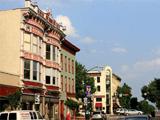
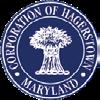
The 2014 Community’s City Center Plan provided a data-driven roadmap for public and private sector redevelopment of downtown Hagerstown. The City is expected to update the Plan in 2025.
• The Study Area for the City Center Plan aligns with the Hagerstown Choice Neighborhoods boundary.
• Of the eight (8) catalyst projects listed in the City Center Plan, the following directly tie in with efforts related to the Hagerstown Choice Neighborhoods: Office Development and Recruitment; Hotel/Conference Center and Heritage Center/Commemorative Park; Linking City Park/Washington County Museum of Fine Arts and A&E District with Trail and New Housing; and Expanded and Targeted Home Ownership Support.
Over the course of 2016, Bester Community of Hope – a nonprofit organization that serves the Southside community in Hagerstown – undertook a neighborhood survey of the entire district. They identified a representative sample of 320 households and conducted a 26-question survey to understand how residents perceived their neighborhood and provide an opportunity to connect and listen to the community. The findings of the surveying effort and subsequent analysis were utilized to guide Bester Community of Hope’s strategic investments over the next 5 years, as follows:
• Understand the sense of community including how daily needs are being met, community connections and sense of belonging, and participation in community life.
• Overview of community assets including neighborhood associations, institutions, services, nature/open space, and businesses.
• Identification of challenges, strengths, and potential opportunities of the neighborhood.

• Bester Community of Hope’s service area includes Hagerstown Housing Authority’s Frederick Manor, and Bester has served as a foundational community partner and provider of services to the Frederick Manor community.
• Bester employs a collaborative model that brings together public and private organizations, nonprofits, philanthropies, government, businesses, and communities to address the challenges of poverty, quality of life issues, community health, and economic opportunity. The Hagerstown Choice Neighborhoods employs a similar model and sees Bester as a key collaborator and contributor.
Preservation Maryland is working in partnership with the historic Jonathan Street neighborhood to lead a community-driven planning effort that will identify the places and resources that matter to the people who live there.
Preservation Maryland will also deploy new resources and develop new partnerships to help invest in threatened historic resources that can be reused and revitalized to support the needs of the community.
• Rehabilitation of a historic log cabin to owner-occupied affordable housing in partnership with Habitat for Humanity of Washington County.
• Grant funding for future projects including the future site of the Doleman Black Heritage Museum and upgrades to the historic Robert W. Johnson Community Center.
• Community asset planning and mapping focused on engaging the public around the places, stories, and resources they care about.
• Understanding the community’s unique historical resources through an archaeological excavation of the historic log cabin site and a documentary that tells the story of the property and its history in the Jonathan Street neighborhood.
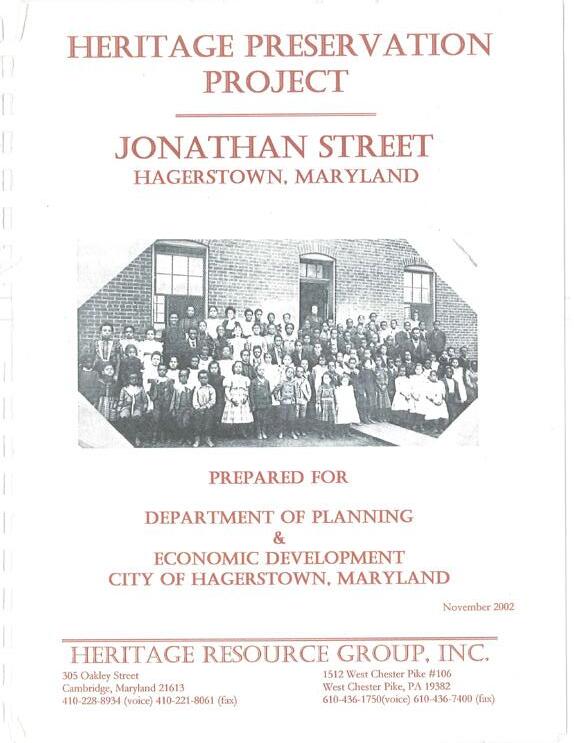
• Preservation Maryland’s Historic Property Redevelopment Program relaunched with the Jonathan Street log cabin rehabilitation and is expected to help save threatened historic properties and positively impact communities through the sale and purchase of structures through a revolving loan fund, option agreements, and unique partnership models.
• The project is documenting the important history of the Jonathan Street neighborhood and providing opportunities for place-based investments and revitalization efforts.
In order to ensure that the City of Hagerstown grows in a fiscally and environmentally sound manner, VisionHagerstown 2035 outlines strategies to address the relationship between planned growth and the infrastructure needed to accommodate it. VisionHagerstown 2035 also provides the land use and growth management policy framework for Hagerstown’s efforts to regain and strengthen its role as the primary provider of urban services in the Hagerstown region:
• Growth Management and Land Use;
• Revitalization of Downtown;
• Water Resources;
• Transportation;
• Housing and Neighborhood Revitalization;
• Enhancement of Parks and Recreation Opportunities;
• Environmental Resources;
• Historic Preservation;
• Fiscal Health.
• Encourage the location of higher wage employers and high-quality new residential developments in the city, enhance the city’s fiscal foundation, and broaden the city’s economic base.







• Provide the necessary flexibility and guidance to attract economic development and investment in the city’s aging buildings and scattered infill properties, while removing land use conflicts for existing neighborhoods.
• Support strategies to improve existing employment centers and develop new centers to aid the City’s business recruitment and retention efforts and to revitalize older retail centers.
• Recognizes that revitalization and investment in Hagerstown’s downtown is important to the overall vitality of the city.
• Commitment to housing and neighborhoods to make them safe, clean, and welcoming, creating a sense of community identity, and making sure they have amenities and are walkable.
Through a combination of financial management policies, land use and forecasting, the City will ensure stability by maximizing its use of resources. The City of Hagerstown will inspire an inclusive, business-friendly, and sustainable community with clean, safe, and vibrant neighborhoods.
The ten pillars of the strategic plan are: Neighborhoods Revitalization and Sustainability; Public Safety; Public Facilities and Infrastructure; Economic Development; Citizen-Based Government; Fiscal Accountability; Parks and Recreation for Active/Healthy Living; Innovative/ Progressive Government; Community Promotion/ Pride; Economic Development through Sports and Tourism; Misc. Projects, Goals, and Legislative Priorities.
• Promote neighborhood-based services and citizen engagement by defining neighborhood boundaries and identities and by expanding Neighborhoods first programming.
• Develop partnerships to create a public housing plan and diversify housing balance.
• Continue focus on the opioid epidemic through collaborating with community stakeholders and through the continuing opioid litigation.
• Implement the Community’s City Center Plan to promote economic development and strong neighborhoods.

• Support the manpower and capital needs of the City Police, Fire, Code and Public Works Departments.
• Work with State delegation and community stakeholders to develop legislation and programs to address gangs, violence, drug activity and juvenile crimes. Invest in Youth Violence Preventation Initiative.
• Continue focus on the opioid epidemic through collaborating with community stakeholders and through the continuing opioid litigation.
• Grow a foundation of active and engaged residents to serve on various City boards and commissions.
• Continue and enhance Hagerstown Youth Council.
• Make public space inviting and a focal point.
• Grow interconnected pedestrian walkability.
• Work to address food deserts.
COMMUNITY FAIR | Planning efforts continue with the Hagerstown Choice Neighborhoods Initiative
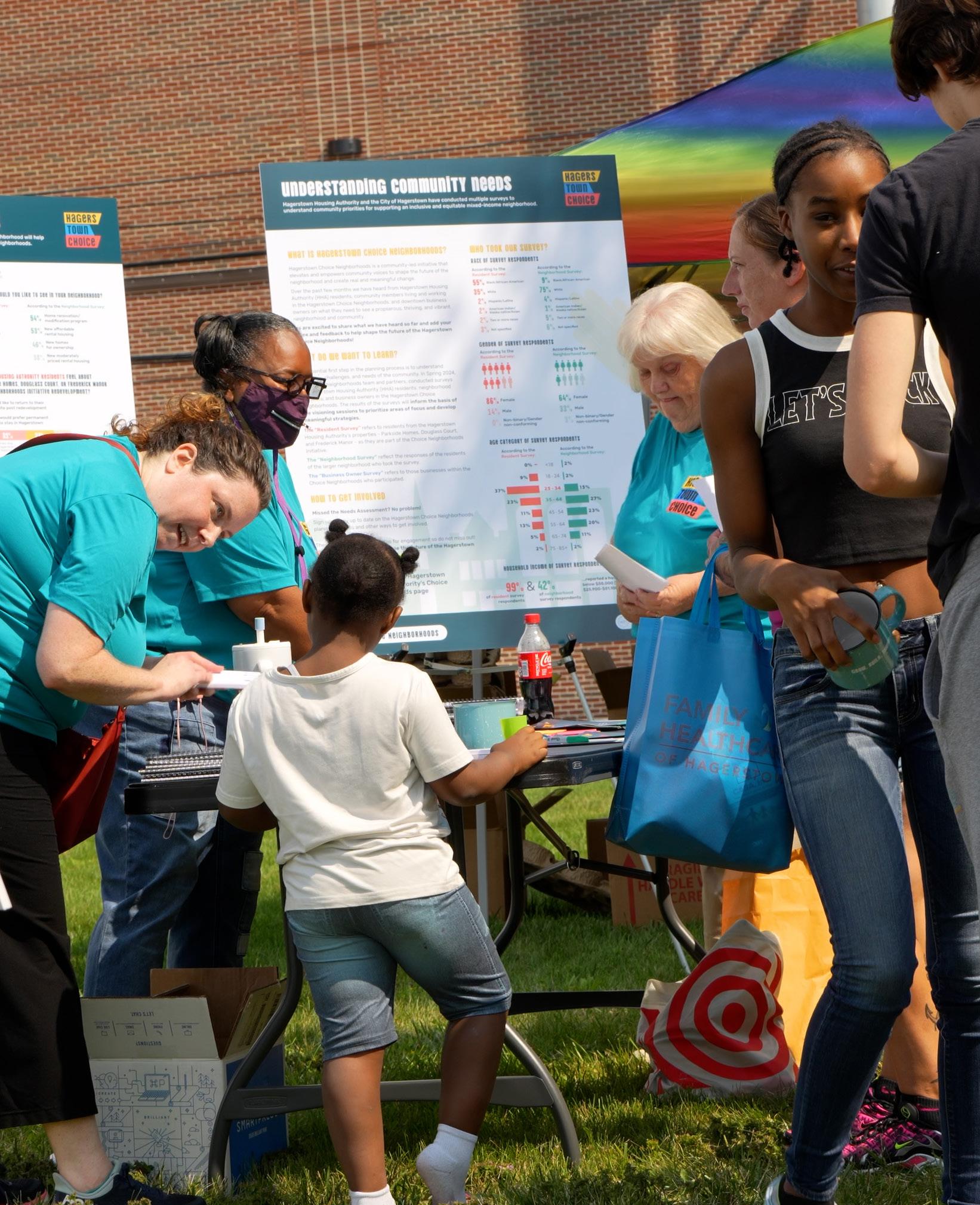
The Hagerstown Choice Neighborhoods is engaging and growing community capacity and engagement through a resident-led planning process. The vision, goals, strategies, and actions of the Plan will be based on community ideas, input, and priorities. The Hagerstown Choice Neighborhoods community will be important partners in all aspects of plan development and implementation.

The Hagerstown Choice Neighborhoods Plan is being developed through a 2-year planning process. The effort kicked off in fall 2023 and has engaged over 450 community members and partners thus far. The plan is being developed in collaboration with the community and will truly be a reflection of those living, working, and visiting the Hagerstown Choice Neighborhoods.
The Hagerstown Choice Neighborhoods Plan is a community-driven effort focused on creating a brighter and thriving future for the residents of HHA’ s Parkside Homes, Douglass Court, Frederick Manor, and the surrounding neighborhood and community. Grounded in the principles of inclusivity, transparency, and empowerment, this Plan aims to reflect the voices, experiences, and aspirations of the community.
The main goal of the Choice Neighborhoods planning process is to foster a collaborative process where residents take the lead in shaping the development of their neighborhood, supported by a dedicated team of local leaders and stakeholders. Through a series of engagement activities and capacity-building initiatives, the planning process aims to address the needs of the community while empowering residents for long-term, sustainable growth. This Plan is not only about revitalization – it is about building a stronger, more resilient community for generations to come.

The Hagerstown Choice Neighborhoods Core Team serves as the decision-making body and includes the grantee (Hagerstown Housing Authority), co-grantee (City of Hagerstown), local government representatives, and Community Ambassadors, all committed to fostering a positive change in the neighborhood, dedicated to creating a community-driven vision and establishing a platform where residents can be partners and take a lead in shaping their future.
The residents of HHA’s Parkside Homes, Douglass Court, Frederick Manor, and the broader neighborhood are at the heart of the Hagerstown Choice Neighborhoods. With their active participation, the process is driven by their experiences, needs, and desires. These residents have already taken part in meetings, initiatives, and events, and have shared their challenges, hopes, and ideas for the future. This collaboration ensures that the Plan reflects their vision and builds on the strengths that they have identified and prioritized.
The planning process includes essential partnerships with government agencies, non-profits, local organizations, and local businesses. These stakeholders have provided resources, insights, and support so far in the planning process through their involvement in monthly meetings of the Housing Task Force and People + Neighborhood Task Force, participation in key gatherings such as the HUD Site visit, and community engagement events. Our partners and stakeholders help to bridge the gap between vision and action with their knowledge of the local social, economic, service, and housing landscape.
Hagerstown Choice Neighborhoods convenes over 45 Task Force members monthly!
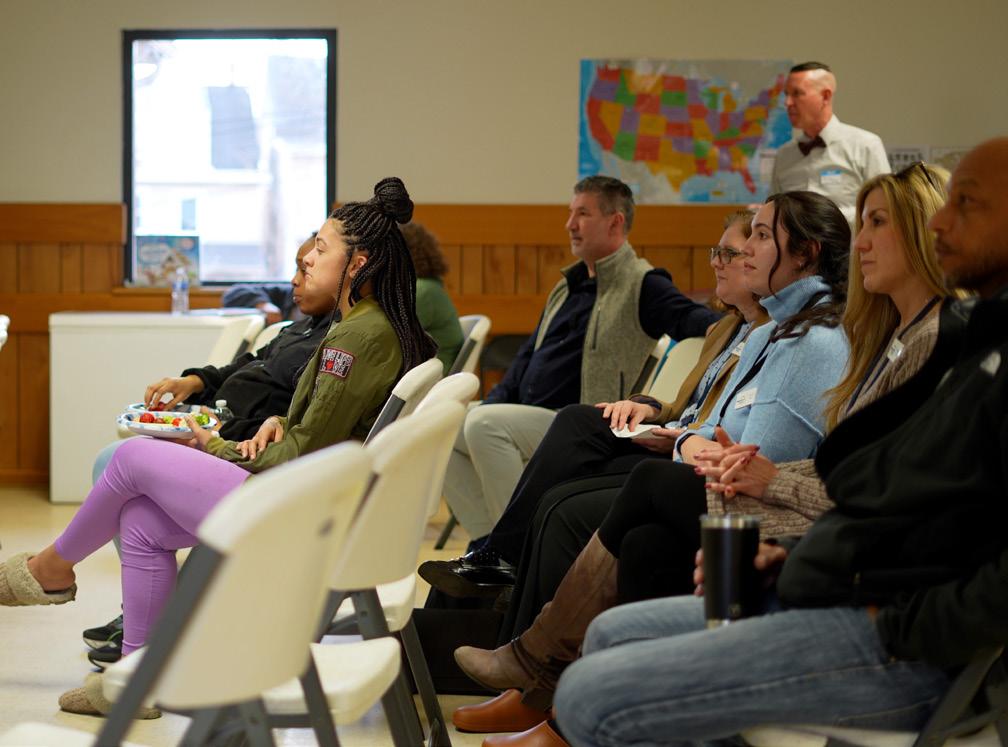
Hagerstown Choice Neighborhoods Kick-Off (WRT)
Our Community Ambassadors are an essential part of the planning team and process. These dedicated and passionate residents serve as a vital link between the Core Team and their families, friends, and neighbors. Trusted by their community, Community Ambassadors gather feedback, facilitate conversations, and help drive participation in the planning process. Community Ambassadors ensure that all the voices are heard and that the Plan reflects the true needs and aspirations of the community.
The Housing and People + Neighborhood Task Forces play a critical role to inform specific areas of community concern. Our Task Forces include partners, stakeholders, and residents and meet regularly to guide planning efforts, offering strategic insights as subject matter experts, and ensuring that the actions are aligned with the vision and needs of the community.
The Early Action Activity (EAA) Committee will focus on identifying and implementing the Early Action Activity projects that address urgent community needs. These activities will be selected through direct resident feedback and will be designed to build momentum while the long-term Plan is developed.

AND RESIDENT
Alyssa is most concerned about the safety of her community and older kids having things to do that keep them from getting bored. She believes boredom is leading to bullying and nuisance crimes being committed in the neighborhood.
We need more color. Small gardens, if people could plant them. People want flower boxes instead of bushes. It would just be so much prettier, people would be like “Oh! That’s Frederick Manor.” It’s nice and colorful, and they have good stuff there.
Alyssa (Youth Ambassador)
Jennifer Colvin
Lisa Knight
Monique Broadus
Pam Hutchinson
Originally from Sharpsburg, Lisa moved to Hagerstown and has lived in Frederick Manor for 10 years. She is flattered to be a Community Ambassador for the Hagerstown Choice Neighborhoods process. Lisa loves the beauty of her city and wants “to see Hagerstown come together and push forward.”
It’s a very quiet area, you can hear a pin drop at times and bringing the community together would be awesome. We’re better together...I think there could be better communication for better balance.
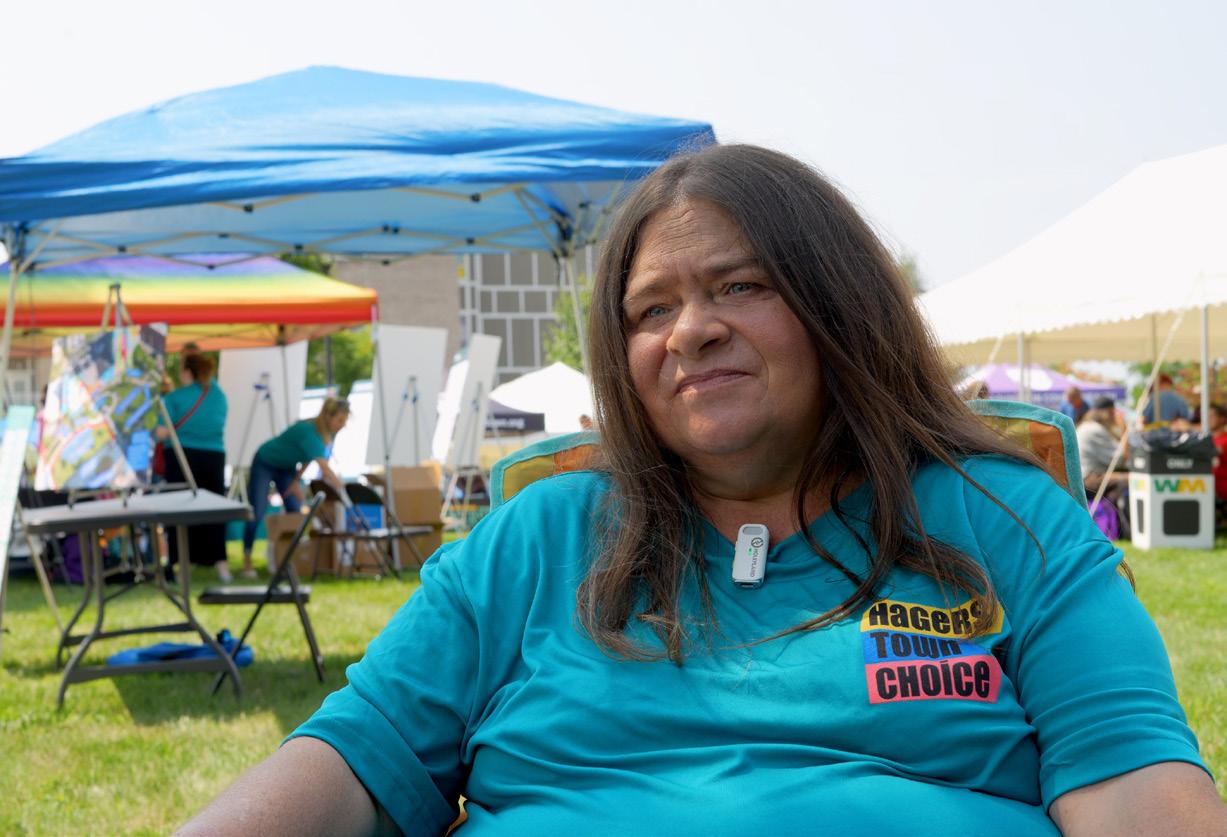

Monique has been a key holder for the community center at Parkside Homes for over 20 years, as well as a resident for over 30 years, and has lived in Hagerstown for over 50 years. She is incredibly proud of her three children she raised in the city and is deeply involved in supporting today’s youth.
It [Jonathan Street] used to be where everyone would hang out like family... It’s so much going on now, so much violence. We need to get back to Community, back to love. Stop the hate. Stop the violence. Try to come together and reunite.
The Hagerstown Choice Neighborhoods process is designed to be inclusive, transparent, and community-driven, gathering input from residents and stakeholders by fostering meaningful discussions, supporting consensus building activities, and creating opportunities for equitable and inclusive decision-making.
Engaging residents meaningfully and helping strengthen their capacity as neighborhood leaders is central to the planning process. The Hagerstown Choice Neighborhoods Plan strives to equip residents with the necessary tools to be influential leaders, advocates, and agents of change that can sustain the Plan’s momentum and continue to drive positive change in their communities.

Community Ambassadors are trusted members of the community who ensure inclusivity and transparency throughout the planning process. The Community Ambassador training equips residents with the skills to engage with their neighbors, communicate the goals of the Plan, represent their community in discussions with the Core Team and other stakeholder groups, and be able to put their unique stamp on the Choice Neighborhoods process. This multi-session training includes topics such as Choice 101, effective communication tools, civic engagement and community awareness, how to facilitate community engagement, and how to create a broader impact in the community.


Hagerstown Community Fair (WRT)
The leadership series, coming later in the year, is a multi-part educational initiative aimed at preparing residents to take on leadership roles in their lives and the neighborhood revitalization efforts.
Recognizing the importance of involving the next generation, the planning team is working on engaging local youth through a variety of programming and events. The Hagerstown Choice Community Ambassador Program currently includes one Youth Ambassador and
we are looking to grow the number of Youth Ambassadors as we continue to develop the Plan. Additionally, the City of Hagerstown has an active Youth Council that supports youth engaging in local government and programs, and the Hagerstown Youth Council has helped to promote Hagerstown Choice Neighborhoods work including the neighborhood survey and participation in local community events. These engagements will ensure that youth perspectives are included in the planning process and that they are prepared to become future leaders in their community.
So far...
NOVEMBER 2023
Hagerstown Choice
Neighborhoods Kick-Off
JANUARY 2024
Choice Neighborhoods
identity building workshop
FEBRUARY 2024
HUD Site Visit
Hagerstown Choice
Neighborhoods comes to the housing sites!
MARCH 2024
Market Study Site Tour
APRIL 2024
Care package engagement with HHA Residents
Ongoing communication with the communities at the Parkside Homes, Douglass Court, and Frederick Manor housing sites and neighborhood residents has been key for a successful engagement strategy.

APRIL/MAY 2024
Resident, Neighborhood, and Business Needs Assessments
JUNE 2024
Resident Needs Assessment Workshop

AUGUST 2024
Hagerstown Community Fair
During the winter of 2023/2024, the Core Team developed a recognizable brand for the project through a collaborative workshop. The brand is rooted in the aspirations of the community, reflected in the “Grow, Build, Thrive” tagline, and the identity of the Choice Neighborhoods footprint, with bold colors and shapes that evoke the Choice Neighborhoods landscape.
The Hagerstown Choice Neighborhoods outreach utilizes this community-driven branding and understands that residents have different preferences on communication methods. For online and digital engagement, the Hagerstown Housing Authority has created a website/resource hub (https://www. hagerstownha.com/choice-neighborhoods/) where residents can find documents that explain the Choice Neighborhoods Initiative, presentations, community meeting materials, and reports. Additionally, HHA and the City of Hagerstown are reaching out to residents through email and other communication channels like robotexts.
Additionally, postcards, door hangers, flyers, and posters are just a few ways that the word is being spread in the community.
So far, the Hagerstown Choice Neighborhoods process has engaged over 450 residents, neighborhood stakeholders, and businesses!
We have engaged over 250 residents through in-person meetings and workshops!
Upcoming...
WINTER 2024
Leadership Series
Strategies and recommendations
Focus Groups
SPRING 2025
Choice Neighborhoods Conference, Baltimore, MD
SPRING 2025
Draft Plan Open House
Early Action Implementation
SEPTEMBER 2025
Plan release
Resident Needs Assessment Survey Neighborhood and Business Owner Survey
Assessment Workshop
A key first step in the Hagerstown Choice Neighborhoods process is understanding community needs, priorities, opportunities, and challenges. Through data analysis, a Resident Needs Assessment, Neighborhood Survey, and Business Owner survey, we are beginning to understand the future vision and goals for the community. We are building on this vision alongside existing partners, programs, and initiatives to ensure a vibrant, thriving, and equitable future.
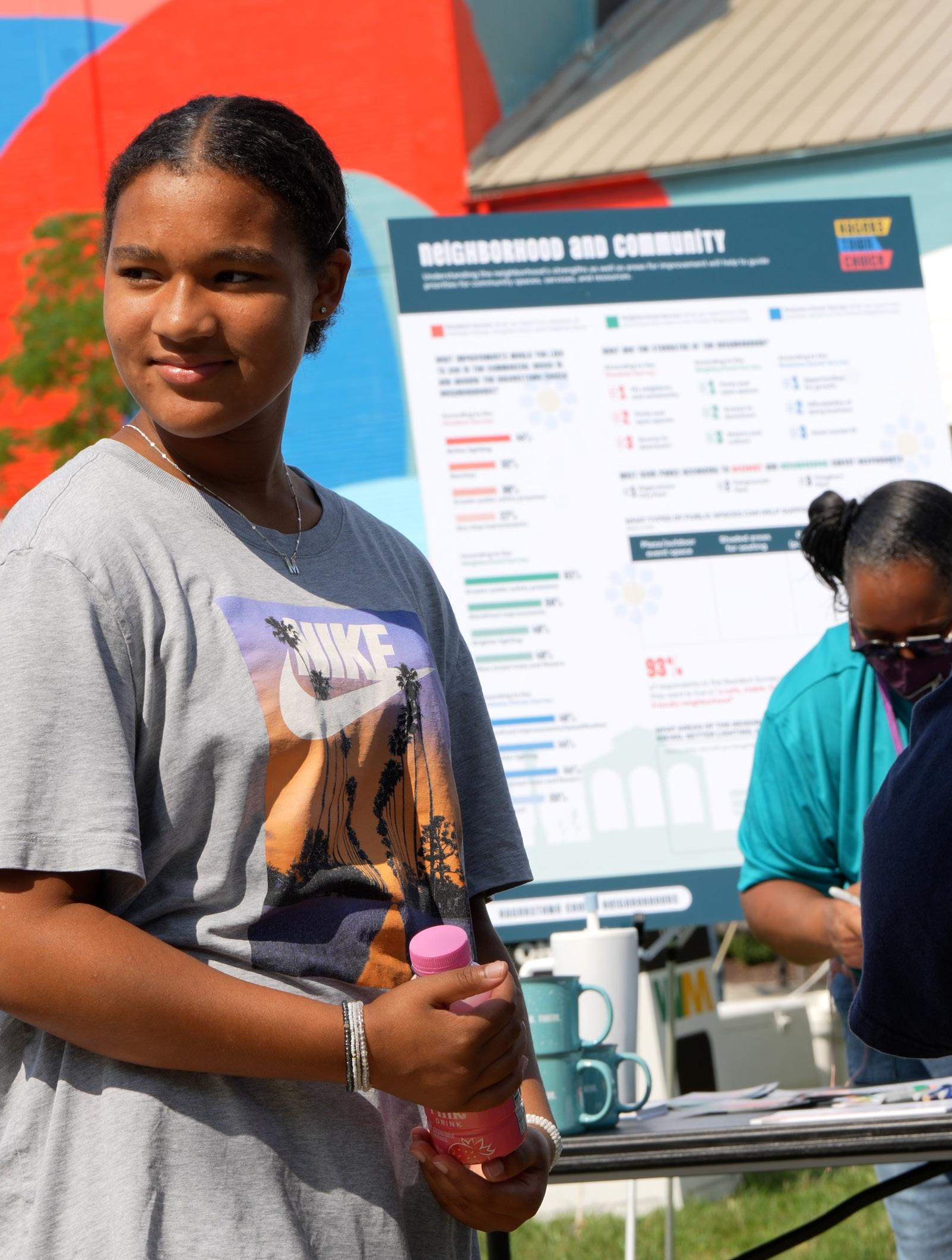
The Hagerstown Choice Neighborhoods community has shared that housing is a key priority. Ensuring that there is quality, affordable housing throughout the area is very important. Housing is the basis for community stability and providing opportunity to grow and thrive in the Hagerstown Choice Neighborhoods.

Resident Needs Assessment and Neighborhood Survey results reveal the Hagerstown Choice Neighborhoods is at a pivotal point, with residents expressing a strong desire for not only housing stability but also enhanced economic opportunity, high quality infrastructure, and access to services. The majority of HHA’s residents at Parkside Homes, Douglass Court, and Frederick Manor want to continue living at their current housing sites, which speaks to the strong neighborhood social fabric and the need for ensuring that housing options remain affordable and accessible. Residents indicated they favor mixed-use developments that combine housing with retail and services, making everyday amenities more accessible.
Overall, the Hagerstown Choice Neighborhoods embodies a community striving for stability, safety, and opportunity. The residents’ strong attachment to their homes and appreciation of their neighbors, along with a clear desire for affordable, safe, and accessible housing, reflects their commitment to their community. Residents are seeking a safe, family-friendly environment that offers stability and support, ample housing choices, and economic opportunity. The Hagerstown Choice Neighborhoods will require targeted interventions in affordable housing, economic development, and community services to address the needs of a population that is heavily reliant on affordable rental markets and struggling with the cost of living not keeping pace with wages.
Residents of Parkside Homes, Douglass Court, and Frederick Manor have a strong attachment to the neighborhood and want to continue living in their current housing sites. They express a sense of community, where social ties are valued, highlighting the importance of maintaining affordable housing options in the area.
Residents express a strong need for housing stability - housing that is affordable, safe, and accessible for all incomes. Many favor future developments that offer both housing and essential services, which will support their desire for long-term stability and age-in-place in the community.
The Hagerstown Choice Neighborhoods housing sites are central to the community’s aspirations for redevelopment that maintains affordability and enhances quality of life. Residents want improvements that foster a family-friendly environment, both offering social cohesion and access to services.
The Hagerstown Choice Neighborhoods includes downtown Hagerstown and the residential areas nearby, the Downtown Historic District, the Potomac/Broadway Historic District, and the South Prospect Street Historic District, creating a landscape of residential, commercial, industrial, and institutional uses.
Commercial zones are mainly concentrated downtown and along key corridors like Washington and Franklin Street (east-west) and Potomac Street (north-south). These commercial and downtown areas have seen investment and support in the last decade, creating an environment that encourages local businesses and entrepreneurship and serves as a hub for services and governmental offices. Overall, commercial corridors are integrated into the fabric of the neighborhood, providing opportunities for walkable employment opportunities, and access to services for the community.
The surrounding neighborhoods are mostly residential with a mix of housing densities and housing types (Residential Moderate Density and Residential Medium Density). The northernmost areas between Franklin Street and Prospect Avenue see a higher concentration of single-family properties and medium density buildings and is where the historic Jonathan Street community is located, including Parkside Homes and Douglass Court. Other single-family and medium-density residential areas can be found in the area between Potomac Street, E Baltimore Avenue, and Memorial Boulevard. The Hagerstown
Choice Neighborhoods hosts a variety of single-family typologies, including rowhomes, semi-detached homes, and single-standing properties as well as some medium-density multifamily buildings. The southernmost part of the Hagerstown Choice Neighborhoods is comprised mainly of commercial areas, open spaces, and some industrial areas as well as residential pockets including HHA’s Frederick Manor property.
The Hagerstown Choice Neighborhoods area has a low percentage of vacant land and properties, mainly small lots with vacant buildings spread out through downtown. A few larger properties are found in the southernmost area of the Hagerstown Choice Neighborhoods and are comprised of commercial and mixed-use land.
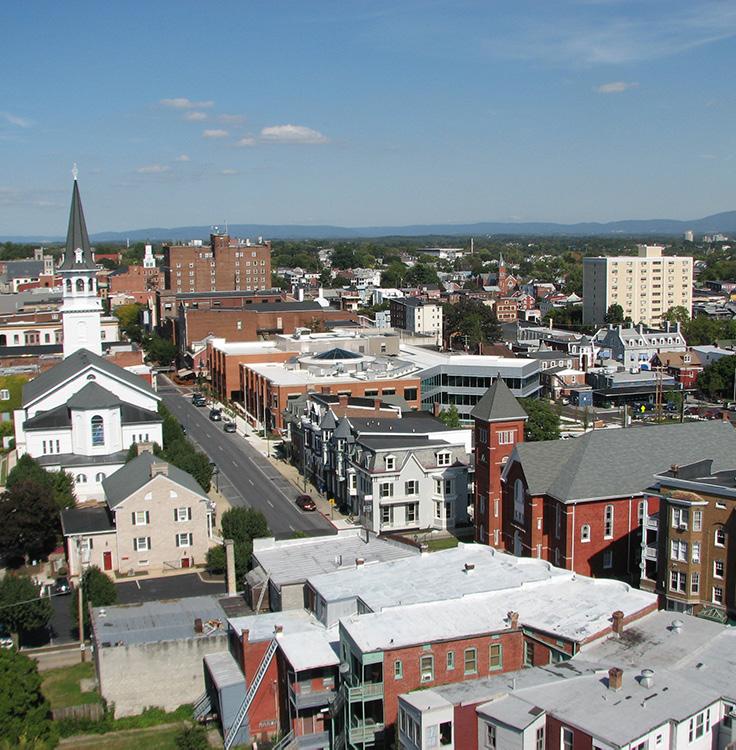

Land Use Categories
• Commercial
• Mixed-Use
• Industrial
• Exempt
• Residential Moderate Density
• Residential Medium Density
• Apartments
• Parks & Open Space
• Cemetery
Source: City of Hagerstown
Commercial and residential uses are most common in the Hagerstown Choice Neighborhoods.
During Hagerstown’s industrial boom during its late 19th and early 20th century growth, the city experienced rapid urban expansion to support its growing population of workers drawn to factories and railroads. Hagerstown’s architectural character reflects the city’s industrial heritage, its early 20th century growth, and its ongoing efforts to preserve the historic fabric.

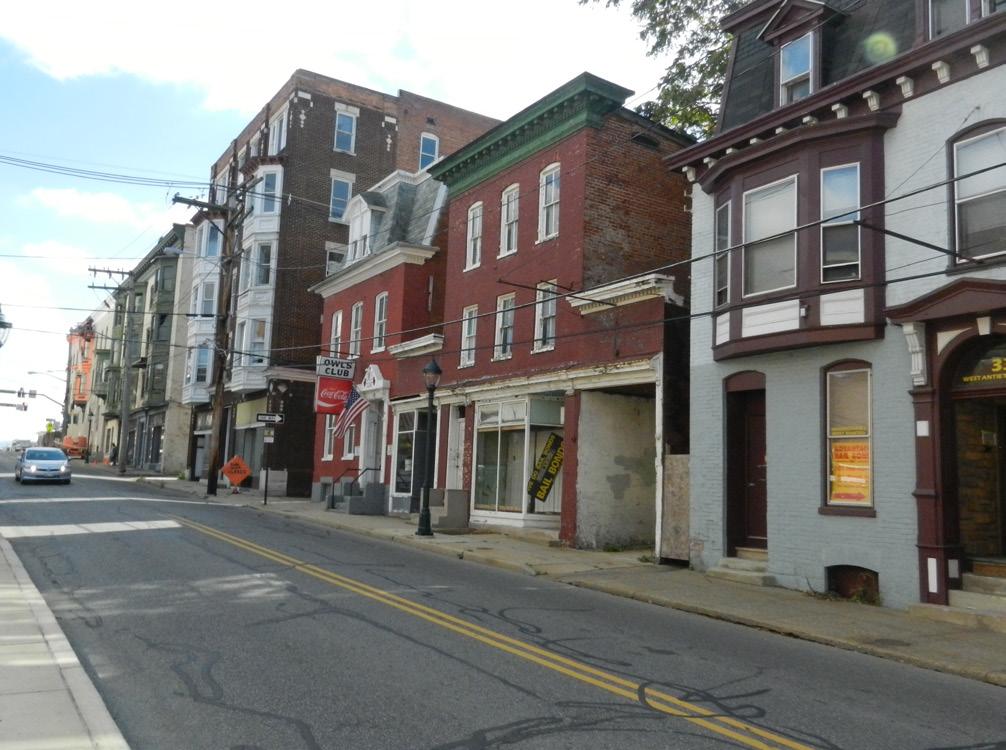
The current housing character of the Hagerstown Choice Neighborhoods reflects the architectural trends of the time. To preserve this character, three distinct historic districts are found within the Hagerstown Choice Neighborhoods area: the Downtown Historic District, the Potomac/ Broadway Historic District, and the South Prospect Street Historic District. In addition, the whole Choice Neighborhoods footprint is located within the Hagerstown National Register Historic District. Within the boundary of the Hagerstown Choice Neighborhoods, many buildings from the late 19th and early 20th century period still stand, showcasing a range of architectural styles. Downtown residential styles range from Victorian-era influenced architectural trends to early 20th century Colonial Revival trends, consisting mainly of two- and threestory buildings.
There is a broad support for a variety of housing types, including mixed-use buildings that combine ground floor retail with apartments on the higher floors. This housing type was highly favored by respondents to the Neighborhood Survey. Mid-rise apartments with added amenities were also favored, signaling a desire for an integrated mix of housing types and prices.
There are architecturally and historically significant buildings along the main downtown corridors, which helped establish the direction of commercial growth in the area. Notably, some of the downtown architecture reflects the influence of the railroad and transportation industry. Buildings near the railway hubs and warehouses showcase simpler, more functional designs, often constructed with heavy materials such as brick and stone.
The residential Potomac/Broadway Historic District also follows these Victorian-era and Revival styles, with larger single-family homes and smaller-scale duplexes, apartments, and urban townhouses, some of them containing both commercial and residential uses.
THE COMMUNITY SAYS:
NEEDS ASSESSMENT
>40% of respondents support creating a mix of housing on-site to attract residents of varied incomes.
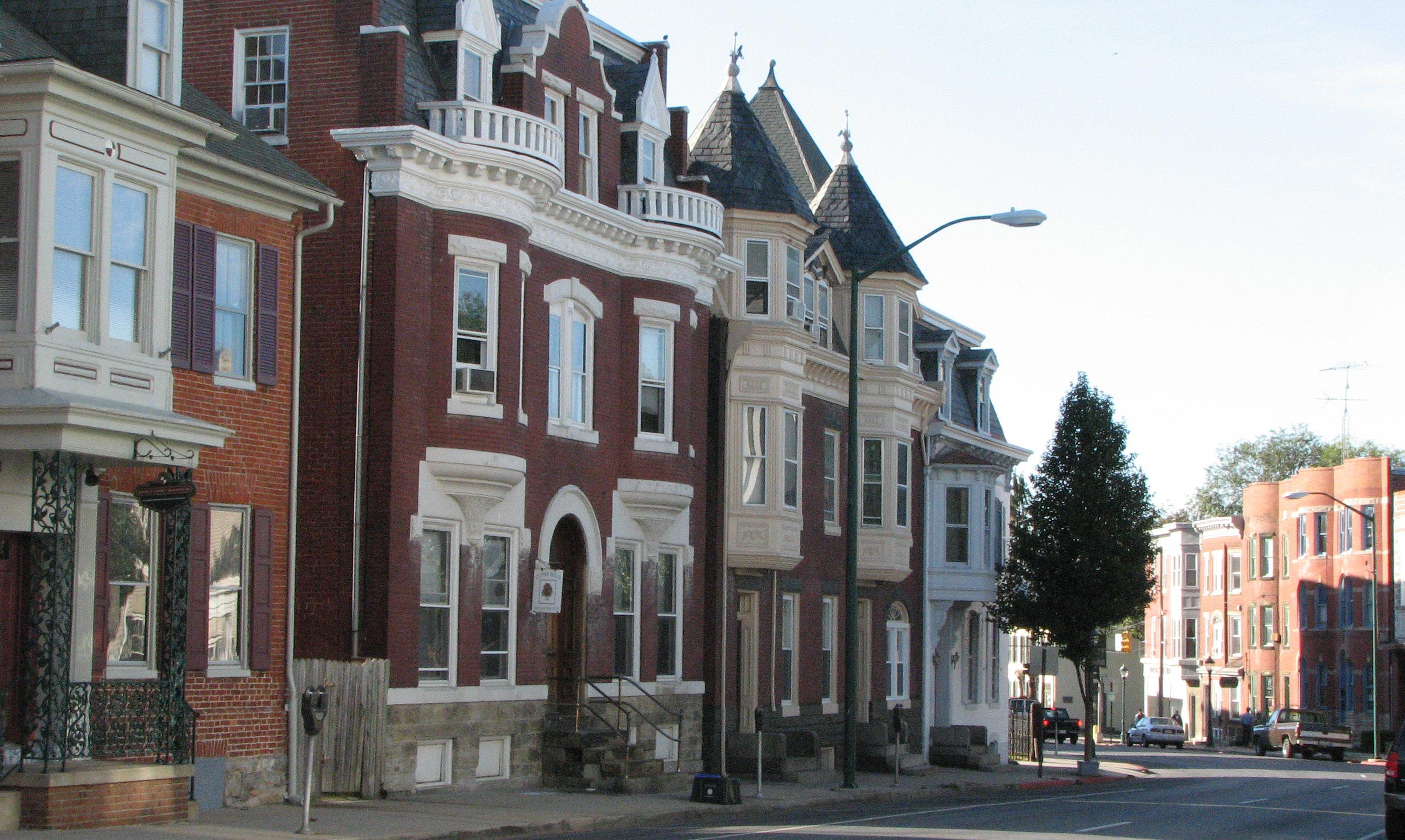
The South Prospect Street Historic District has undergone renovations, but the character and variety of architectural styles still remains with Italianate- and Revival-style structures.
Other styles found in the Hagerstown Choice Neighborhoods are brick rowhomes that are aligned closely with the sidewalks, a style which was practical during the industrial boom and offered affordable housing to workers while maximizing space. Of note, the historical Jonathan Street community holds a unique architectural and cultural significance. As one of the oldest African American neighborhoods in the city, its architecture reflects the history of the community through the 19th and 20th centuries. The buildings in this area are simple structures of modest size and design that reflect the working-class roots of the community and are located on smaller lots along narrow streets. Historical structures
Through the Resident Needs Assessment and Neighborhood Survey, community members have indicated that there could be interest in a return of the small-scale, neighborhood commercial uses along the Jonathan Street corridor.
THE COMMUNITY SAYS:
NEIGHBORHOOD SURVEY
What is the best housing type for the neighborhood?
Mixed-use buildings (multiple apartments with stores and services on the ground floor)
Single family homes 2 1
3 3
Mid-rise apartment with elevators and amenity spaces for residents (20 or more units)
feature brickwork, front porches, and uniform lines, creating a cohesive streetscape that gives the area a distinct character that holds historical weight. In recent years, there has been a growing effort to preserve this historical character of the Jonathan Street neighborhood while also addressing the challenges of aging infrastructure and disinvestment. The blending of older homes and renovations in this area reflects a community in transition. Historically, the Jonathan Street community was a commercial hub and had a mix of businesses and residential properties along the corridor. In more recent years, the corridor has transitioned to mainly residential uses.
Hagerstown today is a window to the late 19th and early 20th century America – the housing stock and land uses are shaped by the patterns and influences of the railroad and transportation industries and offers a way to learn history through the built environment.


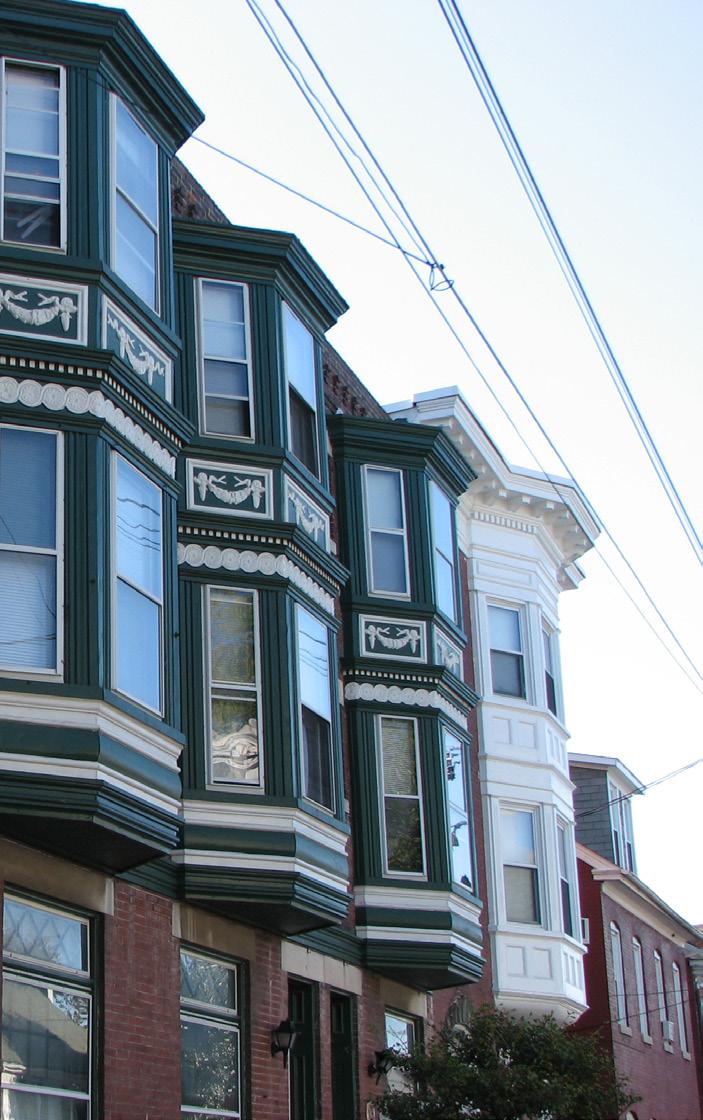


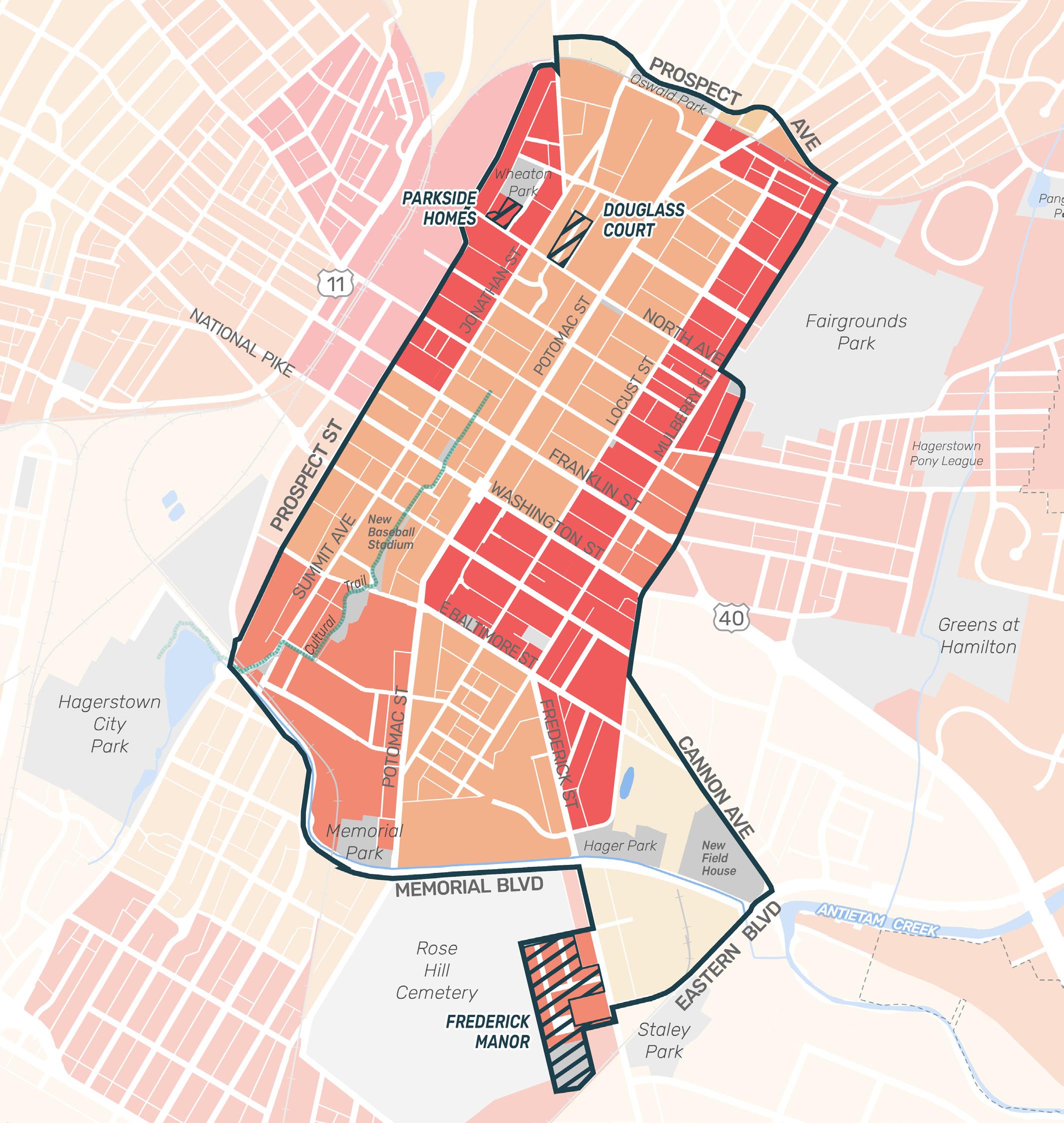
Household Poverty Rate
• 0%-10%
• 11%-20%
• 21%-30%
• 31%-40%
• 41%-50%
• Choice Neighborhoods

Target housing sites
0 750 1,500 Ft
Source: US Census Bureau, 2022. ACS 5-yr Estimates
The Hagerstown Choice Neighborhoods has some of the highest concentrations of poverty in the city.
The housing affordability landscape in the Hagerstown Choice Neighborhoods reveals a community facing significant challenges. The median household income in the Hagerstown Choice Neighborhoods area ($24,750) is less than half of that in the overall city and just a fraction of Washington County’s median income. Within the City of Hagerstown, children under five years of age living below the poverty level threshold is 38.6%, and in some areas of the Hagerstown Choice Neighborhoods of up to 50% of residents live below the poverty line. Almost 70% of residents in the Hagerstown Choice Neighborhoods rent their home, and the burden of housing costs is high, with more than half of the renter households spending more than 30% of their income on housing. Affordability challenges place strain on families, particularly those with young children.
Limited vacant land and a fully developed urban fabric in the Hagerstown Choice Neighborhoods area hinder potential opportunities for new housing development in a landscape that is already limited in its offerings of affordable and workforce housing units and affordable
HHA housing sites residents and neighborhood residents both agree on the need for new affordable rental housing and home renovation programs. The findings suggest there is a desired balance between the demand for newer affordable housing and improving the quality of existing homes. There is also an interest in providing affordable homes for homeownership and moderately priced rental housing.
homeownership options. Residents have expressed a clear interest in affordable rental housing, home renovation programs, and more homeownership opportunities, yet the reality of the local economy complicates these goals. Hagerstown has and continues to experience strong population, household, and employment growth trends and the area is attracting residents from adjacent metro areas. Additionally, the recent boom of the warehousing and logistics, manufacturing, and medical/health industries are adding opportunities for economic mobility, but adding to the demand for housing, increasing rental and homeownership prices.
THE COMMUNITY SAYS:
What types of housing would you like to see in the neighborhood?
Many residents support the idea of a mixed-income community, as long as it retains affordable housing options. Residents see this as a positive solution to providing diverse housing options while maintaining affordability.
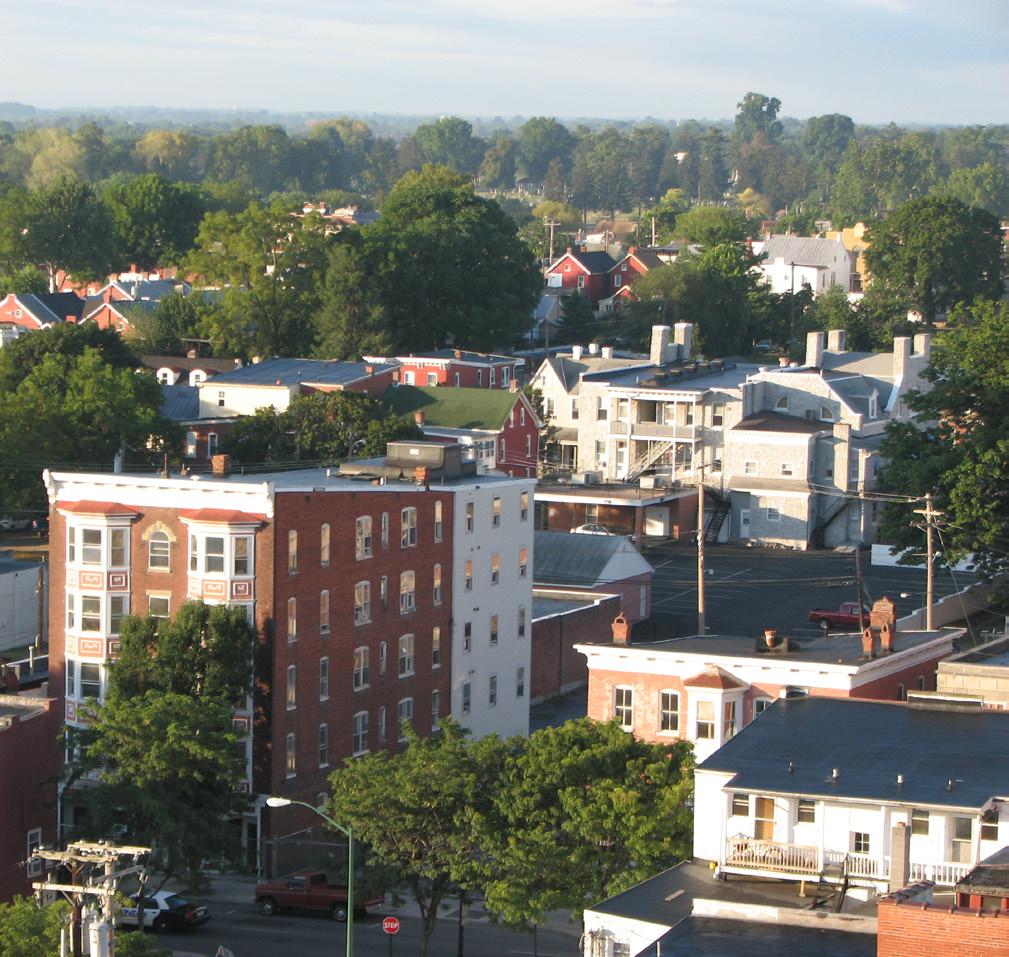

With low household incomes and housing costs rising, many residents find themselves struggling to afford stable and quality housing. There is also a robust rental investor community and it can be difficult for prospective homeowners to compete with the speed with which investors can purchase available homes.
In the future, a lack of sufficient affordable housing options could slow the labor force growth and impact the community’s successful economic development efforts that have been occurring in the last 10+ years. Housing costs could continue to put a strain on low- and medianincome residents that want to age-in-place and affordability pressures might deepen and affect overall economic growth. It is important that the Hagerstown Choice Neighborhoods Plan address both the immediate needs of residents while also planning for the creation of additional housing units that are accessibly priced and meet the needs of a growing labor force. This approach will ensure the community remains affordable, a variety of housing options are created, and residents are able to stay in place for current and future generations.
THE COMMUNITY SAYS:
88% of HHA housing sites residents would like to return to their current housing site post redevelopment.
Of those who would prefer permanent relocation...

Median Gross Rent (Monthly)
• Less than $500
• $500-$750K
• $750K-$1,000
• Choice Neighborhoods

Target housing sites
Source: US Census Bureau, 2022. ACS 5-yr Estimates
• Greater than $1,000
In summer 2024, RES Advisors Inc. completed a Market Study of the Hagerstown Choice Neighborhoods primary market study (PMA) area. The PMA is defined by zip codes and includes the urban and suburban parts of Washington County including the entire City of Hagerstown and the towns of Williamsport, Maugansville, and Funkstown. The primary market area is based on demographic and economic trends, school district boundaries, topography, road networks, access to employment, and discussions with local real estate professionals who understand typical commuting trends and housing preferences in the area. The completed Market Study Report for the Hagerstown Choice Neighborhoods can be found in the Appendix to the Outline with Content.
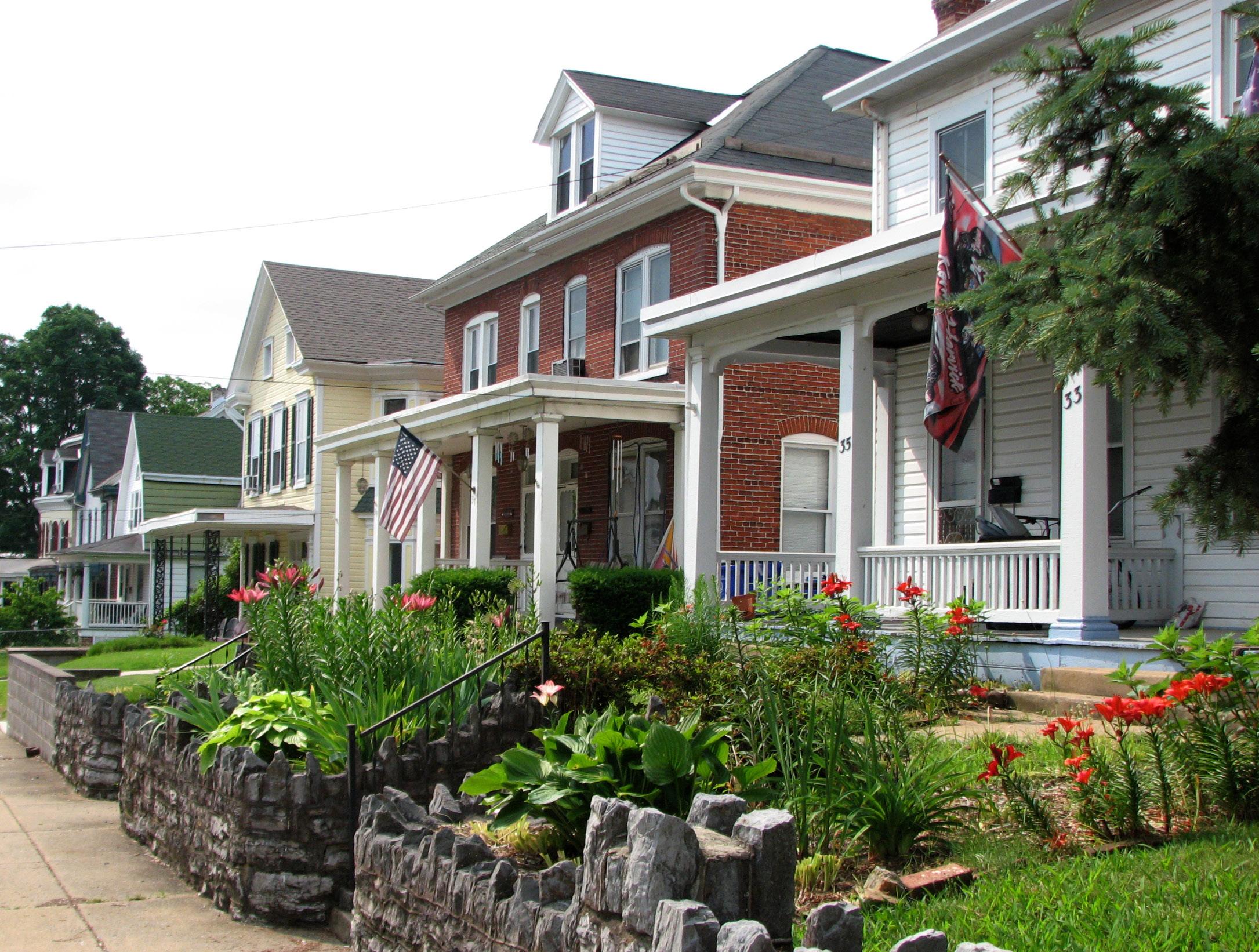
RES Advisors completed the Market Study in two phases:
Phase 1: RES Advisors conducted a preliminary market scan in coordination with Planning Coordinator existing conditions assessment, which included a 1.5-day site visit by RES to Hagerstown.
Phase 2: RES Advisors produced a technical report identifying a market for non-replacement housing in mixed-income scenarios for the Hagerstown Choice Neighborhoods. The report was completed in August 2024.
The Market Study utilized the following approach to understand the housing market and inform the Housing Plan for the Hagerstown Choice Neighborhoods:
• Collected and reviewed background material about the neighborhood, HHA target properties – Parkside Homes, Douglass Court, and Frederick Manor – and the broader region.
• Conducted a field work visit to Hagerstown in March 2024.
• Defined a PMA within which housing in the Hagerstown Choice Neighborhoods will compete for renters and purchasers.
• Collected and analyzed economic and demographic data to understand housing demand dynamics in the PMA and regional economic trends influencing the Choice Neighborhoods and PMA.
• Evaluated spending potential in basic neighborhood retail categories (i.e., fresh food, pharmacy).
• Collected information on traffic counts in major commercial corridors in the Hagerstown Choice Neighborhoods.
• Used Ribbon Data’s proprietary HISTA tabulations (Households by Income, Household Size, Housing Tenure, & Householder Age), Census data, and demographics from Claritas and ESRI to prepare a housing demand analysis.
• Surveyed existing income-restricted and market-rate housing communities and interviewed local municipal representatives to identify planned and proposed additions to regional housing supply.
• Interviewed local rental housing managers and real estate agents to obtain first-hand information on housing market trends, renter and homebuyer profiles, perceptions of the Hagerstown Choice Neighborhoods, and residential preferences in the broader PMA.
• Reviewed housing sales data and trends in the Hagerstown Choice Neighborhoods and PMA including price, unit types, and sales volume data.
• Reconciled supply and demand to identify supportable housing types and pricing with market support that could be components of the Hagerstown Choice Neighborhoods Transformation Plan.
The Hagerstown Choice Neighborhoods Market Study identified key strengths, weaknesses, opportunities, and threats that will influence the approach to and successful absorption of new mixed-income housing in this community. These are summarized below and represent the highlevel findings form the Market Study.
There are strong population, household, and employment growth trends that are driving demand for residential development.
• There are numerous well-maintained parks and recreation space within the community.
• Recent growth and investment in Theatre, arts, sports, and entertainment in Hagerstown will draw renters and buyers of all income levels.
• There are churches, nonprofits, and CDCs within walking distance of the target housing sites.
• There is a strong sense of community of longterm residents and a desire to remain in the neighborhood.
Frederick Manor is disconnected from downtown businesses and located in predominantly industrial area.
• There is a lack of fresh food access.
• While there are many vacant or underutilized commercial properties, there is limited vacancy for new residential development.
• Missing critical community amenities include sufficient childcare facilities and a walkable full-service grocery store.
• There is limited availability of affordable workforce housing units.
• There are limited affordable homeownership options.
• Housing should include options that are affordable to households employed in the warehousing and logistics industry.
• The Jonathan Street corridor (area where Parkside Homes and Douglass Court are located) has many long-time residents with a strong desire for community revitalization.
• Community Partner Horizon Goodwill Industries will open a new full-service grocery store that will help alleviate challenges for Hagerstown Choice Neighborhoods residents to obtain healthy food items.
• There is market demand for LIHTC housing without a unit-based subsidy.
• There is demand for additional affordable for-sale properties targeted to first-time homebuyers.
• There is a missing middle-income rental market in the Hagerstown Choice Neighborhoods that could be addressed with new product as part of the Choice Neighborhoods housing program.
• Failure to address the challenges of homelessness and crime downtown could slow the absorption of market rate units.
• Lack of sufficient housing options will slow the labor force growth in Hagerstown and impact the community’s successful economic development efforts.


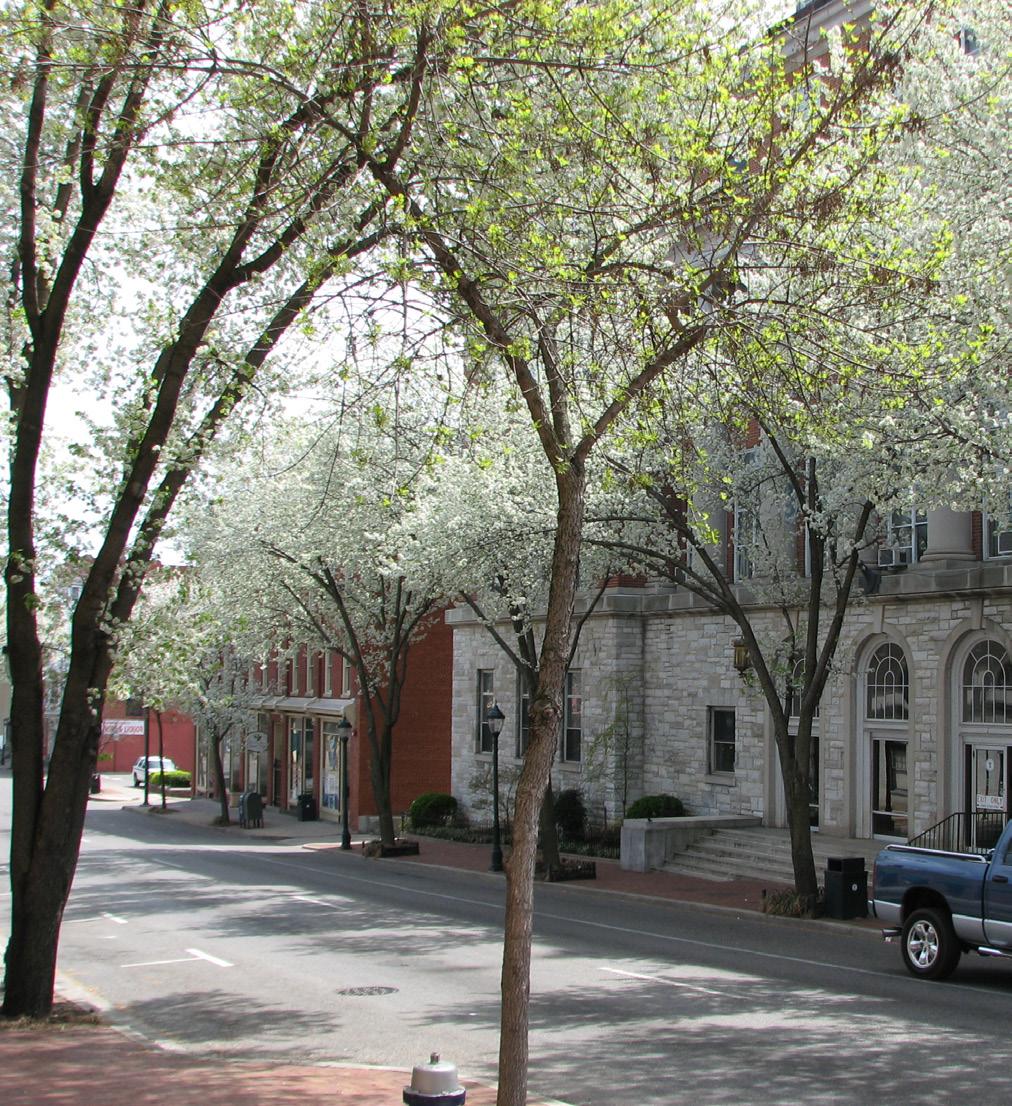

Percentage of Renter Occupied HH
• 0%-25%
• 26%-50%
• 51%-75%
• 76%-90%
• 91%-100%
• Choice Neighborhoods

Target housing sites
0 750 1,500 Ft
Source: US Census Bureau, 2022. ACS 5-yr Estimates
The Hagerstown Choice Neighborhoods has a higher concentration of renter households compared to other areas in the city.
The Hagerstown Choice Neighborhoods housing landscape is dominated by renters, with many facing significant economic challenges. Vast portions of the area are comprised of rental units, with many areas showing between 75100% of rental occupancy. Owner-occupied parcels are less common in the Hagerstown Choice Neighborhoods compared to other areas of Hagerstown where owner-occupied units are the majority, reflecting a more stable economic environment. The areas of homeownership within the Hagerstown Choice Neighborhoods footprint are limited, and where they exist, they tend to be clustered in smaller sections or near the edges of the neighborhood.
This high prevalence of rentals in the Hagerstown Choice Neighborhoods, higher poverty rates, and the lack of affordable homeownership opportunities underscore a broader challenge in creating stability, building generational wealth, and long-term investment in the community. The imbalance between renters and owners poses a significant gap in opportunities for homeownership and wealth-building, and continues a reliance on unpredictable rental markets that can worsen economic inequality.
The Hagerstown Choice Neighborhoods community faces the dual challenge of accessing affordable housing while also creating viable pathways to homeownership, within the constraints of limited vacant land; however, while vacant land is limited, there are opportunities to create housing by renovating vacant or blighted properties.
70%
THE COMMUNITY SAYS: of residents from the larger neighborhood, who are renters, would like to work towards buying a home in the next 5 years. of HHA housing sites residents
59% and
A majority of HHA housing residents express a desire to purchase a home within the next five years, indicating a strong interest in homeownership. Both the Resident Needs Assessment and Neighborhood Survey reveal the top priority in working towards homeownership is financial assistance programs to achieve this goal. There is a clear interest in financial support to make homeownership more accessible.
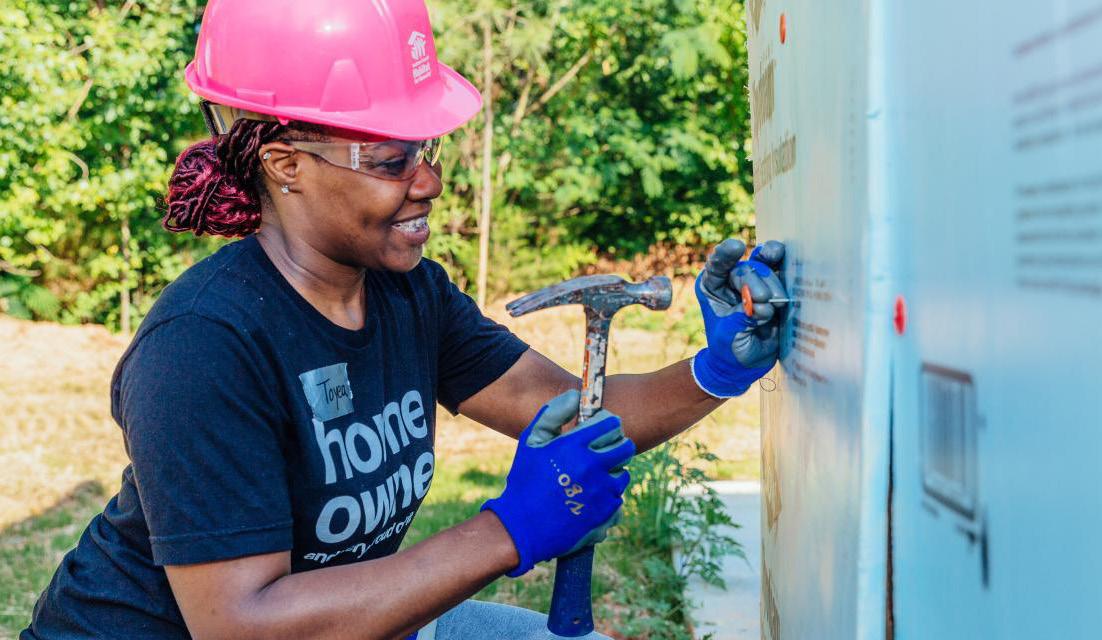
As a long-time provider of affordable housing opportunities in Hagerstown and Washington County, Habitat for Humanity is proud to partner with the Hagerstown Choice Neighborhoods Initiative to advance the vision for an equitable, accessible, and affordable mixed-income community. We look forward to continuing our partnership with the Hagerstown
Housing Authority and City of Hagerstown to identify opportunities to bring affordable homeownership opportunities through the Choice Neighborhoods Initiative. We will be a partner to enhance stability of the Hagerstown Choice Neighborhoods and ensure that all households have the opportunity to access affordable, quality housing.
Neighborhoods
“My Hagerstown is... a more united community.”
“I would like to see a place all can call home, with safe areas to play and be outside.”
“I would like to see safer housing sites where children can play outside.”
“My Hagerstown is... a community with housing options.”
“My Hagerstown is... a safe and welcoming community!”
“It is important to address the sense of ownership in the community so neighbors take care of it.”
“Quality of life would be improved if neighbors knew and cared for each other.”
“I would like to see traffic-calming at the housing sites”
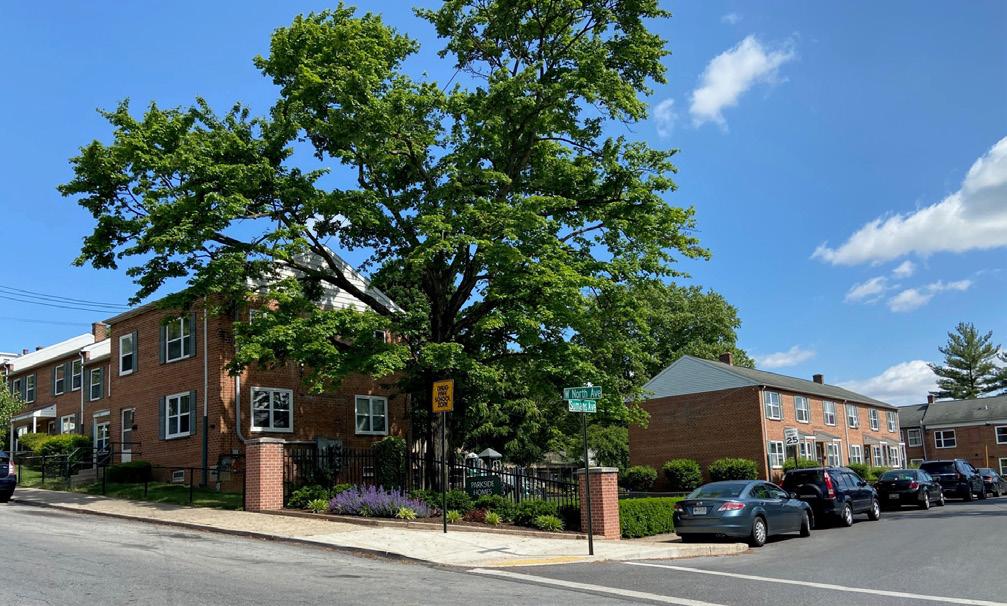




My Hagerstown is... a community where everyone trusts each other, has a sense of belonging, and takes care of their neighbors.

The Hagerstown Choice Neighborhoods is anchored by three HHA housing sites, each with its unique history and community. Douglass Court, Parkside Homes, and Frederick Manor each tell an important story about Hagerstown’s evolving urban fabric and community character.
Douglass Court is a small HHA housing site embedded within Hagerstown’s traditional street grid. Connected to its surroundings in a north-south direction, seven townhouse apartment buildings are situated along Park Place in the northern area of the Hagerstown Choice Neighborhoods. The complex includes 30 units and there were 81 residents at the start of the Choice Neighborhoods Initiative in fall 2023. Unit size ranges from one- to fivebedroom homes.
The buildings reflect the typical architecture of the area with brick materials and modest facades. Buildings are set off from the street in a barrack-style configuration, allowing for
If redevelopment of the HHA housing sites were to happen, most HHA residents would like to return to their current housing site. This suggests a strong connection to the local community, with many interested in maintaining local roots.
landscaped front yards and narrow sidewalks, but there are no crosswalks or greenery to provide shade. Due to the limited amount of available land within the Douglass Court footprint, there are no true community gathering spaces; however, there are amenities such as backyards, a basketball court, and a playground.
Residents have access to open space amenities and services within walking distance, being close to Robert W. Johnson Community Center, Wheaton Park, the historic Jonathan Street corridor, and downtown Hagerstown. Despite its relatively small size, Douglass Court is strategically located to take advantage of nearby community services while maintaining a quiet, residential atmosphere.

Parkside Homes is a slightly larger HHA housing site with 39 units across seven buildings. At the start of the Hagerstown Choice Neighborhoods Initiative in fall 2023, there was a total of 87 residents. Like Douglass Court, it is connected through a one-way, wide, north-south street, Sumans Avenue. The buildings are arranged along that street, with one structure oriented perpendicularly at the entrance, creating a semi-enclosed layout. Buildings are set off the street, allowing for wide landscaped front yards that feature mature trees and narrow sidewalks. Parkside Homes offers access to a resident community center and a playground, with the City of Hagerstown’s Wheaton Park located at the end of the street. The location of Parkside Homes allows for connection and easy walkability to nearby assets including downtown Hagerstown services and amenities, the Jonathan Street corridor, and the Robert W. Johnson Community Center.
Frederick Manor is the largest of the HHA housing sites within the Hagerstown Choice Neighborhoods Initiative, and it is located in the far south end of the boundary. Frederick Manor is comprised of 125 units, housing 309 residents at the start of the Choice Neighborhoods Initiative in fall 2023. Frederick Manor is isolated from the street grid, bordered by a commercial corridor to the east and a cemetery to the west. This location in a predominantly industrial and commercial area gives Frederick Manor a distinct sense of being set apart from the rest of the city. The housing site consists of a 29-building complex with its own street grid configuration with two entrances from Frederick St. The two-way streets are wide, with large front yards and buildings that reflect the Hagerstown architectural style with brick materials and modest facades. The Frederick Manor site has its own set of amenities including a large play area, multiple playgrounds, and a community center which also features a gym leased by the Boys and Girls Club of Washington County, providing additional opportunities for children and families. Walkable infrastructure is limited to narrow sidewalks with no shade and crosswalks only directly across the community center. Although somewhat disconnected from downtown activity and services, Frederick Manor is within walking distance of other assets and services like Memorial Park, Bester Elementary School and Bester Community of Hope, Potterfield Pool, the new Field House, and Hager Park.
PREDOMINANT
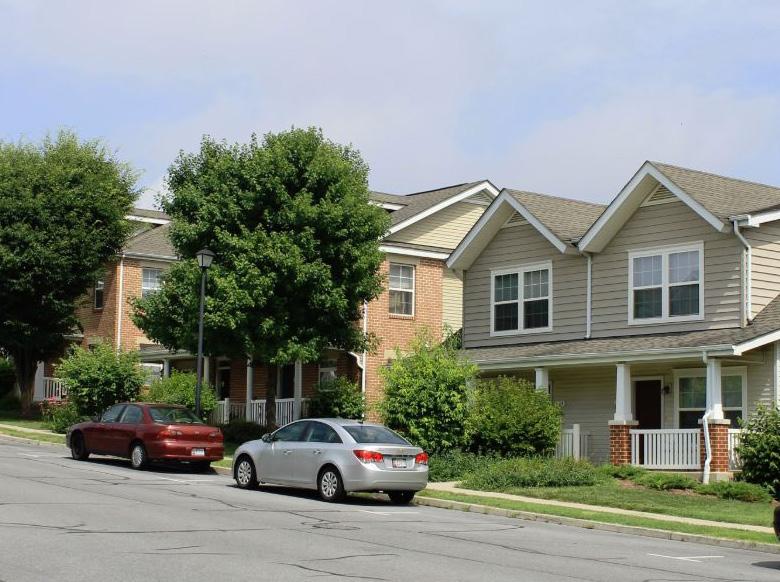

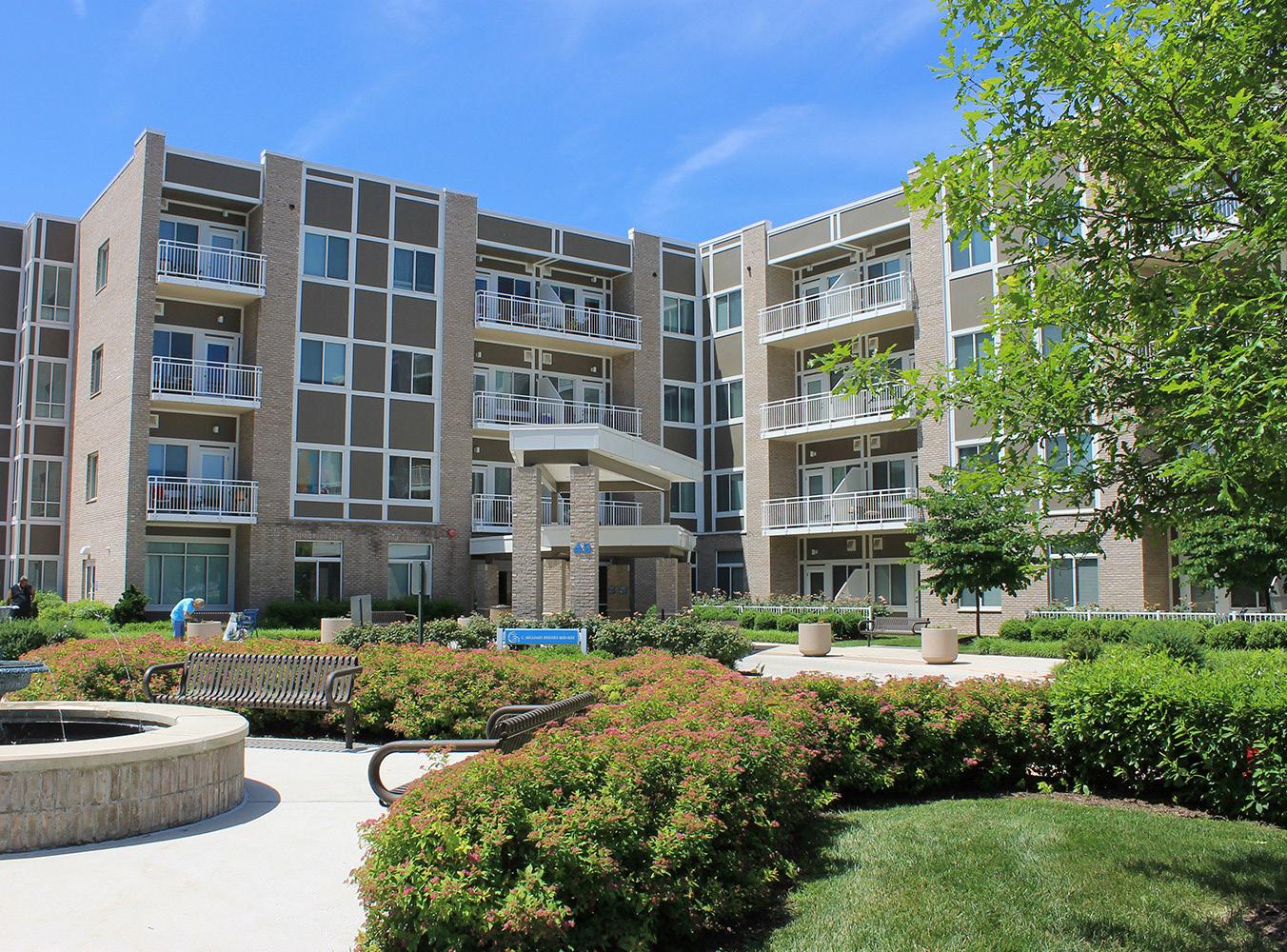
In addition to Douglass Court, Parkside Homes, and Frederick Manor, there are a range of other affordable housing options provided by HHA and other entities within the Choice Neighborhoods footprint, serving as essential resources for low- and moderate-income families across the city. These properties are strategically located to provide residents with access to services and amenities located mainly in downtown Hagerstown.
My Hagerstown is... affordable housing for all residents.
Properties such as CW Brooks (HHA), Potomac Towers (HHA), Martin Heights (HHA), Bethel Gardens (privately owned/operated), Elizabeth Court (privately owned/operated), or Alexander House (privately owned/operated), offer a mix of housing types supported by Section 8 and other federal housing programs. Each site provides affordable housing with varying levels of services, and wait lists range from multiple months to multiple years. In addition to these properties, HHA’s portfolio of properties is spread throughout Hagerstown including McCleary Hill, Gateway Crossing (Hope VI), and Walnut Towers, showcasing HHA’s commitment to providing affordable housing options across multiple neighborhoods and equitable opportunities for all Hagerstown residents.

Affordable Housing
• HHA properties
• HHA Scattered Sites
• Farmers Home/ 236 Projects
• Low and Moderate Income Bonds
• Section 8 New Construction Housing
• Other affordable housing sites
• Choice Neighborhoods

Target housing sites
Source: City of Hagerstown; Hagerstown Housing Authority
HHA maintains a porfolio of 1,337 dwelling units in 11 communities. There are also privately owned/operated affordable housing sites in the city.
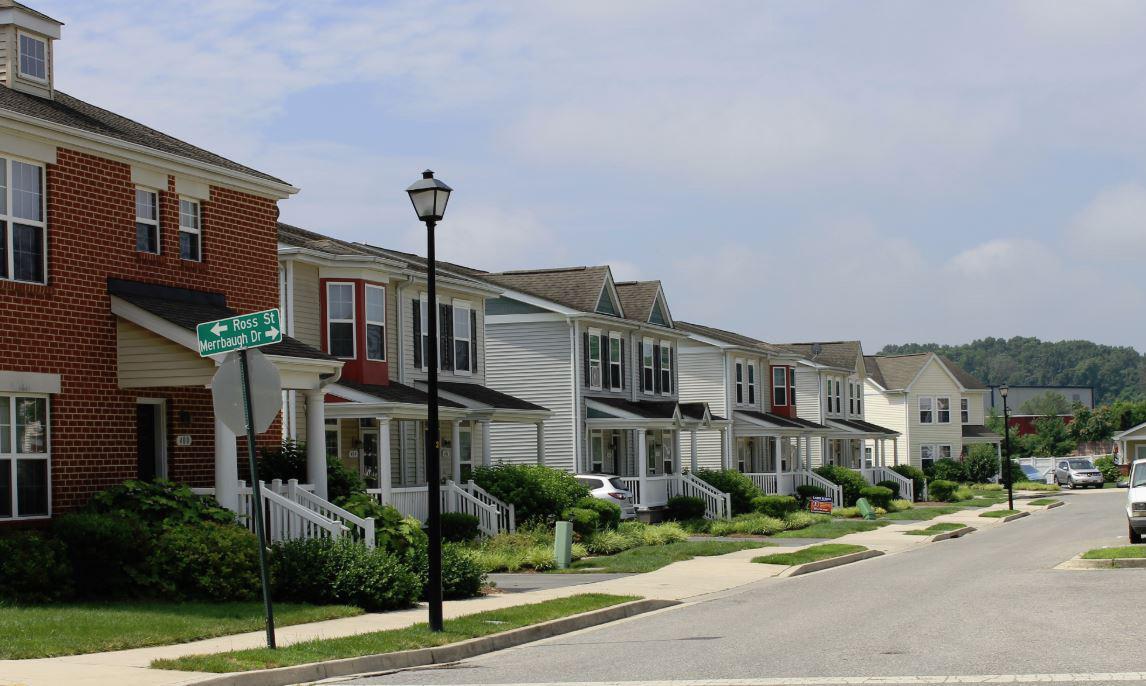
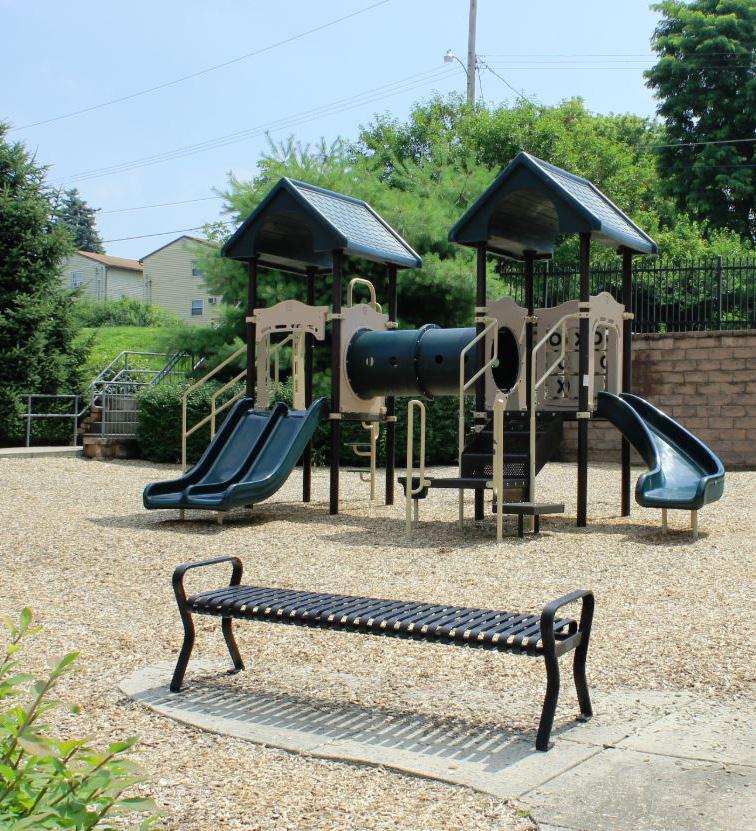
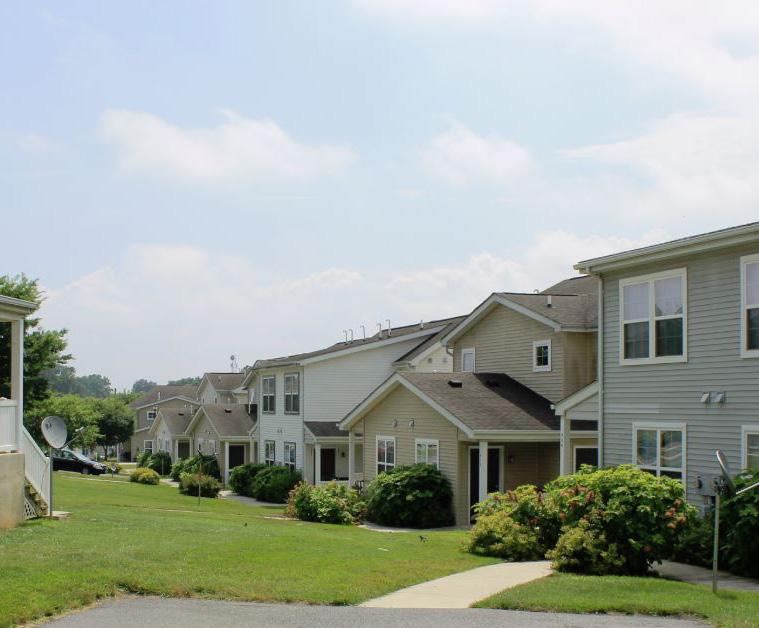

Over 20 years since its completion, the Gateway Crossing Public Housing Project represents a significant pillar in the transformation of Hagerstown’s West End. Made possible through a $27 million HOPE VI grant from HUD (forerunners of today’s Choice Neighborhoods Grant through HUD), it sits as evidence of the impact of investment in community-oriented comprehensive neighborhood revitalization efforts. Adjacent to the heavily frequented “Hagerstown City Park,” Gateway Crossing was aimed at replacing the outdated 210-unit Westview Homes with 150 new public housing units. The project developed an additional 140 affordable rental units and a mix of 110 affordable and market-rate homeownership units. In total, Gateway Crossing comprises nearly 352 mixed-income housing units. Supported by design partners Wallace, Roberts & Todd and Pennrose Properties, the Gateway Crossing development was designed to integrate seamlessly with the existing neighborhood, and features Victorian- and Craftsman-style townhouses and gardenstyle apartments that blend into the fabric of Hagerstown’s west side.
With the Gateway Crossing Project, Hagerstown Housing Authority and the City of Hagerstown set out to create a vibrant mixedincome community that aligned with HUD’s objectives of reducing poverty concentration and promoting diverse communities. The development sparked renovations in the surrounding areas, encouraging other
property owners to invest in improvements. Hagerstown attracted an additional $44.7 million in investment towards the Gateway Crossing vision, leveraging local and state resources, including low-income tax credits and community development block grant funds. This funding supported development projects beyond housing. Elgin Station, a pivotal component of the Gateway Crossing Project, was completed in 2003 and serves as a community hub for Hagerstown’s western quadrant. Designed to resemble an old train station, paying homage to the area’s railroad heritage, the 23,000 square-foot facility functions as a recreation and resource center. Elgin Station provides a venue for Head Start, Boys & Girls Club and other community-based initiatives. It includes a gym, commercial kitchen, communal meeting spaces, and tech labs. Funding was also secured and allocated for neighborhood beautification efforts, including improved landscaping, street lighting, and pedestrian-friendly sidewalks.
While the impact of Gateway Crossing extends beyond housing, the main priority remains providing affordable housing for Hagerstown residents. At Gateway Crossing, residents pay rent based on 30% of their monthly adjusted income, minus a utility allowance. This structure helps ensure affordability for low-income households. The current Hagerstown Choice Neighborhoods Plan has a quality project to reference as it aims to improve quality of life for residents of Parkside Homes, Douglass Court and Frederick Manor.
Economic development should lead to economic opportunity and the Hagerstown Choice Neighborhoods is already seeing significant downtown investment and growth. In order for this growth to be equitable and inclusive, jobs need to be accessible, workforce training needs to be available, and services such as childcare, healthcare, and afterschool programming need to be easy to access and afford. Hagerstown is growing, and we will make sure the Hagerstown Choice Neighborhoods is part of this exciting opportunity.
| The Farmers Market supports Hagerstown’s local businesses

Originally known as the “Hub City” for the many railroads that run through it, Hagerstown has always benefited economically from its location. In addition to the railroad industry, the economy has historically been fueled by manufacturing tied to the aircraft and automobile industry, furniture manufacturing, silk mills, foundries, printing industry, etc.
“Hub City” still carries relevance today. Beyond its benefit as a branding tool, Hagerstown’s location at the crossroads of several major transportation routes (including I-70 and I-81) has kept it an attractive target for manufacturing companies and medical/health industries that serve as economic catalyst of the region. As Hagerstown continues its recovery from the COVID-19 pandemic, a rise in job opportunities in recent years is primarily fueled by the movement of e-commerce, warehousing, distribution, manufacturing, and medical/health industries to the area.
Today, residents of the Hagerstown Choice Neighborhoods and the three HHA housing sites face significant economic challenges, with many
households earning well below the city’s median income. This income disparity is one of the factors that highlights the need for economic development that provides access to stable, living-wage jobs. Through the Residents Needs Assessment, the community has expressed that transportation, the lack of affordable, quality childcare, and the predominance of low-wage jobs that do not meet the economic needs of families are the main barriers to employment. Residents see transportation and childcare as critical factors to allow more households to join the workforce. The community is seeking more job opportunities within the neighborhood footprint, which can help to alleviate transportation challenges and foster a stronger local economy.
The community is eager for initiatives that support workforce development, create job opportunities, and provide skill-building and training to advance in the workforce. Hagerstown Choice Neighborhoods residents are seeking a safer and more vibrant community with accessible services and jobs, where families can thrive, and businesses can grow. FARMERS
The community has voiced a need for stable, living-wage jobs, as many residents are currently employed in positions that do not meet their families’ financial needs. The low rate of job opportunities that provide a sustainable income in the immediate residents’ area is a major concern.
Residents would like to participate in workforce development programs that offer skill-building and job training to boost their employment opportunities. Advancing their careers and being able to access better-paying jobs is something residents want to pursue.
Transportation is one of the main barriers to access employment. For those without a personal vehicle, public transportation and costly rideshare services limit their ability to commute to work. Residents would like improved transportation options to connect to Hagerstown’s employment hubs more easily.
The Hagerstown Choice Neighborhoods sits proximate to one of the region’s fastest growing centers of economic activity, but it is also home to Hagerstown’s most economically disadvantaged residents. The median household income of the Hagerstown Choice Neighborhoods resident remains notably low compared to the City of Hagerstown and Washington County. Residents within the Hagerstown Choice Neighborhoods fall into the lowest income brackets, with the median income of the area being $24,500, which is half of the citywide median income of $48,481.
Residents in the Hagerstown Choice Neighborhoods have voiced a clear need for wellpaying job opportunities. About 50% of residents at Parkside Homes, Douglass Court, and Frederick Manor are currently unemployed, and of those unemployed the majority have not had a job for 6 months or more. This long-term unemployment highlights a critical need for job options that meet the skill levels and needs of the local workforce. There is a strong desire for more employment opportunities within Hagerstown itself, as many residents currently must seek work outside the city, leading to additional transportation and time challenges.
RESIDENT NEEDS ASSESSMENT
Income reported by HHA housing sites residents: THE COMMUNITY SAYS:
Focusing on the HHA housing sites of Parkside Homes, Douglass Court, and Frederick Manor, 60% of residents have reported household incomes of less than $20,000 through the Resident Needs Assessment. This disparity in incomes highlights a pressing need for economic development initiatives that can help increase economic mobility among residents.
In the Resident Needs Assessment, 38% of HHA residents at Parkside Homes, Douglass Court, and Frederick Manor reported that they are working in areas within the city but outside the Hagerstown Choice Neighborhoods boundary and 31% are finding employment outside of Hagerstown. The proximity to downtown Hagerstown presents an area of opportunity for Hagerstown Choice Neighborhoods residents, but there are other areas of opportunity for employment in proximity. Several employment hubs, like those related to logistics, distribution, and healthcare, exist within the city and region. To maximize employment opportunities for residents, multiple areas of opportunity must be addressed, including enhancing mobility and access, and workforce development training.

Median Household Income
• Less than $25K
• $25K-$50K
• $50K-$75K
• $75-$100K
• Choice Neighborhoods

Target housing sites
Source: US Census Bureau, 2022. ACS 5-yr Estimates
Compared to other areas of the city, Hagerstown Choice Neighborhoods has some of the lowest median incomes. 0 0.5 1 Mi
• Greater than $100K
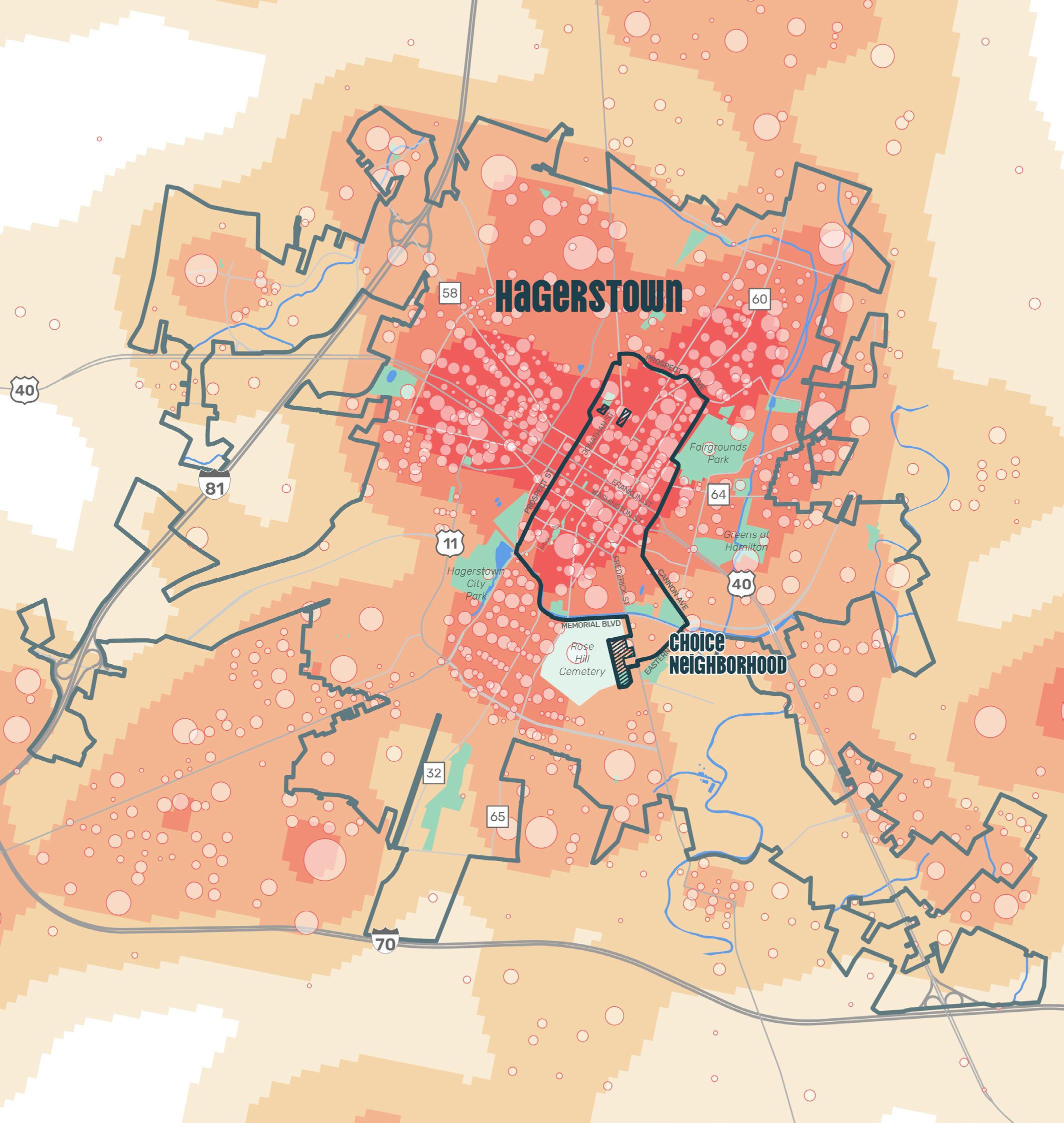
Source: US Census Bureau, 2021. On The Map
The Hagerstown Choice Neighborhoods is a hub for employment in the city and region.
Overall, Hagerstown shows strong workforce participation and an unemployment rate that is below the national average (~3%). As reported in the Resident Needs Assessment of Parkside Homes, Douglass Court, and Frederick Manor residents, 19% are currently unemployed and seeking new employment, 18% are unable to work, and 9% are unemployed but not seeking employment. 56% of HHA residents that are employed report working in three industries, healthcare/social services (21%), food service (21%) and warehousing/distribution/logistics (15%). Healthcare/social services and food services are among the leading sectors of employment for the region overall, but warehousing/distribution/logistics is the fastest growing sector.
THE COMMUNITY SAYS:
Through the Resident Needs Assessment, residents at HHA’s housing sites identified that lowwage jobs, even if available, do not provide sufficient income to meet basic needs. Additionally, many residents face difficulty accessing affordable, quality childcare, and they identified access to this service as the intervention that will have the greatest impact on career attainment, advancement, and quality of life.
19% of respondents to the Residents Needs Assessment report being unemployed and looking for a job, and among unemployed residents, difficulty finding jobs locally was identified as the top barrier to full-time employment. Setting up residents for success with workforce development training, building local connections, and an enhanced quality of life will play a critical role in ensuring residents are equipped with the tools and have the capacity to enter into the workforce.
The Resident Needs Assessment and Neighborhood Survey show that the community, while facing barriers to employment, is ready to overcome challenges and work towards a stronger local economy in the Hagerstown Choice Neighborhoods. Aspirations are focused on improving access to jobs that provide a wage to support their families, enhancing transportation options so that all residents can access jobs, and expanding childcare services to allow more parents to participate in the workforce.

Expanding and strengthening the pipeline of living wage jobs accessible to residents within the Hagerstown Choice Neighborhoods area is a real opportunity, as the elements and environment to expand job opportunities is already a priority of local businesses and employers in the Hagerstown Choice Neighborhoods. According to the Business Owner Survey, 46% of businesses in the Hagerstown Choice Neighborhoods want to expand their operations. Less than 10% are considering downsizing over that same period.
THE COMMUNITY SAYS:
RESIDENT NEEDS ASSESSMENT
What are the barriers to employment for you and/or your family?
It is difficult to find available jobs locally Not enough/convenient transportation options
The available jobs do not make economic sense
It is difficult to find quality, affordable childcare
Most of these businesses rely on the local workforce and report having difficulty filling available jobs, with most of their employees currently living outside the Hagerstown Choice Neighborhoods.
The workforce support programs used most frequently by residents include Western Maryland Consortium, low barrier skill development training through Horizon Goodwill Industries, and job matching services through private companies like ManPower, Spherion and Aerotec.
The available modes of transportation and ability to access them are key factors that affect residents’ employment opportunities and ability to meet their daily needs. 73% of employed Parkside Homes, Douglass Court, and Frederick Manor residents rely on car transport to get to work; 61% of that report owning a car, and the other 12% rely on rideshare services or rides from family and friends. A very small percentage of HHA residents reported using public transit (2.5%) and with a slightly larger number of residents choosing to walk as their primary mode of transportation (5%).
With transportation being a significant barrier for many residents, and the reality of many employment clusters located outside of the Hagerstown Choice Neighborhoods, the ability to maximize regional job opportunities for HHA housing sites residents will be greatly aided by increased transit service to and from job centers.
Parkside Homes residents stood out from Douglass Court and Frederick Manor residents in their focus on transit-based transportation challenges. They identified the frequency, reliability of buses, and location of bus stops as three of their top four transportation challenges.
Most residents rely on personal vehicles to get to work, but for those without access to a car, they shared there are few alternatives. The Resident Needs Assessment identified multiple transportation challenges: public transportation is seen as unreliable due to the limited routes, rideshare services are too expensive, and the lack of safe pedestrian pathways makes walking a risky option – all of which make it difficult for residents to reach job employment opportunities. HHA residents have voiced the need for more convenient and affordable transit options, which will support employment options and quality of life in the neighborhood.

Washington County Community Action Council (CAC) plays a crucial role in fostering economic opportunity and mobility, effectively alleviating poverty for households in Hagerstown and the broader Washington County community.
The CAC is already operating multiple programs that serve the Hagerstown Choice Neighborhoods area including food assistance, energy assistance, mentorship, transportation
to key employment centers, and many other essential services to support and lift up those living in poverty. As the Hagerstown Choice Neighborhoods Initiative moves forward, CAC will continue to be a key partner in supporting the community, collaborating on new programs and initiatives, and engaging with the implementation of the Transformation Plan to build pathways to economic opportunity and stability.
Neighborhoods
“My Hagerstown is... a healthy, strong, inclusive community.”
“We could benefit from workforce training programs.”
“My Hagerstown is... a place with more job and housing opportunities.”
“We need more training for high school graduates.”
“We need more alternatives for affordable transportation.”
“My Hagerstown is... a place with better public transportation.”
“Job fairs for residents would great!”
“My Hagerstown is... a community with access to opportunities.”

Financial Investment Tools
• Enterprise Zone
• Choice Neighborhoods
Source: City of Hagerstown

• Opportunity Zone Target housing sites
The City of Hagerstown has implemented several economic development tools to spur community revitalization, particularly evident in recent investments and planned developments in and around the downtown area. The Hagerstown Choice Neighborhoods includes key Enterprise and Opportunity Zones, two tax incentive tools Hagerstown has at its disposal to support economic investment and that present a valuable opportunity for urban development and community revitalization
These two place-based tax overlays function cooperatively. 4,000 acres of Hagerstown and Washington County were designated Enterprise Zone in 1992, and it encompasses key regional
The Hagerstown Choice Neighborhoods community has prioritized physical improvements in the commercial areas of the neighborhood. Residents feel that increasing public safety efforts, better lighting, and more beautification are essential to creating an inviting and vibrant environment and attracting more businesses and customers. Business owners have echoed the need for these improvements, and a notable percentage of business owners are interested in expanding their operations but face barriers in securing financing or finding suitable spaces for growth.
economic areas including the Central Business District in downtown Hagerstown. Enterprise Zone Incentives have allowed businesses in Hagerstown to apply for income and property tax credits to spur expansion and job development. Hagerstown further incentivizes development in this area by easing eligibility requirements for businesses locating downtown. Opportunity Zones were established in 2017 to spur long-term private investment in economically distressed communities through tax benefits for investors. The Hagerstown Choice Neighborhoods sits inside a Federal Opportunity Zone increasing the ability to attract capital for potential development in the neighborhood.
For residents, there is a priority for economic development investments and tools that can lead to increased employment opportunities and improved infrastructure, upgraded public spaces, and additional services that directly benefit the community.
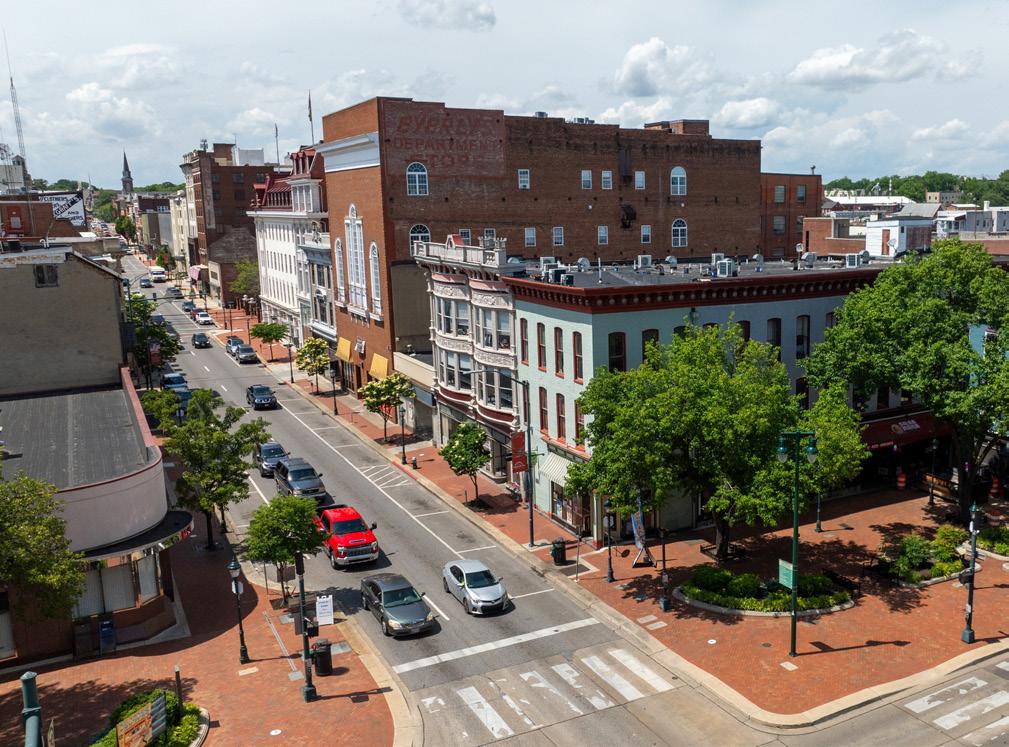
In 2014, Hagerstown drafted and began implementing the 10-Year Community’s Center Plan aimed at revitalizing and enhancing the downtown area. Hagerstown Choice Neighborhoods residents have a unique opportunity to capitalize on the ongoing downtown development. Since 2015, key projects such as the Maryland Theatre Performance Arts Center, the expansion of the Barbara Ingram School for the Arts, and the Hagerstown Cultural Arts Trail have spurred downtown development. Between 2020-2024, there has been $190 million in downtown investment and 182 housing units have been renovated/created. Citywide, between 20202024, there has been $827 million of investment (inclusive of downtown) and over 1000 housing units are planned or in the development pipeiline. This surge of investment brings job opportunities in sectors such as construction, retail, hospitality, and education, providing employment prospects for local residents.
There is a strong desire for a safer and more vibrant commercial environment, where local businesses can thrive and provide services and jobs directly to the neighborhood, creating a more prosperous and sustainable community and local economy.
Planned future projects in the region such as the Meritus School of Osteopathic Medicine is projected to have an impact of around $263 million on the local economy and will further the demand for local services and businesses, allowing residents to pursue economic and job opportunities in these areas.

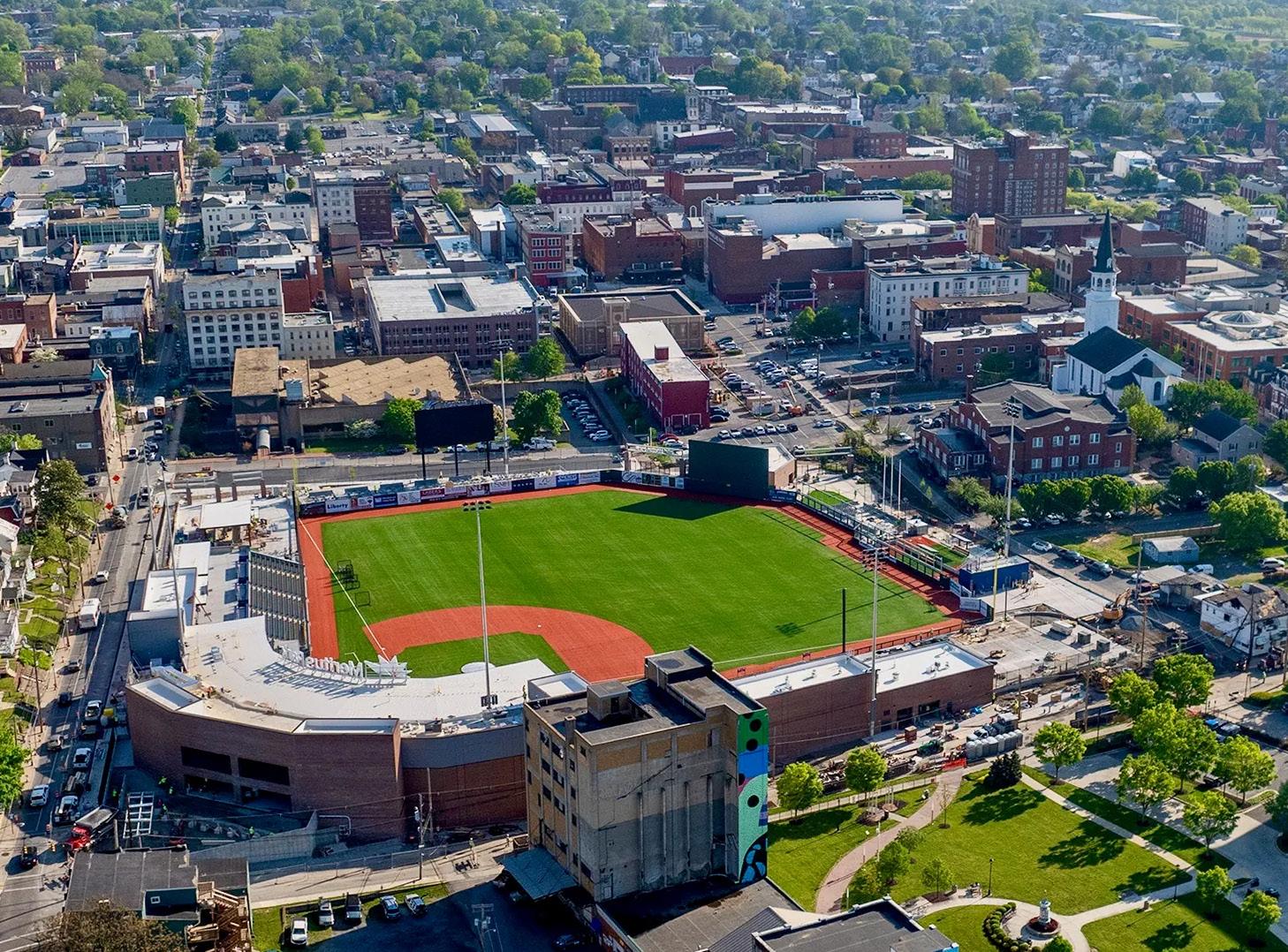
DOWNTOWN HAGERSTOWN | N Potomac Street hosts a number of local businesses

The Hagerstown Choice Neighborhoods community has been clear that a healthy, safe, and connected neighborhood is key to a future in which everyone thrives. The ability to access essential services – grocery stores, doctors’ offices, social service agencies – as well as the opportunity connect to resources – libraries, community centers, places of worshipgreatly affects quality of life. A sense of community safety and security is essential to fostering a sense of belonging and support within the Hagerstown Choice Neighborhoods.

The Hagerstown Choice Neighborhoods faces challenges related to health, wellness, and safety, but there is a strong community with a shared desire and drive to overcome these difficulties. There are high rates of residents with health insurance in the Hagerstown Choice Neighborhoods, but in the Resident Needs Assessment HHA residents at Parkside Homes, Douglass Court, and Frederick Manor reported concerns of limited healthcare facilities located in Hagerstown Choice Neighborhoods. Concerns include the need for extended hours at healthcare facilities and additional transportation options to access these services. Mental health is also a major concern, not only for adults but also for children and youth in the Hagerstown Choice Neighborhoods. HHA residents identified the need for more mental health services, reduced stigma around mental illness and substance abuse, and expanded services and educational programs.
Food insecurity is another pressing issue, with about 22% of HHA residents at Parkside Homes, Douglass Court, and Frederick Manor not having enough food to eat at least once per week due to affordability and transportation barriers. Residents at Frederick Manor had the highest rates of food insecurity, with 34% of respondents indicating
they do not have enough food in their household at least 1 to 2 days per week. Across all three housing sites, residents would like to see local food sources and programs that offer consistent, affordable, healthy food options that are accessible for all. Recent investments, including the Horizon Goodwill Industries grocery stores, have been positive steps towards food access in the Hagerstown Choice Neighborhoods.
Safety is also a top concern for both HHA residents and the larger Hagerstown Choice Neighborhoods community, with drug use, gun violence, and mental health identified as the top three safety concerns. Public safety initiatives, such as Crime Prevention Through Environmental Design (CPTED) and increased police presence have had success, particularly in the downtown revitalization areas. The community strongly supports additional safety measures including a larger presence of public safety officers, along with a desire to be actively involved in neighborhood safety efforts.
With strong community involvement and targeted interventions, the Hagerstown Choice Neighborhoods has the potential to overcome these challenges and create a healthier, safer, and more connected environment for all residents.
Residents express a need for more accessible healthcare services, especially mental health services. The community desires more mental health support and reduced stigma for youth and adults, and more local healthcare facilities with extended hours to better meet their healthcare needs.
Food insecurity is a significant concern, with many residents finding difficulty in accessing affordable, healthy food options. Residents voiced an interest in developing local food sources to improve access to fresh, nutritious food.
Drug use, gun violence, and public safety are some of the concerns residents have expressed within the Hagerstown Choice Neighborhoods footprint. The community actively supports being actively involved in making the neighborhood safer through community-driven strategies.
Health access in the Hagerstown Choice Neighborhoods reveals both challenges and opportunities for the community. Washington County’s top health concerns, which include mental health, substance abuse, the promotion of a healthy diet, asthma, and high blood pressure, align with the top health concerns identified in the Hagerstown Choice Neighborhoods Resident Needs Assessment.
Within the City of Hagerstown, adults with a disability make up 43.5% of the population while 10.3% of children have a disability, highlighting the importance of accessible healthcare services. Additionally, 12.2% of adults in Hagerstown lack health insurance, a rate that is higher than the county average. The absence of health insurance limits residents' access to preventive care and routine check-ups.
Although the Resident Needs Assessment and Neighborhood Survey reveal high levels of health insurance coverage, residents at Parkside Homes, Douglass Court, and Frederick Manor reported difficulty in accessing affordable, quality healthcare, with a focus on the need to extend hours of local healthcare facilities and transportation to major medical centers.
THE COMMUNITY SAYS:
RESIDENT NEEDS ASSESSMENT AND NEIGHBORHOOD SURVEY
How can access to quality healthcare be improved for you and your family?
Extending the hours of health facilities in the neighborhood
Locating more healthcare facilities in the neighborhood
Improving transportation to major medical facilities
Being able to access affordable prescriptions
In the Resident Needs Assessment, 98% of HHA residents reported that they take part on an annual medical check-up, and 57% take part in a free health screening. Despite these numbers, the majority of residents express concerns about the quality and availability of local healthcare services. HHA residents have clearly identified the need for more healthcare facilities within the neighborhood, particularly ones that are open for extended hours and provide a wider range of services that align with their most pressing health concerns. Additionally, improving transportation to major medical centers would remove significant barriers, as many have difficulties accessing healthcare outside their immediate neighborhood.
Residents also recognize the importance of addressing mental and behavioral health, particularly depression, anxiety, and posttraumatic stress. Based on findings from the Resident Needs Assessment and Neighborhood
RESIDENT NEEDS ASSESSMENT
In a typical year, do you take part in the following?
A free health screening Get vaccinations
Mental health is top of mind for HHA residents. In the Resident Needs Assessment, 68% reported that at least one member of their household was diagnosed with a mental health related illness. Moreover, residents identified mental health and a sense of belonging as the greatest challenges youth face.
At least one dental cleaning
Survey, there is a growing awareness of the need for accessible mental health services, particularly as the community grapples with the stigma surrounding mental illness and substance abuse. Substance abuse, in addition to mental health, is an issue that impacts the overall perception of safety in the Hagerstown Choice Neighborhoods. There is agreement between the Resident Needs Assessment and Neighborhood Survey that substance abuse-related activity is the greatest threat to public safety and that initiatives should be put into place to reduce stigma, improve access to treatment, and support recovery.
The community aspires to see a healthcare system that is more locally responsive, with a focus on expanding services within the neighborhood and ensuring all residents can access the care they need regardless of access to transportation and cost.
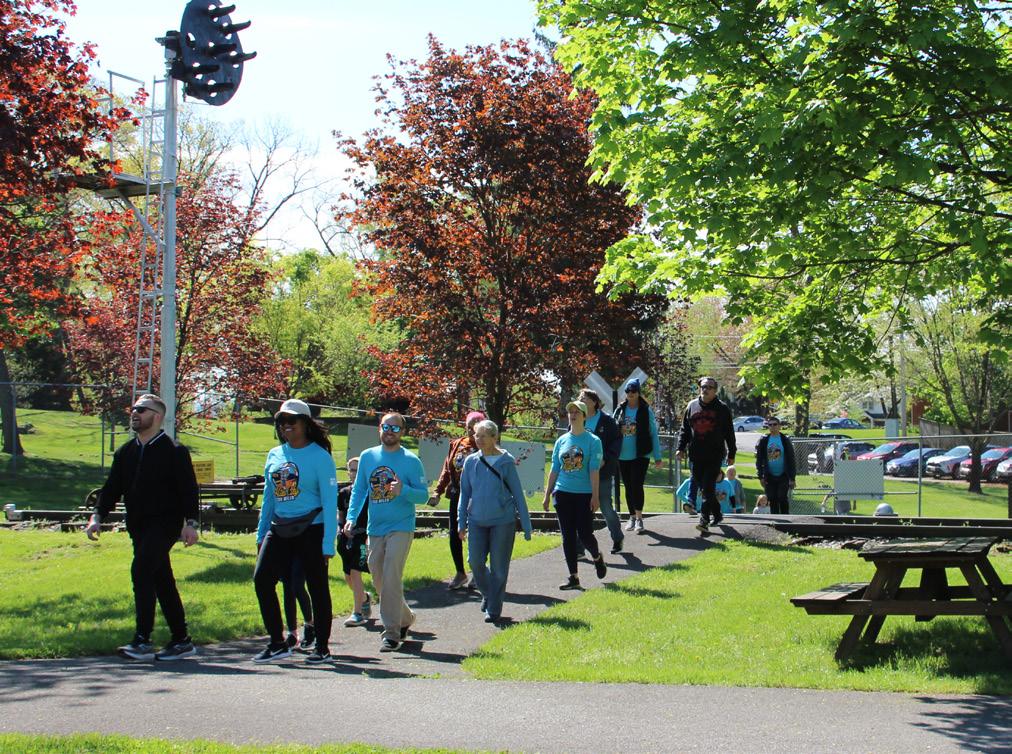

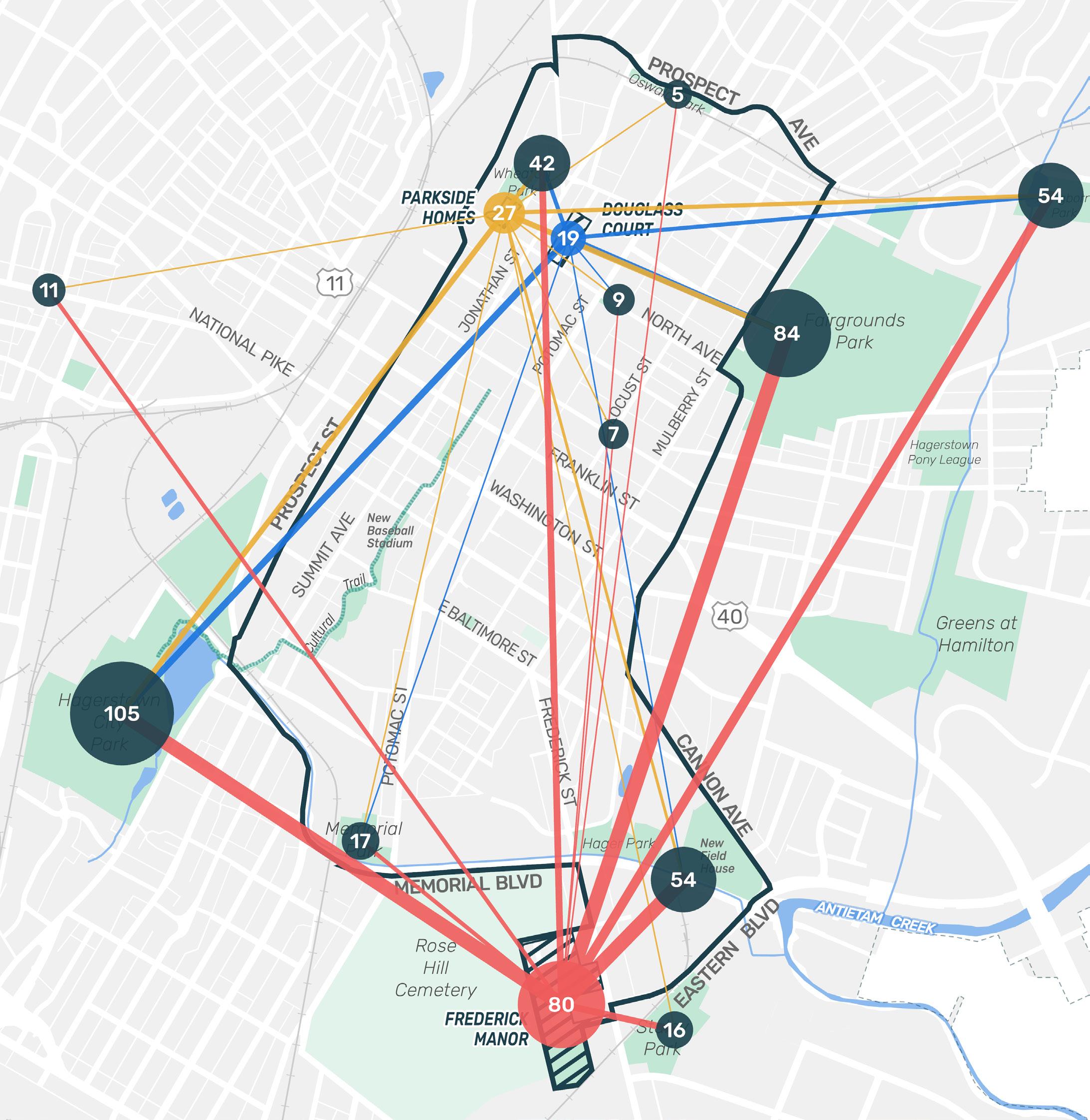
Resident Movement to Parks and Open Spaces
• Parkside Homes Residents
• Douglass Court Residents
• Choice Neighborhoods

• Frederick Manor Residents Target housing sites
Neighborhoods
Source: WRT; Resident Needs Assessment: 126 responses Through the Resident Needs Assessment, we asked housing sites residents what open spaces they use the most to better understand resident movement in the Hagerstown Choice Neighborhoods. This map represents resident movement from the housing sites to open space assets. Blue circles represent parks and open spaces and includes how many times the asset was mentioned; colored lines represent amount of movement from each of the housing sites.
In the Hagerstown Choice Neighborhoods, access to open space plays a critical role in community health and recreation. One of the amenities valued most within the Hagerstown Choice Neighborhoods is access to quality parks and open spaces. While Hagerstown City Park and Fairgrounds Park are the most popular outdoor spaces, the Hagerstown Choice Neighborhoods community also frequently visits smaller parks like Pangborn Park, Hager Park, and Wheaton Park, which just recently received a $500,000 investment for park upgrades. These patterns suggest that many community members travel outside their immediate area to access recreational and green spaces, demonstrating that there is a need for more recreational areas within the Hagerstown Choice Neighborhoods footprint.
HHA residents at Parkside Homes, Douglass Court, and Frederick Manor identified mental health and behavioral issues as one of the challenges the community is facing. The Resident Needs Assessment highlighted that activities such as fitness programs, sports leagues, and outdoor activities can help support a healthier lifestyle and overall wellbeing. The importance residents placed on wellness and mental health services reflects a broader desire to create a more supportive and active community that promotes physical and emotional wellbeing.

While many of the residential areas within the Choice Neighborhoods footprint are within a 10-minute walk to open space, there are parts of the Hagerstown Choice Neighborhoods that remain underserved thus limiting opportunities for outdoor activities. The Resident Needs Assessment also identified concerns around pedestrian safety and the walkability of the Hagerstown Choice Neighborhoods, which can be an additional challenge to accessing open space, particularly for the young and elderly who may have more limited mobility.
RESIDENT NEEDS ASSESSMENT
What do you think about the following statements regarding community health in your neighborhood?
Extreme heat is another concern, especially in urban areas lacking sufficient green infrastructure and greenery. Continuing to develop existing parks and finding opportunities to create green open spaces could also have important environmental impacts for the Hagerstown Choice Neighborhoods. The Hagerstown Choice Neighborhoods experiences higher levels of heat compared to surrounding areas, which can exacerbate health risks for vulnerable populations. Increasing green areas and coverage in the Hagerstown Choice Neighborhoods would not only provide advantages to the overall quality of life of residents but can also contribute to improved physical and mental wellbeing of residents.
Feedback from the Resident Needs Assessment indicates a desire for more recreational opportunities in the Hagerstown Choice Neighborhoods. There is a lower rate of children from HHA housing sites participating in regular physical activity and there is an identified need for more adequate places for recreation and exercising. Residents expressed the need for more places where children can play safely and engage with their community. Expanding green areas and access to community spaces can help tackle effects from extreme heat and fulfill recreational needs of the community, while offering a healthier environment for physical and mental wellbeing of residents.

Heat Severity Index
• High
•
• Choice Neighborhoods

• Medium Target housing sites
Source: Trust for Public Land, 2023
The Hagerstown Choice Neighborhoods is a central area of heat severity within the city. 0 0.5 1 Mi
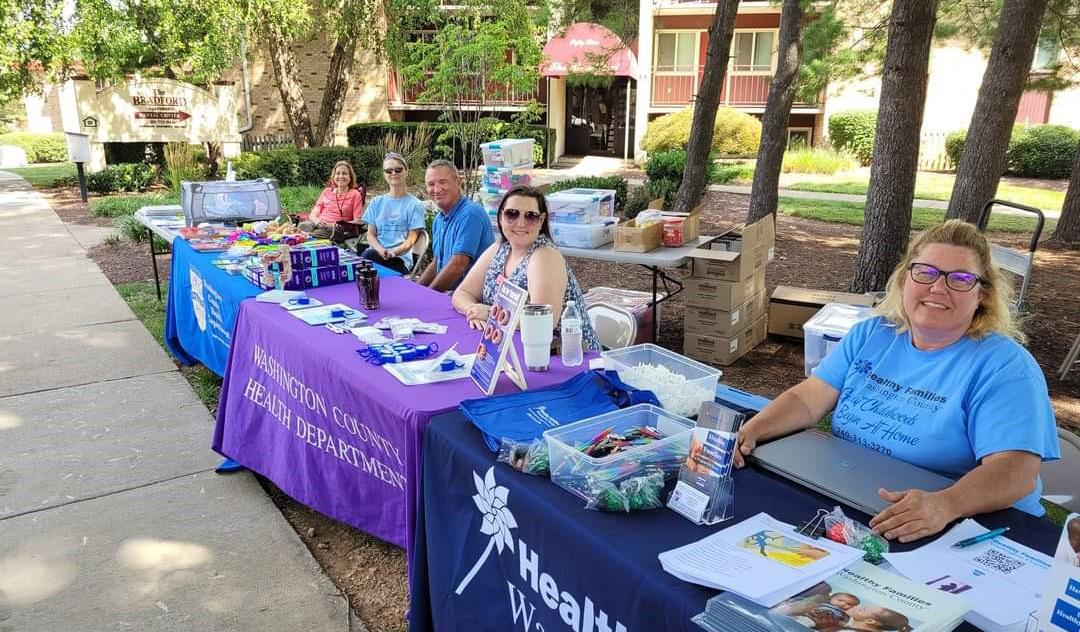
The Washington County Health Department is supporting the Hagerstown Choice Neighborhoods Initiative through community education and engagement around healthy eating, physical exercise and chronic disease prevention. We will continue to strengthen the partnership we have with after-school programs and youth groups in the identified areas to expand behavioral health prevention programs
and initiatives. We will also work with Hagerstown Housing Authority and their residents to identify new potential initiatives for residents regarding access to nutritious food, transportation, and the health and wellbeing of residents of all ages.
The Washington County Health Department is dedicated to providing any necessary staff and funding resources to support the Hagerstown Housing Authority and its residents in the Hagerstown Choice Neighborhoods Initiative.
“My Hagerstown is... community wellness and partnerships.”
“Mental health is a concern, the community needs access to services and resources.”
“My Hagerstown is... a community with more services and resources.”
“I imagine my community to be active!”
“We need better food access - anything fresh to supplement basic needs.”
“I would like to see more community support!”
“My Hagerstown is... more resources for people experiencing hardships.”
“The food pantry at Potomac Towers is great! It is a great service for the community and should exist in more places.”

Food Resources
• Grocery
• Walmart/Target
• Community Garden
• Small Grocery
• Convenience Store
10-Min Walkshed
• Grocery
• Walmart/Target
• Community Garden
• Small Grocery
• Convenience Store
Neighborhoods
Source: ESRI; WRT
There are currently no full-service grocery stores within the Hagerstown Choice Neighborhoods boundary. The map shows the locations of different food resources and areas that are within a 10-minute walk of each resource. A very small percentage of the Hagerstown Choice Neighborhoods is served by any of the full-service grocery stores.
Food access is among the biggest challenges in the Hagerstown Choice Neighborhoods, with disparities in availability and affordability of health food options. According to the Resident Needs Assessment, 21% of residents at HHA housing sites reported experiencing food insecurity 1 to 2 days a week, and 61% of respondents identified affordability as a primary barrier to securing enough food. 59% of residents report utilizing free or low-cost food resources in the last year, and 77% report receiving SNAP/WIC benefits in the same period.
Additionally, healthy food options in the Hagerstown Choice Neighborhoods are limited –residents must travel outside the neighborhood to access major grocery chains that meet their needs.
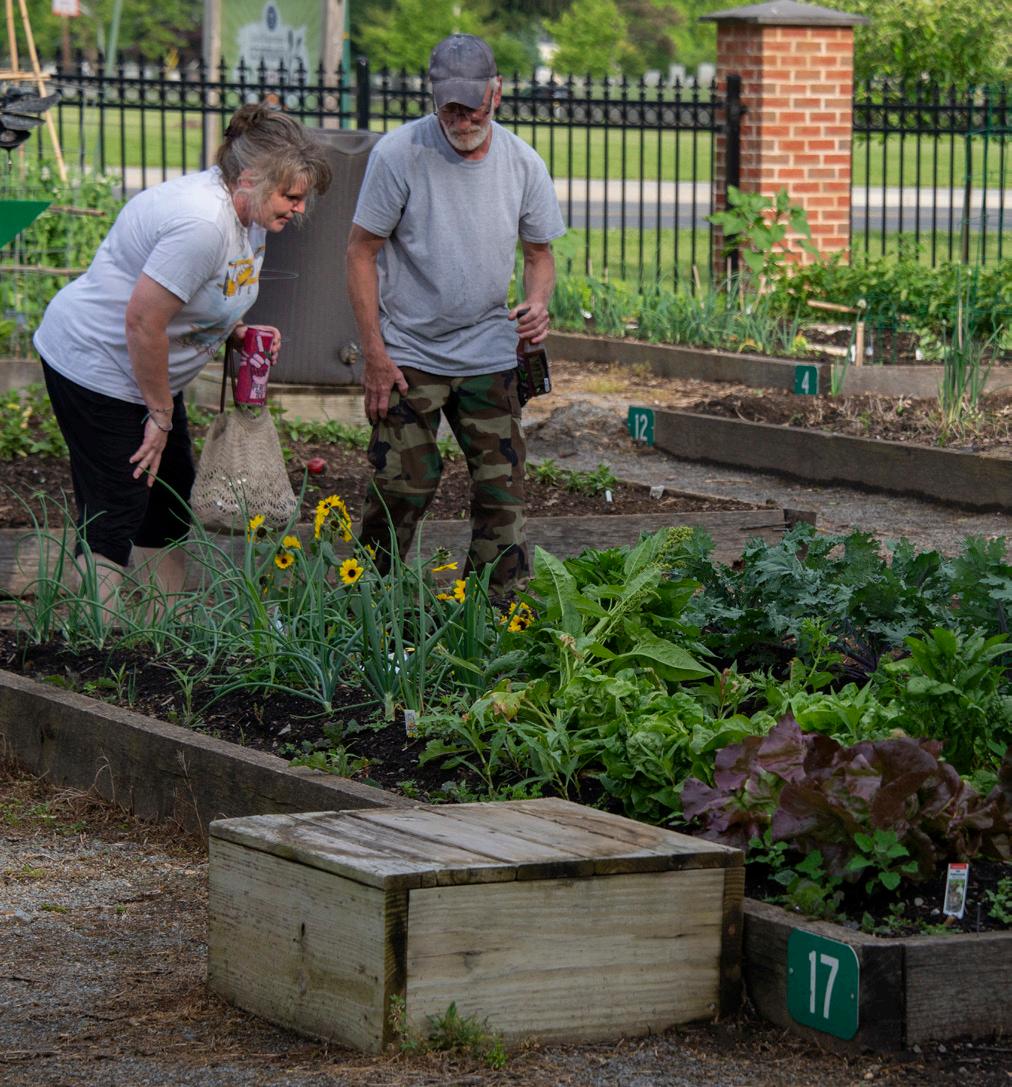
Food insecurity is a critical issue facing residents at the HHA housing sites that are part of the Hagerstown Choice Neighborhoods initiative. Many community members struggle to access fresh, high-quality food, due to both the lack of easily accessible full-service grocery stores in the Hagerstown Choice Neighborhoods and cost of food and groceries. The community has expressed the need for local solutions, such as community gardens and large spaces for markets to help address food insecurity. These initiatives could not only improve access to fresh food, but also offer opportunities for education, community pride, and sustainability.
THE COMMUNITY SAYS:
RESIDENT NEEDS ASSESSMENT
What amenities could enhance the neighborhood for you and your family?
Large spaces for pop-ups, seasonal, and/or farmers’ market
Community gardens
The reliance on personal vehicles, public transportation, and/or rideshare/cab services add to daily challenges residents face to accessing affordable, healthy food. The Resident Needs Assessment identified that 23% of residents have difficulty getting to the grocery store, emphasizing the need for local, accessible grocery stores that offer consistent, affordable, and nutritious food options.
Residents have expressed interest in expanding local food sources, with 41% supporting the development of spaces for markets and 34% supporting community gardens. Addressing food insecurity and availability within the Hagerstown Choice Neighborhoods are critical steps in enhancing wellbeing and the overall quality of life of residents.

While Parkside Homes residents agree that fresh food is available, Douglass Court and Frederick Manor show less than half of the residents agree with this statement, indicating gaps in food accessibility across the three housing sites.
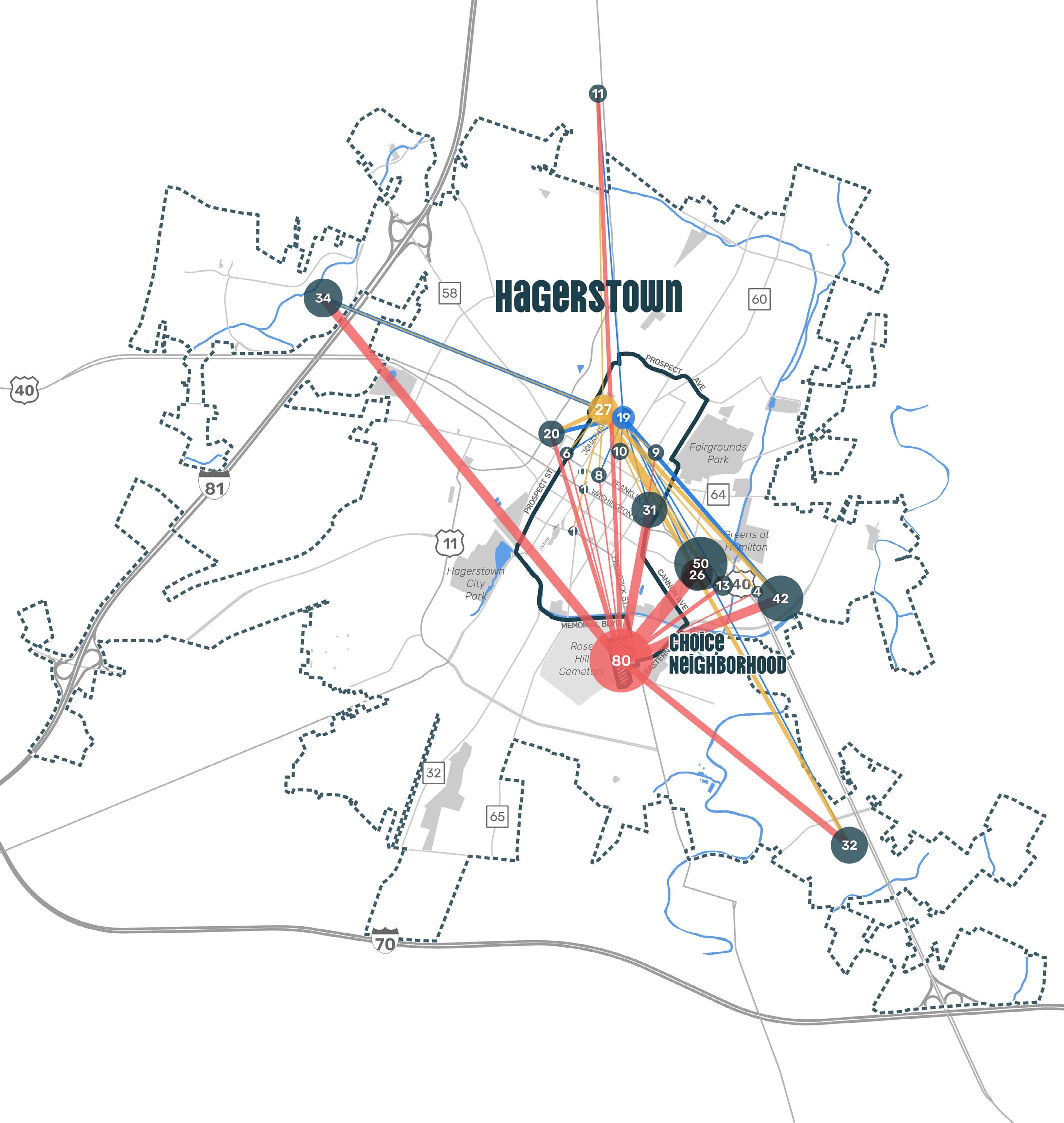
Resident Movement to Food Services
• Parkside Homes Residents
• Douglass Court Residents
• Choice Neighborhoods

• Frederick Manor Residents Target housing sites
Source: WRT; Resident Needs Assessment: 126 responses Through the Resident Needs Assessment, we asked housing sites residents where do they do their groceries to better understand resident movement in the Hagerstown Choice Neighborhoods. This map represents resident movement from the housing sites to grocery stores, convenience stores, etc. Blue circles represent grocery stores, convenience stores, etc. and includes how many times the asset was mentioned; colored lines represent amount of movement from each of the housing sites.
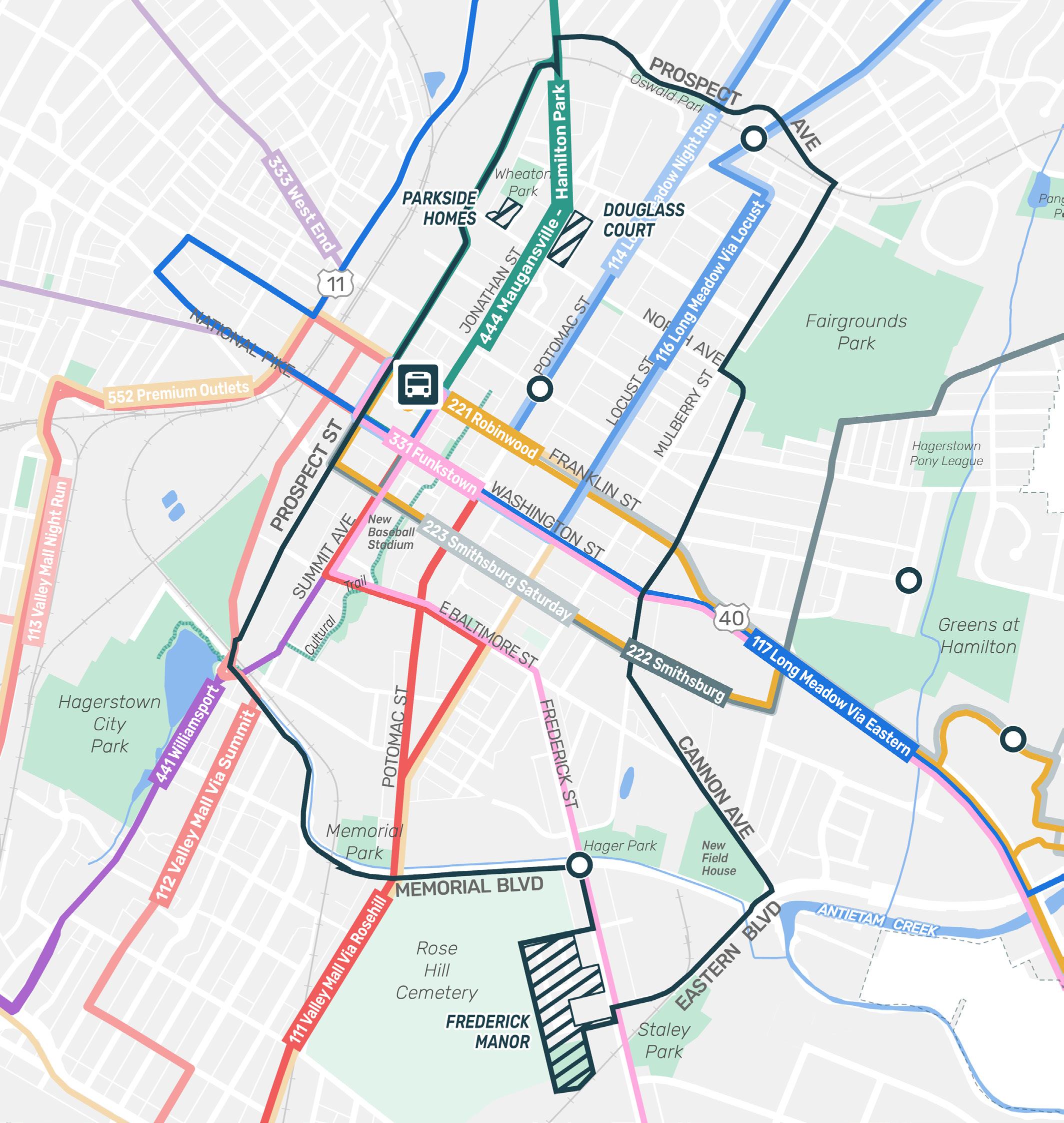
Transit Routes
• Bus Stop Transfer Center

• Funkstown
• Long Meadow via Estern
• Long Meadow via Locust
• Long Meadow via Night Run
• Maugansville-Hamilton Park
• Premium Outlets
• Robinwood
• Smithsburg Weekday
• Smithburg Saturday
• Valley Mall via Rosehill
Source: City of Hagerstown; Washington County Transportation Department
The Hagerstown Choice Neighborhoods is served by multiple WTC bus routes; however, not all three housing sites have equal levels of service.
Valley Mall via Summit
• Valley Mall Night Run
West End
Williamsport
Transportation presents a significant challenge for residents to be able to meet their daily needs. For those residents that do not own cars, availability and destinations of public transportation, and pedestrian infrastructure conditions create a barrier to access healthcare and food services, and recreational and wellbeing assets.
Hagerstown is served by the Washington County Transit Department (WCT), which operates eight bus routes connecting downtown Hagesrtown to surrounding municipalities. There is one bus route that is within close walking distance to Frederick Manor, and Parkside Homes and Douglass Court residents must go downtown to access transit services.
The Resident Needs Assessment identified transportation to food and healthcare services as one of the key obstacles to meeting daily needs in the Hagerstown Choice Neighborhoods. For residents without cars, options such rideshare services or public transportation are costly or inconvenient, creating additional burdens in to HHA residents and households. Addressing transportation needs is critical to improving residents’ access to essential services, helping them reach daily needs more easily to contribute to their health and wellbeing.
In the Resident Needs Assessment, HHA residents identified that more affordable and convenient transit options, improved road conditions, and better pedestrian infrastructure are key to alleviate some of the barriers to accessing services.
More recently, the City has intensively invested in creating one-street bike paths and sidewalks, which are now a requirement in Hagerstown for any new development site plans. Targeted investments in pedestrian, bike and transit infrastructure have economic, health, and public safety benefits for Hagerstown and its residents.

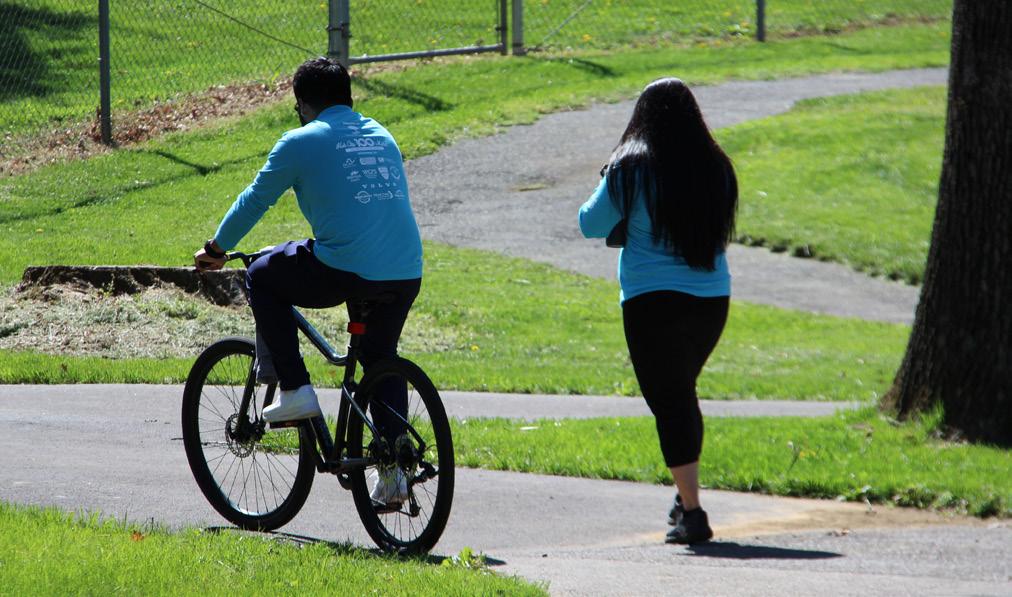
Public safety is a top concern for the Hagerstown Choice Neighborhoods residents, and it is foundational to achieving a high quality of life for all residents. HHA has been successful in creating an environment where residents feel safe; however, safety concerns still exist. 42% of residents reported in the Resident Needs Assessment that they felt unsafe at night, and that drug use, gun violence, and public drinking are top safety concerns across the three housing sites. To address these concerns, residents have suggested practical measures: better lighting, more visible police presence, and security cameras in public spaces.
NEIGHBORHOOD SAFETY
Safety is a top priority for the community, with significant concerns about drug use and violence in Douglass Court, Parkside Homes, and Frederick Manor. The Resident Needs Assessment and Neighborhood Survey identified that concerns around drug use and gun violence are the most pressing challenges. There is strong support for improved safety measures and engaging at-risk youth. Despite these concerns, there is a desire within residents to take an active role in making the neighborhood safer, with many pointing at a strong sense of community and the willingness to work towards a safer environment for all.
THE COMMUNITY SAYS:
RESIDENT NEEDS ASSESSMENT
Parents would like more awareness for mental and behavioral health, and substance abuse for children.
81% of respondents cite belonging in the community as an important pillar for children.
THE COMMUNITY SAYS:
RESIDENT NEEDS ASSESSMENT AND NEIGHBORHOOD SURVEY
Safety perception in the neighborhood:
safe for my children to walk home
The City has been working towards public safety efforts through strategies like Crime Prevention Through Environmental Design (CPTED), which has been implemented in the design of places such as the Field House, the Maryland Theatre, and the new multipurpose sports complex downtown.
Perception varies between residents at HHA sites, and community members that live, work or own businesses in other parts of the Hagerstown Choice Neighborhood. Residents at HHA sites feel safer and have a more positive outlook on safety than other neighborhood residents. On the other hand, only 31% of business owners feel their business is “located in a safe area.”
The Top safety concerns among all residents are drug and substance-related criminal activity as well as gun violence. Residents are invested in working on existing issues, a majority reported they are willing to take an active role in “making the community safer.”
Community involvement is crucial to improve safety. In the Resident Needs Assessment, 64% of residents have expressed a desire to take part in neighborhood safety initiatives, showing the community’s commitment to enhancing their community. Additionally, many parents are concerned with mental health and substance abuse, indicating a need for increased awareness and support services in these areas. Residents are hopeful that through community-driven strategies and collaboration with local authorities, a safer neighborhood can be achieved.
HHA has a security team that partners directly with Hagerstown police to address safety issues, investing in putting “more eyes on the street” and community-focused design and proactive policing efforts.
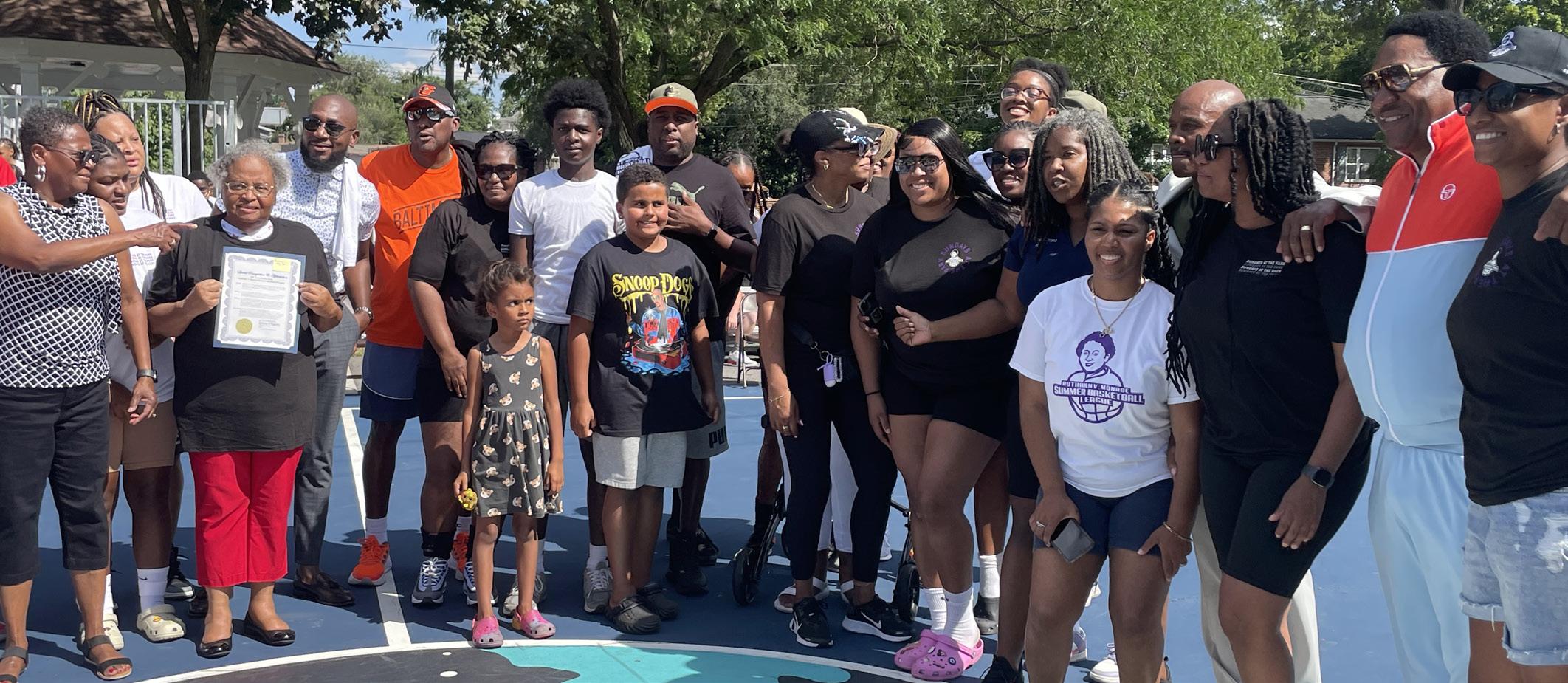
The Hagerstown Choice Neighborhoods’ future is its young people. From Pre-K to high school to college, children and youth in the Hagerstown Choice Neighborhoods need quality education, after-school programs, and recreational activities that are engaging, supportive, and build opportunities for a bright future. The community is committed to its young people and is ready to partner to ensure a future where everyone thrives.

Respondents to the Resident Needs Assessment and Neighborhood Survey have shared their perspectives on the challenges youth face in the community today, with residents expressing a desire to remain committed to addressing these issues and creating a more supportive, stable, and friendly environment for children in the community. Limited access to early childhood education is one of the key concerns in the Hagerstown Choice Neighborhoods community, with many families struggling to find affordable pre-K programs due to high costs and limited availability. Additionally, older children face challenges related to mental health, bullying, and a lack of resources in their social network,
creating an environment where many young people feel isolated or unsafe, impacting their ability to learn and thrive. On the other hand, residents shared they have strong confidence in the educational system and are willing to work alongside educators to ensure their children receive the support they need and have access to networks that create enriching environments.
The community is focused on expanding access to education, improving mental health support, and fostering a sense of belonging through recreational and creative activities. There is a collective commitment and effort to build a better future for Hagerstown’s youth, and create a path towards a stronger, more supportive environment where children can grow and succeed.
The community highly values children’s education and is committed to continue supporting their success. Residents are actively involved in their children’s education and believe in the quality of local schools although they express more resources and support is needed, especially for students facing mental health challenges and economic hardships.
Residents expressed a significant need for affordable, accessible childcare services in the community. Many families find it difficult to find available spots or afford quality childcare and early education programs, limiting their economic opportunities and children’s early development.
A key concern for the community is fostering a sense of belonging for youth. Many young people face challenges related to mental health, bullying, and isolation, and residents emphasize the need for more supportive environments, recreational programs, and mental health services to help youth feel safer and more connected.
The educational landscape of the Hagerstown Choice Neighborhoods presents both a picture of the challenges and demonstrates opportunities for growth, reflecting broader social and economic issues within the community.
Educational attainment among adults in the Choice Neighborhoods reveals that a significant portion of the population holds lower levels of formal education. Approximately 15% of adults over the age of 25 in the Choice Neighborhoods have not completed high school, and 10% hold a bachelor's degree or higher education. According to the Resident Needs Assessment, 45% of the head of household respondents across the three Hagerstown Housing Authority sites hold a high school degree and 3% hold a bachelor’s degree or higher.

Additionally, a growing number of Hagerstown’s youth (age 16-19) are neither enrolled in school nor participating in the workforce, with this trend affecting 16% of the population.
Lower levels of educational attainment can create obstacles and limitations for economic mobility of residents. Responses from the Resident Needs Assessment reinforce the need for greater investment in education and continuing education services and programs as well as engagement strategies and programs aimed at young people that will support their reentry into the educational system.
While challenges remain, there is a shared optimism about the future of education in the neighborhood. Residents are increasingly involved in their children’s education, working alongside educators to ensure that children receive the support they need. Efforts to continue providing resources that respond to family needs in schools are top of mind for parents and educators, helping to create a more inclusive educational environment.
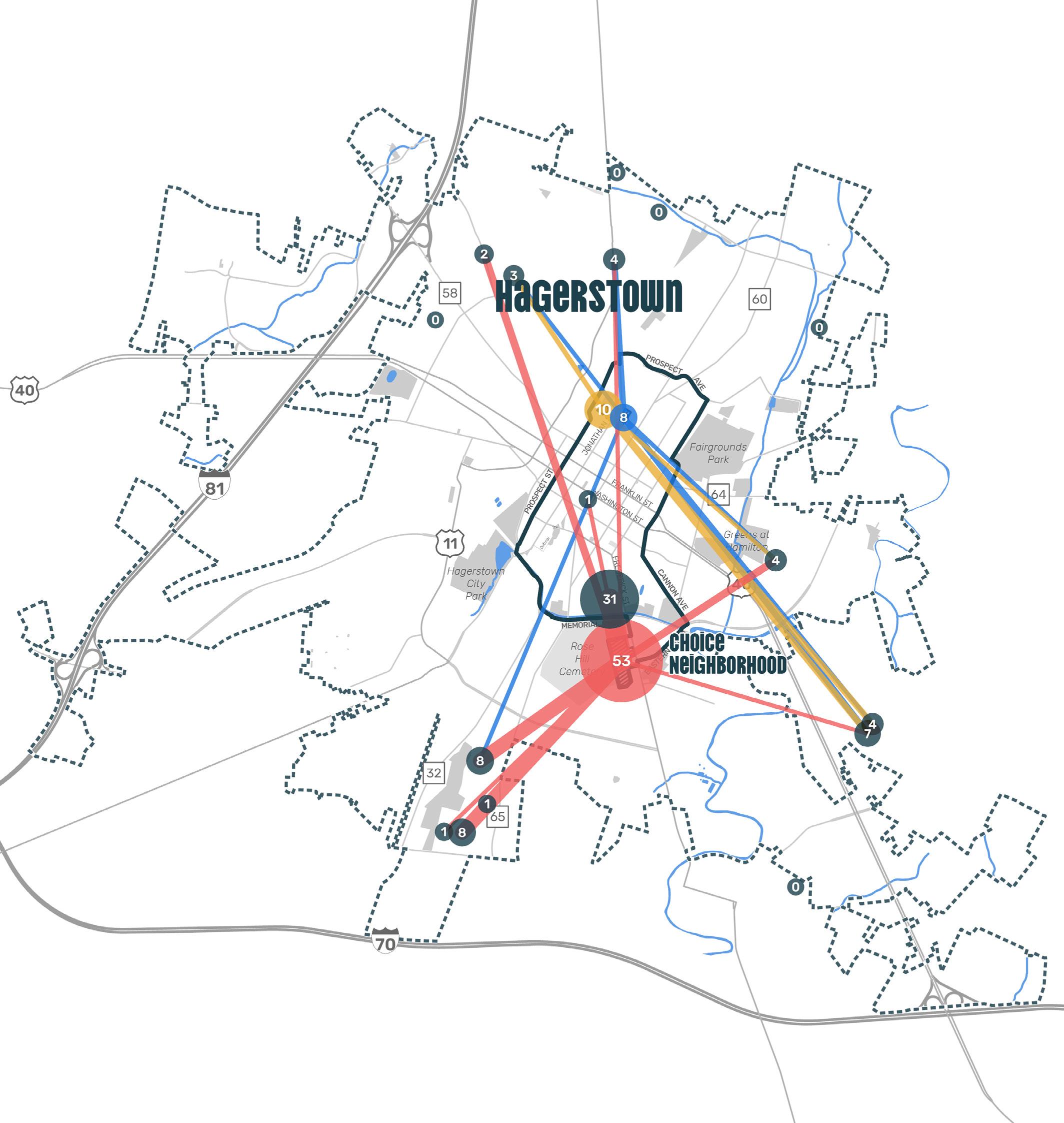
Resident Movement to Educational Facilities
• Parkside Homes
Residents
• Douglass Court
Residents
• Frederick Manor
Residents
• Choice Neighborhoods

Target housing sites
Source: WRT; Resident Needs Assessment
Through the Resident Needs Assessment, we asked housing sites residents where do their children go to school to better understand resident movement in the Hagerstown Choice Neighborhoods. This map represents resident movement from the housing sites to educational assets. Blue circles represent educational facilities and includes how many times the asset was mentioned; colored lines represent amount of movement from each of the housing sites.
The Hagerstown Choice Neighborhoods area is part of the Washington Public Schools and it is served by 12 schools located in the city.
Overall, residents of Hagerstown feel the school system provides a good education and academic opportunities to their children, and parents and staff are present in their children education, with plenty of opportunities for parents to get involved and staff offering frequent communication.
In the HHA housing sites (Parkside Homes, Douglass Court, Frederick Manor), a high percentage of households have youth dependents, with almost 25% of the population being under 5 years, and almost 28% being between 6-18 years old. A high percentage of
these children live in a single-parent household, which often faces greater economic and time-related pressures, but parents have demonstrated to be a continuous partner in their children education.
Through the Resident Needs Assessment, residents have expressed interest in taking an active role on their children’s education, and feel valued as a partner in their children’s education. Additionally, residents shared that their children are being engaged and motivated at school, and are receiving a high-quality education, demonstrating that Hagerstown’s educational landscape is setting up youth for success.

Still, some challenges remain. Economic hardships are also evident in the school system. Over 60% of all students in Washington County are eligible for Maryland’s Free and ReducedPriced Meals (FARM) program, a number that continues to rise. All 12 schools in Hagerstown participate in the Community Eligibility Provision, which ensures students receive free meals, though the high eligibility rate of Hagerstown studies speaks to the significant economic strain that many families face.
In recent years, there has been a marked increase in students requiring Individualized Educational Programs (IEPs) and English Language Learners enrolling in the school system. Increasing demand for specialized services and support within schools may place additional pressure on the local education system to provide adequate resources for all students.
Despite these socioeconomic challenges, there are assets in place that provide a foundation for future improvements. The school district’s ability to provide universal free breakfast and lunch through federal provisions helps alleviate some of the immediate economic pressure on families, ensuring students’ basic needs are met during the school day. Additionally, there is a strong commitment from parents, guardians, and the larger community to address these challenges as shown in the Resident Needs Assessment and Neighborhood Survey. What is your outlook on your child’s education?
I take an active role in my child’s education
My child is safe at school
I feel valued as a partner in my child’s education
School staff respects my child
My child is engaged and motivated at school
My child receives a high-quality education at school
My

Bester Community of Hope (BCOH), an initiative of San Mar Family and Community Services, is focused on prevention with a place-based strategy for positive outcomes for the children and families located in the South End neighborhood in Hagerstown. We utilize a collective impact approach through unconditional care emphasizing proactive, voluntary, authentic, and integrated community relationships, that maximize strengths and address root causes to cultivate hope and well-being driven by children, families, and communities. BCOH supported the Hagerstown Choice Neighborhoods Planning Grant application, serves on the People & Neighborhood Taskforce, and facilitated resident surveys for the Resident Needs Assessment. We look forward to continuing our collaborative efforts with the Hagerstown Choice Neighborhoods initiative by supporting residents in meeting the need of their families, strengthening the social capital through intentional investments in residents and neighborhood needs as well as leveraging resources to promote a safe & thriving community. Hagerstown
Neighborhoods
“My Hagerstown is... a community that invests in education.”
“We have after-school programs and summer camps, but there should be more antibullying support and education.”
“The future of my community involves children and youth!”
“Some of the root causes for children not playing outside are safety concerns and drug activity in the area.”
“My Hagerstown is... a community where families can come and have fun.”
“More daycare services and spots available are needed for young mums to be able to return to work.”
“My Hagerstown is... a safe place for children to live.”
“We need not just childcare, but activities for children outside school hours.”
Over 20% of the Hagerstown Choice Neighborhoods population is between 5-19 years old, and among the three HHA sites that are the focus of the Hagerstown Choice Neighborhoods that number is even higher. According to the Resident Needs Assessment, 58% of Douglass Court respondents, 37% of Parkside Homes respondents, and 66% of Frederick Manor respondents report to have children between 5-19 years old.
While families are deeply invested and involved in their children’s education, the Resident Needs Assessment revealed that there are critical gaps in support services that limit youth opportunities and affect their educational outcomes. Youth in the Hagerstown Choice Neighborhoods face a range of significant challenges that might affect their overall wellbeing and development. Sense of belonging, a crucial element for youth development, is identified as one of the main challenges. Mental health and bullying also contribute to a challenging environment where youth feel unsafe in educational and recreational settings. Lastly, substance abuse and exposure to drugs remain a concern for both parents and the community, creating additional barriers to a healthy development for youth.
THE COMMUNITY SAYS:
RESIDENT NEEDS ASSESSMENT
What are the most pressing issues youth face?
Access to Resources
Concerns such as mental health, bullying, and access to resources are the most pressing challenges for youth in the neighborhood, along with broader issues of safety, violence, and poverty. The residents and the larger Hagerstown community have expressed a desire to work towards community-driven solutions that create a safer and more supportive environment for children, with initiatives aimed at improving mental health services and fostering a stronger sense of belonging.
To address these challenges, residents have emphasized the need for additional services, programming, and physical spaces that focus on creating a supportive and engaging environment for children and youth. Among the additional services that the community thinks could help, mental health support and recreational and educational activities that can keep youth engaged in positive, productive activities outside of regular school hours are top priorities for supporting the wellbeing of youth in the communities.
While these challenges are considerable, the community is deeply invested in its youth, aiming to foster a safer and more supportive environment for children. Hagerstown Choice Neighborhoods residents, community members, and partners will be key to building a stronger, safer neighborhood where youth can thrive and set the stage for long-term economic growth and stability of youth.
With a high percentage of children under five years old in HHA housing sites and the Choice Neighborhoods, early childhood education and childcare is critical to setting a strong foundation for the children, yet a number of barriers persist.
With over 8,500 children under the age of five in Washington County and only 3,500 licensed childcare spots available, less than 40% of children have access to formal childcare overall. Additionally, the Hagerstown Choice Neighborhoods area is a “desert” for childcare services, as only one licensed provider exists within its footprint.
The community feels there is a need to work towards affordability and availability of local childcare and Pre-K programs to set a strong educational foundation for the youngest
members of the community. Additionally, quality, affordable childcare supports economic opportunity and mobility by ensuring children are supported and enriched while parents and guardians are at work, school, and workforce development programs.
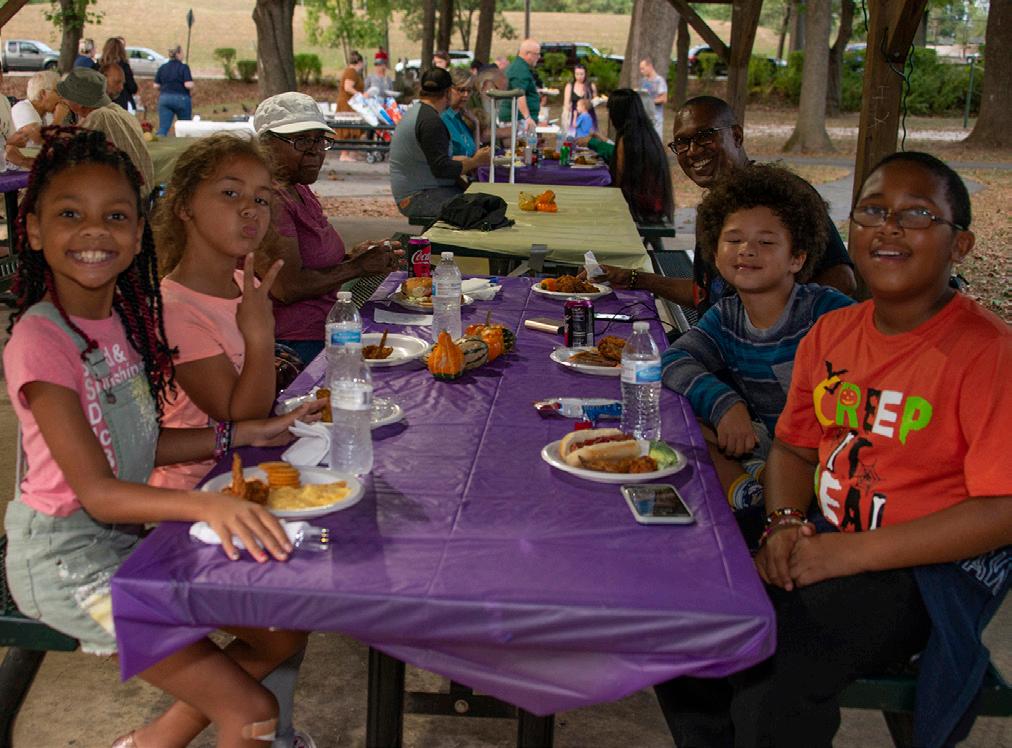
COMMUNITY SAYS:
My child does not attend an early childhood or pre-K program because... (of those respondents reported to have children under 5 years old)
Openings: none of the programs I tried had spaces available
Do not need it: we use a stay-at-home parent/guardian
Cost: I cannot find an affordable program that fits my needs
Quality: I cannot find a safe, quality, preschool program
Scheduling conflicts: the drop-off/pick-up times do not work with my schedule
Location: programs are too far or too hard to get to or I am not aware of anything close by
Many households in the neighborhood and HHA housing sites have children, underscoring the need for early childhood education and childcare programs. However, despite these rising trends, a lower percentage of households reported enrollment in early childhood or pre-K programs. Residents have shared that the barriers to enrollment are multi-faceted: limited openings and cost, finding quality programs, and having an existing support system utilizing stay-at-home guardians.

49% of Resident Needs Assessment respondents with children under 5 years old reported to have their children enrolled in an early childhood or pre-K program. There is an existing crisis in the field, as fewer people are entering the profession and it is harder to maintain or expand services available in the area.
The overall need for high-quality, accessible early childhood education far exceeds available resources in the Choice Neighborhoods. The challenges extend beyond just openings in childcare programs: 32% of Resident Needs Assessment respondents reported not being able to find an affordable and/or a highquality program that fits their needs, which further limits low-income families. Additionally, respondents cited logistical hurdles to accessing childcare such as transportation, conflicting schedules with employment, and locations of services. Of note, 22% out of all households in Parkside Homes, Douglass Court, and Frederick Manor with children under the age of five report relying on a stay-athome parent or guardian, which may limit the economic mobility opportunities of residents. The multi-faceted nature of these socioeconomic issues further stresses the need for supportive educational environments and robust early education and childcare services for all families within the Hagerstown Choice Neighborhoods footprint.
HOEDOWN | A large number of events in the City involve children, youth, and families

As the Hagerstown Choice Neighborhoods process moves forward, the community will be identifying goals, strategies, and actions to implement its vision for an equitable, inclusive, and vibrant future. The People, Neighborhood, and Housing Plans will form the basis of the Hagerstown Choice Neighborhoods Transformation Plan and will provide a roadmap for building a community where we all thrive.

The Hagerstown Choice Neighborhoods People Plan will identify goals, strategies, and actions that promote educational opportunity, workforce development, and an enhanced quality of life that provides everyone with the tools to grow and succeed.
The strength of a community is in its people and how they are supported and support one another. Ensuring equitable pathways to education, healthcare, and economic opportunity is key to a vibrant and thriving community. Providing support and connections to services and programs is essential across all age groups from those in pre-K to seniors. The People Plan will provide pathways to ensure community members of all ages and backgrounds can access the educational, healthcare, workforce opportunities, and services they need to secure a vibrant future.
The Core Team and the People + Neighborhood Task Force have developed a working draft set of principles. These will be refined and potentially further expanded via a community input process:
• Address food insecurity by improving access and availability of fresh and healthy foods.
• Connect residents to workforce training programs and opportunities while also providing pathways for continuing education.
• Support residents and their families in accessing quality and affordable early childhood education options.
• Work with community-serving partners to ensure a robust environment of programming for all ages with a particular focus on programming for school-aged youth (including after-school and evening programming) and seniors.
• Foster community wealth building by supporting a first-time homeownership pipeline and providing financial literacy training and resources.

The Hagerstown Choice Neighborhoods Neighborhood Plan will support strategies and actions that catalyze investment and bring economic opportunity and mobility to the community. Essential services and key neighborhood amenities will be equitably distributed and community members will be able to easily access resources.
The Hagerstown Choice Neighborhoods is an asset-rich area that provides services, employment, and arts and entertainment to the larger city and region. Through the Neighborhood Plan, there are opportunities to improve the neighborhood by enhancing infrastructure and streetscapes to boost walkability, further investing in businesses and services along key commercial corridors, improving connectivity between key neighborhood assets such as parks, schools, and essential services, and advancing public safety efforts to create a neighborhood that is connected, vibrant, and offers everyone the opportunity to thrive
The Core Team and the People + Neighborhood Task Force have developed a working draft set of principles, these will be refined and potentially further expanded via a community input process:
• Leverage new housing development to build needed community assets.
• Improve access to affordable, high-quality neighborhood-based services including childcare, healthcare, fresh foods, and programming for youth.
• Create inviting and vibrant gathering spaces across the Hagerstown Choice Neighborhoods that honor the identity of the neighborhood and are anchors for community building and development.
• Build trust, communication, and community relationships with public safety officers and public safety programs that serve the neighborhood.
• Invest in infrastructure improvements that enhance mobility and safety of pedestrians while creating connected and accessible communities.
• Continue to support local businesses along key corridors and build capacity of local entrepreneurs and their ability to create local job opportunities.

The Hagerstown Choice Neighborhoods will be a mixed-income community where all community members can access quality, affordable housing. The Housing Plan will lay the groundwork for a community of choice, neighborhood stability, and opportunities for everyone to thrive.
The Housing Plan will be an opportunity to reframe the narrative on housing in the Hagerstown Choice Neighborhoods with strategies that acknowledge the importance of providing quality affordable housing alongside workforce and market rate units to create a vibrant, thriving, and resilient community.
The Core Team and the Housing Task Force have developed a working draft set of principles. These will be refined and potentially further expanded via a community input process:
• Leverage new housing development to build needed community assets.
• Cultivate community connections through design.
• Support and create housing stability as a foundation for economic mobility.
An initial overview of Market Study findings is summarized in the Outline with Content on the “Building On... the Housing Landscape” Chapter. A more comprehensive review of the Market Study findings will be included in this section in the Draft Plan.
